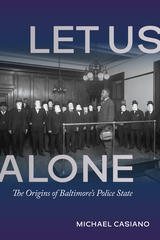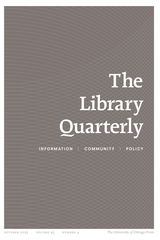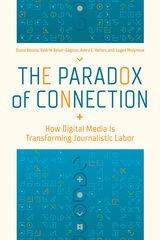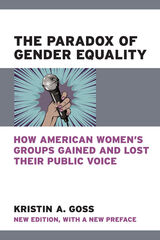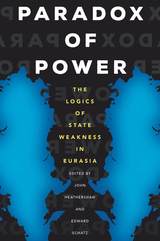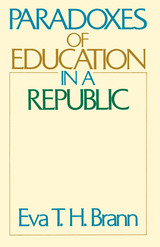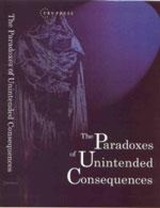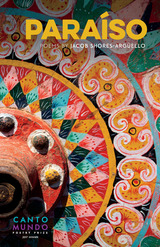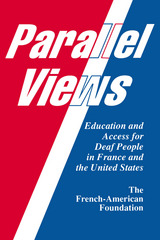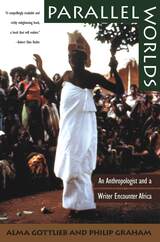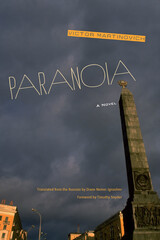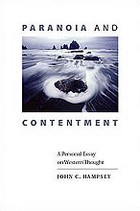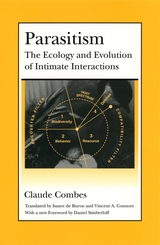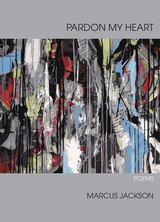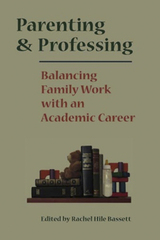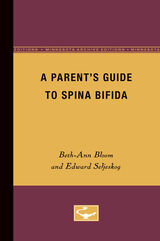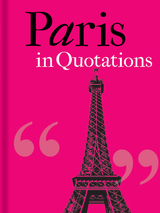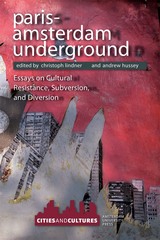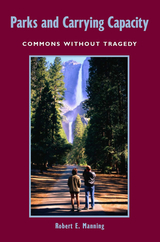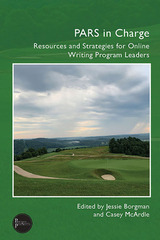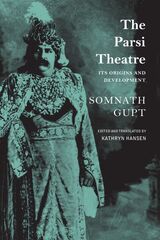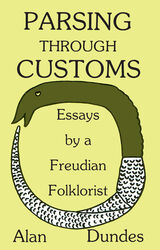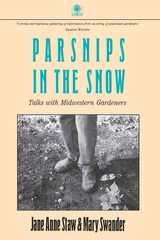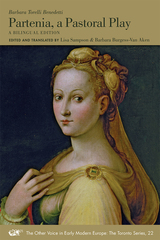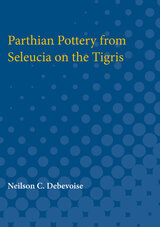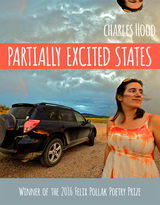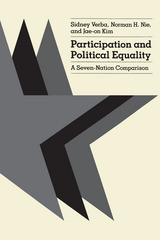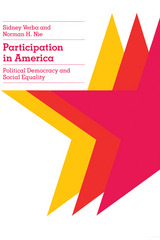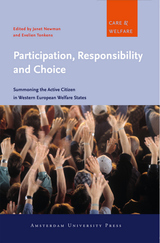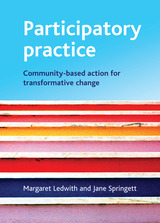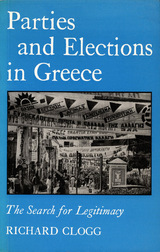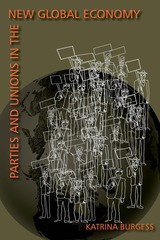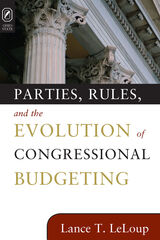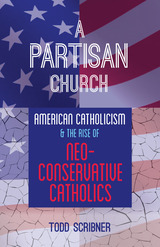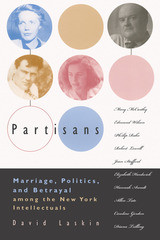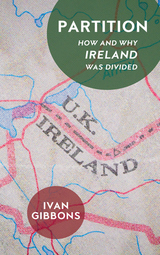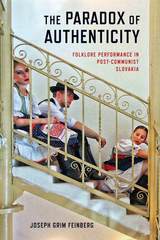 The Paradox of Authenticity: Folklore Performance in Post-Communist Slovakia
Joseph Grim Feinberg
University of Wisconsin Press, 2018 Observing the activities of urban folk dance enthusiasts in Slovakia, Joseph Grim Feinberg sets out to scrutinize the processes by which "authentic folklore" is identified, talked about, represented, reconstructed, reenacted, and revived.
In Slovakia and elsewhere in Eastern Europe after World War II, Communist governments promoted folklore revivals and staged performances of song and dance as representations of "the people." When the Communists fell from power in Slovakia in 1989, folklore was also discredited in the eyes of many. By the early twenty-first century, however, a new generation launched a movement to revive folklore's reputation and reintroduce it to a broad public.
Weaving together personal narrative, ethnographic analysis, and philosophical reflection, Feinberg examines the aspirations and difficulties of young folk dance devotees as they recognize that authenticity is more easily prized than achieved. He sheds new light on the problems of specialized performance and broad participation, the uneasy relationship between folklore and the public sphere, and the paradoxical pursuit of authenticity in the modern world.
 The Paradox of Being: Truth, Identity, and Images in Daoism
Poul Andersen
Harvard University Press, 2019 The question of truth has never been more urgent than today, when the distortion of facts and the imposition of pseudo-realities in the service of the powerful have become the order of the day. In The Paradox of Being Poul Andersen addresses the concept of truth in Chinese Daoist philosophy and ritual. His approach is unapologetically universalist, and the book may be read as a call for a new way of studying Chinese culture, one that does not shy away from approaching “the other” in terms of an engagement with “our own” philosophical heritage.
The basic Chinese word for truth is zhen, which means both true and real, and it bypasses the separation of the two ideas insisted on in much of the Western philosophical tradition. Through wide-ranging research into Daoist ritual, both in history and as it survives in the present day, Andersen shows that the concept of true reality that informs this tradition posits being as a paradox anchored in the inexistent Way (Dao). The preferred way of life suggested by this insight consists in seeking to be an exception to ordinary norms and rules of behavior which nonetheless engages what is common to us all.
The Paradox of Blackness in African American Vampire Fiction
Jerry Rafiki Jenkins
Ohio State University Press, 2019 One of the first books to examine representations of black vampires exclusively, The Paradox of Blackness in African American Vampire Fiction not only refutes the tacit assumption that there is a lack of quality African American vampire fiction worthy of study or reading but also proposes that the black vampires help to answer an important question: Is there more to being black than having a black body? As symbols of immortality, the black vampires in Jewelle Gomez’s The Gilda Stories, Tananarive Due’s My Soul to Keep, Brandon Massey’s Dark Corner, Octavia Butler’s Fledgling,and K. Murry Johnson’s Image of Emeralds and Chocolate help to identify not only the notions of blackness that should be kept alive or resurrected in the African American community for the twenty-first century but also the notions of blackness that should die or remain dead.
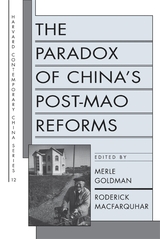 The Paradox of China’s Post-Mao Reforms
Merle Goldman
Harvard University Press, 1999 China’s bold program of reforms launched in the late 1970s—the move to a market economy and the opening to the outside world—ended the political chaos and economic stagnation of the Cultural Revolution and sparked China’s unprecedented economic boom. Yet, while the reforms made possible a rising standard of living for the majority of China’s population, they came at the cost of a weakening central government, increasing inequalities, and fragmenting society.
The essays of Barry Naughton, Joseph Fewsmith, Paul H. B. Godwin, Murray Scot Tanner, Lianjiang Li and Kevin J. O’Brien, Tianjian Shi, Martin King Whyte, Thomas P. Bernstein, Dorothy J. Solinger, David S. G. Goodman, Kristen Parris, Merle Goldman, Elizabeth J. Perry, and Richard Baum and Alexei Shevchenko analyze the contradictory impact of China’s economic reforms on its political system and social structure. They explore the changing patterns of the relationship between state and society that may have more profound significance for China than all the revolutionary movements that have convulsed it through most of the twentieth century.
The Paradox of Connection: How Digital Media Is Transforming Journalistic Labor
Diana Bossio, Valérie Bélair-Gagnon, Avery Holton, and Logan Molyneux
University of Illinois Press, 2024 Using a framework of online connection and disconnection, The Paradox of Connection examines how journalists’ practices are formed, negotiated, and maintained in dynamic social media environments. The interactions of journalists with the technological, social, and cultural features of online and social media environments have shaped new values and competencies--and the combination of these factors influence online work practices. Merging case studies with analysis, the authors show how the tactics of online connection and disconnection interact with the complex realities of working in today’s media environments. The result is an insightful portrait of fast-changing journalistic practices and their implications for both audiences and professional identities and norms.
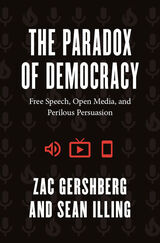 The Paradox of Democracy: Free Speech, Open Media, and Perilous Persuasion
Zac Gershberg and Sean Illing
University of Chicago Press, 2022 A thought-provoking history of communications that challenges ideas about freedom of speech and democracy.
At the heart of democracy lies a contradiction that cannot be resolved, one that has affected free societies since their advent: Though freedom of speech and media has always been a necessary condition of democracy, that very freedom is also its greatest threat. When new forms of communication arrive, they often bolster the practices of democratic politics. But the more accessible the media of a society, the more susceptible that society is to demagoguery, distraction, and spectacle. Tracing the history of media disruption and the various responses to it over time, Zac Gershberg and Sean Illing reveal how these changes have challenged democracy—often with unsettling effects.
The Paradox of Democracy captures the deep connection between communication and political culture, from the ancient art of rhetoric and the revolutionary role of newspapers to liberal broadcast media and the toxic misinformation of the digital public sphere. With clear-eyed analysis, Gershberg and Illing show that our contemporary debates over media, populism, and cancel culture are not too different from the democratic cultural experiences of the past. As we grapple with a fast-changing, hyper-digital world, they prove democracy is always perched precipitously on a razor’s edge, now as ever before.
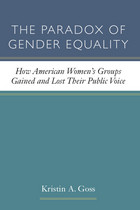 The Paradox of Gender Equality: How American Women's Groups Gained and Lost Their Public Voice
Kristin A. Goss
University of Michigan Press, 2013 Drawing on original research, Kristin A. Goss examines how women's civic place has changed over the span of more than 120 years, how public policy has driven these changes, and why these changes matter for women and American democracy. Suffrage, which granted women the right to vote and invited their democratic participation, provided a dual platform for the expansion of women's policy agendas. As measured by women's groups' appearances before the U.S. Congress, women's collective political engagement continued to grow between 1920 and 1960—when many conventional accounts claim it declined—and declined after 1980, when it might have been expected to grow. This waxing and waning was accompanied by major shifts in issue agendas, from broad public interests to narrow feminist interests. Goss suggests that ascriptive differences are not necessarily barriers to disadvantaged groups' capacity to be heard; that enhanced political inclusion does not necessarily lead to greater collective engagement; and that rights movements do not necessarily constitute the best way to understand the political participation of marginalized groups. She asks what women have gained — and perhaps lost — through expanded incorporation as well as whether single-sex organizations continue to matter in 21st-century America.
The Paradox of Gender Equality: How American Women's Groups Gained and Lost Their Public Voice
Kristin A. Goss
University of Michigan Press, 2020 Kristin A. Goss examines how women’s civic place has changed over the span of more than 120 years, how public policy has driven these changes, and why these changes matter for women and American democracy. As measured by women’s groups’ appearances before the U.S. Congress, women’s collective political engagement continued to grow between 1920 and 1960—when many conventional accounts claim it declined—and declined after 1980, when it might have been expected to grow.
Goss asks what women have gained, and perhaps lost, through expanded incorporation, as well as whether single-sex organizations continue to matter in 21st-century America.
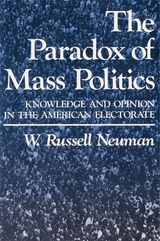 The Paradox of Mass Politics: Knowledge and Opinion in the American Electorate
W. Russell Neuman
Harvard University Press, 1986 A central current in the history of democratic politics is the tensions between the political culture of an informed citizenry and the potentially antidemocratic impulses of the larger mass of individuals who are only marginally involved in the political world. Given the public’s low level of political interest and knowledge, it is paradoxical that the democratic system works at all.
In The Paradox of Mass Politics W. Russell Neuman analyzes the major election surveys in the United States for the period 1948–1980 and develops for each a central index of political sophistication based on measures of political interest, knowledge, and style of political conceptualization. Taking a fresh look at the dramatic findings of public apathy and ignorance, he probes the process by which citizens acquire political knowledge and the impact of their knowledge on voting behavior.
The book challenges the commonly held view that politically oriented college-educated individuals have a sophisticated grasp of the fundamental political issues of the day and do not rely heavily on vague political symbolism and party identification in their electoral calculus. In their expression of political opinions and in the stability and coherence of those opinions over time, the more knowledgeable half of the population, Neuman concludes, is almost indistinguishable from the other half. This is, in effect, a second paradox closely related to the first.
In an attempt to resolve a major and persisting paradox of political theory, Neuman develops a model of three publics, which more accurately portrays the distribution of political knowledge and behavior in the mass population. He identifies a stratum of apoliticals, a large middle mass, and a politically sophisticated elite. The elite is so small (less than 5 percent) that the beliefs and behavior of its member are lost in the large random samples of national election surveys, but so active and articulate that its views are often equated with public opinion at large by the powers in Washington. The key to the paradox of mass politics is the activity of this tiny stratum of persons who follow political issues with care and expertise. This book is essential reading for concerned students of American politics, sociology, public opinion, and mass communication.
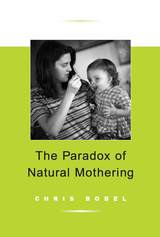 Paradox Of Natural Mothering
Chris Bobel
Temple University Press, 2001 Single or married, working mothers are, if not the norm, no longer exceptional. These days, women who stay at home to raise their children seem to be making a radical lifestyle choice. Indeed, the women at the center of The Paradox of Natural Mothering have renounced consumerism and careerism in order to reclaim home and family. These natural mothers favor parenting practices that set them apart from the mainstream: home birth, extended breast feeding, home schooling and natural health care. Regarding themselves as part of a movement, natural mothers believe they are changing society one child, one family at a time.
Author Chris Bobel profiles some thirty natural mothers, probing into their choices and asking whether they are reforming or conforming to women's traditional role. Bobel's subjects say that they have chosen to follow their nature rather than social imperatives. Embracing such lifestyle alternatives as voluntary simplicity and attachment parenting, they place family above status and personal achievement. Bobel illuminates the paradoxes of natural mothering, the ways in which these women resist the trappings of upward mobility but acquiesce to a kind of biological determinism and conventional gender scripts.
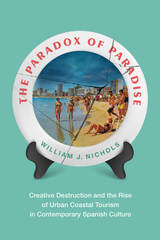 The Paradox of Paradise: Creative Destruction and the Rise of Urban Coastal Tourism in Contemporary Spanish Culture
William J. Nichols
Vanderbilt University Press, 2023 The Paradox of Paradise focuses on the trajectory of urban coastal tourism in Spain from the late Franco years to the present through the lens of Spanish cultural production. "Sun and fun" destinations like Torremolinos (located in the Costa del Sol) and Benidorm (located in the Costa Blanca) established a model for urban renewal that literally built the coasts to accommodate and expand foreign tourism as the driving force of the so-called Spanish Economic Miracle.
In addition to inserting the coasts into the scope of Iberian urban studies (typically dominated by studies of Madrid and Barcelona), this project breaks new ground by bringing to the fore unexplored cultural artifacts vital to the narrative of development along the coasts in Spain—in particular the ubiquitous tourist postcard, which advances not only the post-Franco economic miracle, but does so by highlighting the transformation of the actual Spanish landscape along its coasts.
The Paradox of Paradise features more than twenty-five striking images of coastal Spain in the throes of its own coming of age. Author William J. Nichols has unlocked a strange, self-conscious archive that tells us as much about our own age of advertising as it does about the hotels and resorts and people on display.
Paradox of Power: The Logics of State Weakness in Eurasia
John Heathershaw
University of Pittsburgh Press, 2024 “State weakness” is seen to be a widespread problem throughout Central Asia and other parts of postsocialist space, and more broadly in areas of the developing world. Challenging the widespread assumption that these “weak states” inevitably slide toward failure, Paradox of Power takes careful stock of the varied experiences of Eurasian states to reveal a wide array of surprising outcomes. The case studies show how states teeter but do not collapse, provide public goods against all odds, interact with societies in creative ways, utilize coercion effectively against internal opponents, and establish practices that are far more durable than the language of “weakness” would allow. While deepening our understanding of the phenomenon in Eurasia in particular, the essays also contribute to more general theories of state weakness.
 The Paradox of Progress: Economic Change, Individual Enterprise, and Politic Culture in Michigan, 1837-1878
Martin J. Hershock
Ohio University Press, 2003 Americans have long recognized the central importance of the nineteenth-century Republican party in preserving the Union, ending slavery, and opening the way for industrial capitalism. On the surface, the story seems straightforward -- the party's “free labor” ethos, embracing the opportunity that free soil presented for social and economic mobility, and condemning the danger that slavery in the territories posed for that mobility, foreshadowed the GOP's later devotion to unfettered enterprise and industrial capitalism. In reality, however, the narrative thread is not so linear. This work examines the contradiction that lay at the heart of the supremely influential ideology of the early Republican party. The Paradox of Progress explores one of the most profound changes in American history -- the transition from the anti-market, anti-monopoly, and democratic ideology of Jacksonian America to the business-dominated politics and unregulated excesses of Gilded Age capitalism.
Guiding this transformation was the nineteenth-century Republican party. Drawing heavily from both the pro-market commitments of the early Whig party and the anti-capitalist culture of Jackson's Democratic party, the early Republican party found itself torn between these competing values. Nowhere was this contested process more obvious or more absorbing than in Civil War-era Michigan, the birthplace of the Republican party.
In The Paradox of Progress, a fascinating look at the central factors underlying the history of the GOP, Martin Hershock reveals how in their determination to resolve their ideological dilemma, Republicans of the Civil War era struggled to contrive a formula that wo uld enable them to win popular elections and to model America's acceptance of Gilded Age capitalism.
 The Paradox of Progressive Thought
David W. Noble
University of Minnesota Press, 1958 The Paradox of Progressive Thought was first published in 1958. Minnesota Archive Editions uses digital technology to make long-unavailable books once again accessible, and are published unaltered from the original University of Minnesota Press editions. This book describes and analyzes an important aspect of American intellectual history, the climate of opinion in which nine leaders of progressive thought in America in the late nineteenth and early twentieth centuries were important creators and spokesmen. By closely examining the central ideas of these men, Professor Noble presents an illuminating view of a significant phase of the liberal tradition in America. At the same time, he questions many of the generally accepted views about the philosophical basis of traditional liberalism and demonstrates the paradox of progressive thought. The social philosophers whose writings and teachings he scrutinizes are Herbert Croly, long-time editor of the New Republic; James Mark Baldwin, psychologist and philosopher; Charles H. Cooley, author of Social Organization; F. H. Johnson, theologian whose name was linked with Darwinism; Henry Demarest Lloyd, reformer and newspaperman who attacked the evils of monopoly in his book Wealth and Commonwealth; Richard T. Ely, economist and early advocate of Christian socialism; Simon N. Patten, whose work The Premises of Political Economy lifted him to fame; Thorstein Veblen, whose Theory of the Leisure Class is a household word today; and Walter Rauschenbusch, the Baptist clergyman who wrote Christianity and the Social Crisis and Christianity and the Social Order. In addition, there is extensive consideration of the thought and influence of Carl L. Becker, the noted historian and analyst of thought and philosophy in action.
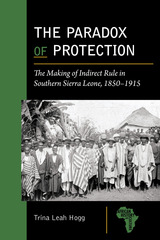 The Paradox of Protection: The Making of Indirect Rule in Southern Sierra Leone, 1850–1915
Trina Leah Hogg
Michigan State University Press, 2025 The Paradox of Protection: The Making of Indirect Rule in Southern Sierra Leone, 1850–1915 charts the history of protection to tell a new story about indirect rule in West Africa. Protection emerged as one of the central concepts through which Africans and Britons negotiated over law and economy in decades spanning informal and formal rule. Hogg shows how British protection schemes, an assemblage of written and unwritten legal strategies to safeguard British subjects and trade routes, created an unexpected legacy of insecurity by limiting and criminalizing traditional security measures. Tracing the history of the politics of protection reveals how African leaders who sought British alliances in their own long-standing disputes became increasingly vulnerable to physical and juridical violence. In the Protectorate, new forums like chieftaincy elections and criminal courts—common features of indirect rule—became spaces for Africans to assert claims to land and construct legitimacy. This book reveals how long-standing negotiations over protection shaped an unstable framework of colonial law and rule well into the twentieth century.
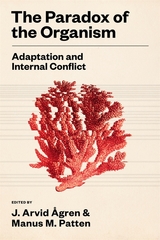 The Paradox of the Organism: Adaptation and Internal Conflict
J. Arvid Ågren
Harvard University Press, 2025 Leading evolutionary theorists and philosophers come together to understand how organisms persist, even as they’re riddled with internal conflict, from cancer cells to selfish genes.
How does a vast menagerie of organs, tissues, cells, and genes coalesce to form a unified organism? For centuries, biologists and philosophers have taken this astonishing feat for granted, treating it as a matter of divine will or evolutionary inevitability. Yet unity is hardly assured. From cancer cells to selfish genes, the body is riven by internal conflicts.
The Paradox of the Organism grapples with this puzzle. As the essays in this collection show, profound questions arise when we pierce the organismal veil and consider the self-replicating elements within. Is an organism really a cohesive agent that adapts to the ecosystem it inhabits? Or is an organism itself an ecosystem, within which individual components are engaged in a continuous arms race?
The answers have immediate implications: for understanding miscarriage, treating cancer, improving psychological health, and preserving biodiversity. Challenging fundamental precepts of evolutionary theory, The Paradox of the Organism offers an incisive account of life’s extraordinary success.
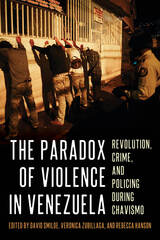 The Paradox of Violence in Venezuela: Revolution, Crime, and Policing During Chavismo
David Smilde, Verónica Zubillaga, and Rebecca Hanson
University of Pittsburgh Press, 2022 Crime and violence soared in twenty-first-century Venezuela even as poverty and inequality decreased, contradicting the conventional wisdom that these are the underlying causes of violence. The Paradox of Violence in Venezuela explains the rise of violence under both Hugo Chávez and Nicolás Maduro—leftist presidents who made considerable investment in social programs and political inclusion. Contributors argue that violence arose not from the frustration of inequality, or the needs created by poverty, but rather from the interrelated factors of a particular type of revolutionary governance, extraordinary oil revenues, a reliance on militarized policing, and the persistence of concentrated disadvantage. These factors led to dramatic but unequal economic growth, massive institutional and social change, and dysfunctional criminal justice policies that destabilized illicit markets and social networks, leading to an increase in violent conflict resolution. The Paradox of Violence in Venezuela reorients thinking about violence and its relationship to poverty, inequality, and the state.
 Paradoxes of Digital Disengagement: In Search of the Opt-Out Button
Adi Kuntsman and Esperanza Miyake
University of Westminster Press, 2022 Listen to authors Adi Kuntsman and Esperanza Miyake discuss collective data justice, the rights, refusals and ethics of digital (dis)engagement in this latest podcast from Lateral, the Journal of the Cultural Studies Association. https://csalateral.org/podcasts/positions/for-the-moment-i-am-not-scrolling-culp-skinner-kuntsman-miyake-karppi/ “The digital now thoroughly saturates our everyday lives to the point where it seems we are drowning. But is it possible to swim on our terms? This book thoughtfully examines this question, critically teasing apart the structures of power that permeate digital relations and charting pathways to a more just digital world. Essential reading for those who want to move beyond personal digital detoxes to challenge and transform our digital society and economy.” - Professor Rob Kitchin, author of The Data Revolution and Data Lives “The seductions of tech have ushered in the encroachment of technological solutions into policing, law enforcement and ever-widening systems of social regulation across the UK and Europe. This book marks a critical intervention – by conceptualising our understanding of the ways in which data and digital harms are systemically expended against the powerless. It is a must read for those of us who are concerned to resist the (digital) exclusion of the marginalised, and the (digital) banishment of the vulnerable.” - Dr Patrick Williams, author of Data-Driven Policing: The Hardwiring of Discriminatory Policing Practices Across Europe “While imaginaries of techno futures constructed by the Digital Lords of contemporary societies become self-fulfilling prophecies, we struggle to imagine a present and future free from digital coercion and exclusion. In their powerful interdisciplinary analysis, Adi Kuntsman and Esperanza Miyake delve into the personal, social, political and environmental costs of compulsory digitality. Rejecting a self-defeating naturalisation of digitality and digital inevitability Paradoxes of Digital Disengagement compellingly shows how collective digital justice is imperative in this future/present where the machine rules and people can become marginalized and excluded. A much-needed scholarly intervention that can inspire our collective thinking, research and praxis.” - Dr Benedetta Brevini, author of Is AI Good for the Planet? “Kuntsman and Miyake have written an engaging book. It offers a readable critique of enforced digitality and broadens the scope of disconnection studies. The detailed analyses of complicated documents are elegantly structured and thought-provoking.” - https://blogs.lse.ac.uk/lsereviewofbooks/2022/11/16/book-review-paradoxes-of-digital-disengagement-in-search-of-the-opt-out-button-by-adi-kuntsman-and-esperanza-miyake/ Life is increasingly governed and mediated through digital and smart technologies, platforms, big data and algorithms. However, the reasons, practices and impact of how the digital is used by different institutions are often deeply linked to social oppression and injustice. Similarly, the ability to resist these digital impositions is based on inequality and privilege. Challenging the ways in which we are increasingly dependent on the digital, this book raises a set of provocative and urgent questions: in a world of compulsory digitality is there an opt out button? Where, when, how, why and to whom is it available? Answering these questions has become even more relevant since the COVID-19 pandemic. In response, the book puts forward the concept of ‘digital disengagement’ which is explored across six key areas of digitisation: health; citizenship; education; consumer culture; labour; and the environment. Part I examines the difficulty of opting out of compulsory digitality in a world where most things are digital by default. From health apps, algorithmic decision-making to learning analytics, opting out comes with a set of troubling consequences. Part II turns to several examples of disconnection and disengagement. The chapters reveal how phenomena like digital detoxes, time-management apps and online ‘green’ spaces are co-opted by the very digital systems one is trying to resist. The book critiques issues relating to digital surveillance, algorithmic discrimination and biased tech, corporatisation and monetisation of data, exploitative digital labour, digitalised self-discipline and destruction of the environment. As an interdisciplinary piece of work, the book will be useful to any scholar and activist in Digital, Internet and Social Media Studies; Digital Sociology and Social Policy; Digital Health; Media, Popular and Communication Studies; Consumer culture; and Environment Studies.
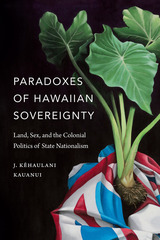 Paradoxes of Hawaiian Sovereignty: Land, Sex, and the Colonial Politics of State Nationalism
J. Kehaulani Kauanui
Duke University Press, 2018 In Paradoxes of Hawaiian Sovereignty J. Kēhaulani Kauanui examines contradictions of indigeneity and self-determination in U.S. domestic policy and international law. She theorizes paradoxes in the laws themselves and in nationalist assertions of Hawaiian Kingdom restoration and demands for U.S. deoccupation, which echo colonialist models of governance. Kauanui argues that Hawaiian elites' approaches to reforming and regulating land, gender, and sexuality in the early nineteenth century that paved the way for sovereign recognition of the kingdom complicate contemporary nationalist activism today, which too often includes disavowing the indigeneity of the Kanaka Maoli (Indigenous Hawaiian) people. Problematizing the ways the positing of the Hawaiian Kingdom's continued existence has been accompanied by a denial of U.S. settler colonialism, Kauanui considers possibilities for a decolonial approach to Hawaiian sovereignty that would address the privatization and capitalist development of land and the ongoing legacy of the imposition of heteropatriarchal modes of social relations.
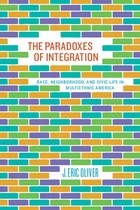 The Paradoxes of Integration: Race, Neighborhood, and Civic Life in Multiethnic America
J. Eric Oliver
University of Chicago Press, 2010 The United States is rapidly changing from a country monochromatically divided between black and white into a multiethnic society. The Paradoxes of Integration helps us to understand America’s racial future by revealing the complex relationships among integration, racial attitudes, and neighborhood life. J. Eric Oliver demonstrates that the effects of integration differ tremendously, depending on which geographical level one is examining. Living among people of other races in a larger metropolitan area corresponds with greater racial intolerance, particularly for America’s white majority. But when whites, blacks, Latinos, and Asian Americans actually live in integrated neighborhoods, they feel less racial resentment. Paradoxically, this racial tolerance is usually also accompanied by feeling less connected to their community; it is no longer "theirs." Basing its findings on our most advanced means of gauging the impact of social environments on racial attitudes, The Paradoxes of Integration sensitively explores the benefits and at times, heavily borne, costs of integration.
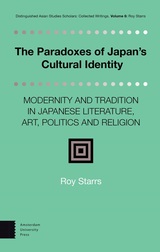 The Paradoxes of Japan's Cultural Identity: Modernity and Tradition in Japanese Literature, Art, Politics and Religion
Roy Starrs
Amsterdam University Press, 2023 Japan is widely regarded as having a unique culture and a strong national identity. Paradoxically, however, many basic elements of Japanese culture are not originally Japanese. Since the beginning of its history, Japan has been one of the world’s major importers of foreign cultures. Its culture was thoroughly "hybrid" long before that word became fashionable in contemporary global studies. But this does not mean that Japan’s culture lacks originality. The Japanese have always made strikingly original contributions, even improvements, to whatever they imported. Even more significantly, the "hybridity" of their culture produced ongoing tensions that served as a kind of creative dynamo for Japanese writers, artists, and intellectuals. This book explores the fundamental creative tension between the native and the foreign in many areas of Japanese culture, from politics and religion to art and literature – a tension also often interpreted as between tradition and modernity.
 Paradoxes of Migration in Tajikistan: Locating the Good Life
Elena Borisova
University College London, 2024 An intimate ethnographic account of migration and (im)mobility as a mundane part of people’s lives in the region of Tajikistan.
Tajikistan is one of the most remittance-dependent countries in the world. Moving beyond economistic push-pull narratives about post-Soviet migration, Paradoxes of Migration in Tajikistan foregrounds the experiences of those who “stay put” in the sending society and struggle to reproduce their moral communities. In this first book-length ethnography of migration in Tajikistan, Elena Borisova examines the role of mobility through historical and cultural ideas about the good life. She demonstrates how mobility becomes entwined with people’s efforts to become good, moral, and modern subjects. Addressing the complex relationship between the economic, imaginative, and moral aspects of (im)mobility, Borisova shows that mass migration from Tajikistan is as much a project of navigating ethical personhood as it is a quest for economic resources.
This book is a beautifully crafted ethnographic account that reveals how transnational regimes and structures of mobility, citizenship, and histories map out in the intimate spheres of the body, the person, and the family. It is a major contribution to contemporary migration research, which is mostly centered on Europe and North America, and to the field of Central Asian studies. Highly readable, it will be of interest to researchers of migration, (im)mobility and citizenship, and to scholars of all disciplines working on Central Asia.
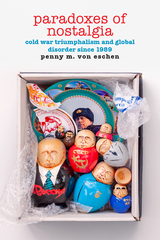 Paradoxes of Nostalgia: Cold War Triumphalism and Global Disorder since 1989
Penny M. Von Eschen
Duke University Press, 2022 In Paradoxes of Nostalgia Penny M. Von Eschen offers a sweeping examination of the cold war’s afterlife and the lingering shadows it casts over geopolitics, journalism, and popular culture. She shows how myriad forms of nostalgia across the globe—from those that posit a mythic national past to those critical of neoliberalism that remember a time when people believed in the possibility of a collective good—indelibly shape the post-cold war era. When Western triumphalism moved into the global South and former Eastern bloc spaces, many articulated a powerful sense of loss and a longing for stability. Innovatively bringing together diplomatic archives, museums, films, and video games, Von Eschen shows that as the United States continuously sought new enemies for its unipolar world, cold war triumphalism fueled the ascendancy of xenophobic right-wing nationalism and the embrace of authoritarian sensibilities in the United States and beyond. Ultimately, she demonstrates that triumphalist claims that capitalism and military might won the cold war distort the past and disfigure the present, undermining democratic values and institutions.
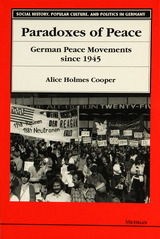 Paradoxes of Peace: German Peace Movements Since 1945
Alice Holmes Cooper
University of Michigan Press, 1996 Given the militarism of the Empire and Nazi Germany, why did postwar West Germany experience massive waves of peace protest in the 1950s, 1960s, and 1980s? How have postwar peace movements shaped German political culture? Will the cultural norms that frown on the use of military force constrain foreign policy in the new, unified, Germany? In Paradoxes of Peace, Alice Holmes Cooper traces the evolution of peace movements in West Germany (1945-90) and in united Germany since 1990. Cooper examines the domestic and international constellations that gave rise to the peace movements, the sources of their multi-faceted ideologies and participants, and their organizational structures and strategies. The author then investigates the peace movement's response to the challenges of the post-Cold War world. Whereas previous work on German peace movements has concentrated on one period of mobilization or on elite security-policy debates, this comprehensive study examines all phases of mobilization since 1945, taking into account the full spectrum of actors, movement organization and strategy, and the broad political, social, and economic environments spawning peace protest. Arguing that theories of resource mobilization, changes in values, and crises of modernity are insufficient to explain peace movements, Paradoxes of Peace tailors a "political process" approach to postwar German movements. It investigates the political opportunities--the changing domestic and international constellation--which most favored peace mobilization since 1945. It examines the process through which the peace movement transformed popular consciousness and created a peace constituency. It analyzes how German peace movements gradually built an indispensable organizational infrastructure autonomous from parties and other social institutions. Cooper argues that the convergence of these factors determined the movement's capacity to mobilize and have political impact and allowed these to grow over time. Alice Holmes Cooper is Assistant Professor of Government, University of Virginia.
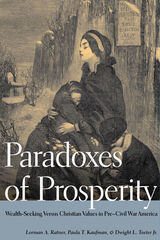 Paradoxes of Prosperity: Wealth Seeking in Pre-Civil War America
Lorman A. Ratner, Paula T. Kaufman and Dwight L. Teeter Jr.
University of Illinois Press, 2008 In the midst of the United States' immense economic growth in the 1850s, Americans worried about whether the booming agricultural, industrial, and commercial expansion came at the price of cherished American values such as honesty, hard work, and dedication to the common good. Was the nation becoming greedy, selfish, vulgar, and cruel? Was there such a thing as too much prosperity? At the same time, the United States felt the influence of the rise of popular mass-circulation newspapers and magazines and the surge in American book publishing. Concern over living correctly as well as prosperously was commonly discussed by leading authors and journalists, who were now writing for ever-expanding regional and national audiences. Women became more important as authors and editors, giving advice and building huge markets for women readers, with the magazine Godey's Lady's Book and novels by Susan Warner, Maria Cummins, and Harriet Beecher Stowe expressing women's views about the troubled state of society. Best-selling male writers--including novelist George Lippard, historian George Bancroft, and travel writer Bayard Taylor--were among those adding their voices to concerns about prosperity and morality and about America's place in the world. Writers and publishers discovered that a high moral tone could be exceedingly good for business. The authors of this book examine how popular writers and widely read newspapers, magazines, and books expressed social tensions between prosperity and morality. This study draws on that nationwide conversation through leading mass media, including circulation-leading newspapers, the New York Herald and the New York Tribune, plus prominent newspapers from the South and West, the Richmond Enquirer and the Cincinnati Enquirer. Best-selling magazines aimed at middle-class tastes, Harper's Magazine and the Southern Literary Messenger, added their voices, as did two leading business magazines.
The Paradoxes of Unintended Consequences
István Rév
Central European University Press, 2000 This volume of essays is dedicated to George Soros in honor of his seventieth birthday. The authors come from the different but intersecting worlds of academia, politics and business. The editors have chosen the title The Paradoxes of Unintended Consequences to encourage the contributors to adopt a dialogue-oriented approach and in reference to the example of Giordano Bruno, who was burnt at the stake 400 years ago for holding heretic views which were probably far more backward than the views of those condemning him. The idea behind this approach was that any complex social process or political attempt to change the lives of people will have unintended consequences, usually paradoxical ones. These consequences should force us to reconsider our original theory. The volume also contains a short biography of George Soros and a list of his published works and philanthropic initiatives
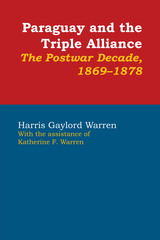 Paraguay and the Triple Alliance: The Postwar Decade, 1869-1878
By Harris Gaylord Warren
University of Texas Press, 1978 In the War of the Triple Alliance—the most terrible conflict in South American history—Paraguay was almost annihilated by the armed forces of Brazil, Argentina, and Uruguay. The chaotic postwar decade began with the Allied occupation of Asunción, which lasted seven years, and was marked by Brazilian-Argentine rivalry and interference in Paraguayan affairs and by the efforts of Paraguay’s governments to revive their stricken land, efforts often thwarted by corruption, factionalism, and revolutions. It ended with the arbitral award eliminating Argentina as a claimant to the Chaco Boreal and with the ascendancy of the Colorado Party, which dominated Paraguayan politics for most of the next century. This is the first book in any language that examines political, economic, and social developments to provide a well-integrated study of this significant and eventful period. It is based on archival resources, largely unused before, in England, the United States, Brazil, Argentina, and Paraguay, as well as on newspapers, books, pamphlets, and published documents in many libraries. As one historian has said, the study is “a masterpiece of sleuthing and historical synthesis.” It will be of interest not only to students of Paraguay but also to those concerned with Brazilian, Argentine, and Latin American history.
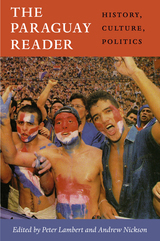 The Paraguay Reader: History, Culture, Politics
Peter Lambert and Andrew Nickson, eds.
Duke University Press, 2013 Hemmed in by the vast, arid Chaco to the west and, for most of its history, impenetrable jungles to the east, Paraguay has been defined largely by its isolation. Partly as a result, there has been a dearth of serious scholarship or journalism about the country. Going a long way toward redressing this lack of information and analysis, The Paraguay Reader is a lively compilation of testimonies, journalism, scholarship, political tracts, literature, and illustrations, including maps, photographs, paintings, drawings, and advertisements. Taken together, the anthology's many selections convey the country's extraordinarily rich history and cultural heritage, as well as the realities of its struggles against underdevelopment, foreign intervention, poverty, inequality, and authoritarianism. Most of the Reader is arranged chronologically. Weighted toward the twentieth century and early twenty-first, it nevertheless gives due attention to major events in Paraguay's history, such as the Triple Alliance War (1864–70) and the Chaco War (1932–35). The Reader's final section, focused on national identity and culture, addresses matters including ethnicity, language, and gender. Most of the selections are by Paraguayans, and many of the pieces appear in English for the first time. Helpful introductions by the editors precede each of the book's sections and all of the selected texts.
Paraíso: Poems by
Jacob Shores-Argüello
University of Arkansas Press, 2017 Winner, 2017 CantoMundo Poetry Prize
Paraíso, the first book in the new CantoMundo Poetry Series, which celebrates the work of Latino/a poets writing in English, is a pilgrimage against sorrow. Erupting from a mother’s death, the poems follow the speaker as he tries to survive his grief. Catholicism, family, good rum . . . these help, but the real medicine happens when the speaker pushes into the cloud forest alone.
In a Costa Rica far away from touristy beaches, we encounter bus trips over the cold mountains of the dead, drug dealers with beautiful dogs, and witches with cell phones. Science fuses with religion, witchcraft is joined with technology, and eventually grief transforms into belief.
Throughout, Paraíso defies categorization, mixing its beautiful sonnets with playful games and magic cures for the reader. In the process, moments of pure life mingle with the aftermath of a death.
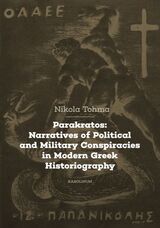 Parakratos: Narratives of Political and Military Conspiracies in Modern Greek Historiography
Nikola Tohma
Karolinum Press, 2025 Explores how “deep state” conspiracy theories in Greece influenced politics in the country during the Cold War.
This book analyzes the conspiratorial concept of parakratos (translated as “deep state” or “parastate”) as a Cold War parallel power mechanism that exerted a profound influence on the political landscape in post-civil war Greece (1949–1967). A well-known phenomenon to the Greek domestic public, the far right parakratos became the usual suspect for political murders, election rigging, and terrorism during this period. Despite its notoriety for numerous outrageous incidents, including the assassination of the left-wing politician Grigoris Lambrakis in Thessaloniki in 1963, the structure of the parakratos has eluded a comprehensive understanding, primarily due to the paucity of reliable sources and the absence of a scholarly consensus regarding its nature. Parakratos endeavors to problematize the current conception of parakratos by underscoring the capacity of the concept to not only represent but also define and transform the Greek domestic Cold War politics and our perception of it. Rather than seeking to explain the presumed conspiracies typically ascribed to the groups and members, the book aims to demonstrate how these events influenced the domestic and international politics of the era and thereby contributed to the establishment of a legacy of conspiracy theories as a means of political struggle. Moreover, it connects the Greek parakratos to the broader debate on parapolitics as well as the concepts of the dual state, the security state, and the deep state in various national contexts.
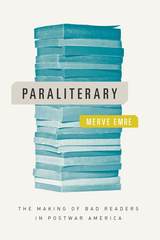 Paraliterary: The Making of Bad Readers in Postwar America
Merve Emre
University of Chicago Press, 2017 Literature departments are staffed by, and tend to be focused on turning out, “good” readers—attentive to nuance, aware of history, interested in literary texts as self-contained works. But the vast majority of readers are, to use Merve Emre’s tongue-in-cheek term, “bad” readers. They read fiction and poetry to be moved, distracted, instructed, improved, engaged as citizens. How should we think about those readers, and what should we make of the structures, well outside the academy, that generate them?
We should, Emre argues, think of such readers not as non-literary but as paraliterary—thriving outside the institutions we take as central to the literary world. She traces this phenomenon to the postwar period, when literature played a key role in the rise of American power. At the same time as American universities were producing good readers by the hundreds, many more thousands of bad readers were learning elsewhere to be disciplined public communicators, whether in diplomatic and ambassadorial missions, private and public cultural exchange programs, multinational corporations, or global activist groups. As we grapple with literature’s diminished role in the public sphere, Paraliterary suggests a new way to think about literature, its audience, and its potential, one that looks at the civic institutions that have long engaged readers ignored by the academy.
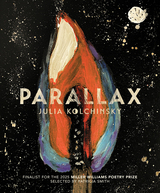 Parallax
Julia Kolchinsky
University of Arkansas Press, 2025 Finalist, 2025 Miller Williams Poetry Prize Julia Kolchinsky’s Parallax offers a lyrical narrative of parenting a neurodiverse child under the shadow of the ongoing war in Ukraine, the poet’s birthplace. As her child expresses a fascination with death and violence, Kolchinsky struggles to process the war unfolding far away, on the same soil where so many of her ancestors perished during the Holocaust. Anchored by a series of poems that look to the moon, this collection explores displaced perspectives and turns to the celestial to offer meditations on how elements formed in distant stars account for so much of our human DNA. In these poems, writes series editor Patricia Smith, Kolchinsky “clutches at a feeling of home that is both unfamiliar and deeply treasured, longs for all that was left behind, struggles to come to terms with the rampant violence devastating a landscape that still, in so many encouraging and heartbreaking ways, belongs to her.”
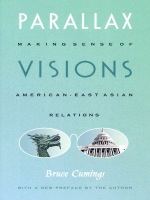 Parallax Visions: Making Sense of American-East Asian Relations at the End of the Century
Bruce Cumings
Duke University Press, 1999 In a work that synthesizes crucial developments in international relations at the close of the twentieth century, Bruce Cumings—a leading historian of contemporary East Asia—provides a nuanced understanding of how the United States has loomed over the modern history and culture of East Asia. By offering correctives to widely held yet largely inaccurate assessments of the affairs of this region, Parallax Visions shows how relations between the United States, Japan, Vietnam, North and South Korea, China, and Taiwan have been structured by their perceptions and misperceptions of each other. Using information based on thirty years of research, Cumings offers a new perspective on a wide range of issues that originated with the cold war—with particular focus on the possibly inappropriate collaboration between universities, foundations, and intelligence agencies. Seeking to explode the presuppositions that Americans usually bring to the understanding of our relations with East Asia, the study ranges over much of the history of the twentieth century in East Asian–American relations—Pearl Harbor, Hiroshima and Nagasaki, the Korean War, and more recent difficulties in U.S. relations with China and Japan. Cumings also rebuts U.S. media coverage of North Korea’s nuclear diplomacy in the 1990s and examines how experiences of colonialism and postcolonialism have had varying effects on economic development in each of these countries. Positing that the central defining experience of twentieth-century East Asia has been its entanglement first with British and Japanese imperialism, and then with the United States, Cumings ends with a discussion of how the situation could change over the next century as the economic and political global clout of the United States declines. Illuminating the sometimes self-deluded ideology of cold war America, Parallax Visions will engage historians, political scientists, and students and scholars of comparative politics and social theory, as well as readers interested in questions of modernity and the role of the United States in shaping the destinies of modernizing societies in Asia.
 Parallel Tracks: The Railroad and Silent Cinema
Lynne Kirby
Duke University Press, 1997 From its earliest days, the cinema has enjoyed a special kinship with the railroad, a mutual attraction based on similar ways of handling speed, visual perception, and the promise of a journey. Parallel Tracks is the first book to explore and explain this relationship in both historical and theoretical terms, blending film scholarship with railroad history. Describing the train as a mechanical double for the cinema, Lynne Kirby gives her romantic topic a compelling twist. She views the railroad/cinema romance in light of the technological and cultural instability underlying modernity and presents the railroad and cinema as complementary experiences that shaped the modern world and its subjects—the passengers and spectators who traveled through that world.
In wide-ranging and provocative analyses of dozens of silent films—icons of film history like The General and The Great Train Robbery as well as many that are rarely discussed—Kirby examines how trains and rail travel embodied concepts of spectatorship and mobility grounded in imperialism and the social, sexual, and racial divisions of modern Western culture. This analysis at the same time provides a detailed and largely unexamined history of the railroad in silent filmmaking. Kirby also devotes special attention to the similar ways in which the railroad and cinema structured the roles of men and women. As she demonstrates, these representations have had profound implications for the articulation of gender in our culture, a culture in some sense based on the machine as embodied by the train and the camera/projector.
Ultimately, this book reveals the profound and parallel impact that the railroad and the cinema have had on Western society and modern urban industrial culture. Parallel Tracks will be eagerly awaited by those involved in cinema studies, American studies, feminist theory, and the cultural study of modernity.
Parallel Worlds: An Anthropologist and a Writer Encounter Africa
Alma Gottlieb and Philip Graham
University of Chicago Press, 1994 This suspenseful and moving memoir of Africa recounts the experiences of Alma Gottlieb, an anthropologist, and Philip Graham, a fiction writer, as they lived in two remote villages in the rain forest of Cote d'Ivoire. With an unusual coupling of first-person narratives, their alternate voices tell a story imbued with sweeping narrative power, humility, and gentle humor. Parallel Worlds is a unique look at Africa, anthropological fieldwork, and the artistic process.
"A remarkable look at a remote society [and] an engaging memoir that testifies to a loving partnership . . . compelling."—James Idema, Chicago Tribune
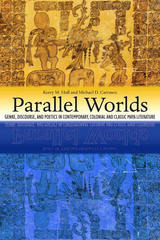 Parallel Worlds: Genre, Discourse, and Poetics in Contemporary, Colonial, and Classic Maya Literature
Kerry M. Hull
University Press of Colorado, 2012 Despite recent developments in epigraphy, ethnopoetics, and the literary investigation of colonial and modern materials, few studies have compared glyphic texts and historic Maya literatures. Parallel Worlds examines Maya writing and literary traditions from the Classic period until today, revealing remarkable continuities across time.
In this volume, contributions from leading scholars in Maya literary studies examine Maya discourse from Classic period hieroglyphic inscriptions to contemporary spoken narratives, focusing on parallelism to unite the literature historically. Contributors take an ethnopoetic approach, examining literary and verbal arts from a historical perspective, acknowledging that poetic form is as important as narrative content in deciphering what these writings reveal about ancient and contemporary worldviews.
Encompassing a variety of literary motifs, including humor, folklore, incantation, mythology, and more specific forms of parallelism such as couplets, chiasms, kennings, and hyperbatons, Parallel Worlds is a rich journey through Maya culture and pre-Columbian literature that will be of interest to students and scholars of anthropology, ethnography, Latin American history, epigraphy, comparative literature, language studies, indigenous studies, and mythology.
 Paralyzing Summer: The True Story of the Ann Arbor V.A. Hospital Poisonings and Deaths
Zibby Oneal and S. Martin Lindenauer
University of Michigan Press, 2016 In the summer of 1975, an alarming number of patients at the Ann Arbor Veterans Administration Hospital began experiencing mysterious respiratory failures that left ten dead and over thirty more clinging to life. Doctors struggled to determine the cause of the attacks, and further analysis revealed each of the victims’ intravenous drip bags had been contaminated with a powerful muscle relaxant named Pavulon—a drug traditionally used in hospitals when inserting patient breathing tubes in preparation for surgery. The discovery of Pavulon was particularly disturbing because hospital safeguards made it unlikely the chemical had been introduced to patients’ drip bags by mistake. This suggested deliberate poisoning, but with no apparent connection between the victims, the motive behind the crime was unclear. The tangled investigation that followed gripped the nation’s attention, particularly after the FBI narrowed its focus to two improbable suspects: a pair of well-liked nurses from the hospital’s intensive care unit. Both were of Filipino decent, and the national media speculated racism was a major factor in the scrutiny placed on the nurses. Drawing extensively from court documents, news coverage from the time, and interviews with participants, Zibby Oneal and S. Martin Lindenauer’s Paralyzing Summer presents a gripping account of the baffling case, following the incredible twists and turns that unfolded over a two and a half year period starting July 1975.
 Paramilitarism and Neoliberalism: Violent Systems of Capital Accumulation in Colombia and Beyond
Jasmin Hristov
Pluto Press, 2016 The people of Colombia have, for the last fifty years, been subject to a specific form of violence: paramilitarism. An embodiment of the underbelly of global capitalist accumulation, this form of pervasive violence expresses the exacerbation of social inequalities and class formation under capitalism. In Paramilitarism and Neoliberalism, Jasmin Hristov theorises this extreme expression in light of forced displacement, labour repression, subjugation of social movements, decentralisation of violence, drug trafficking and the emergence of a variety of para-institutional armed actors across Latin America.
The activities of paramilitary groups in the postdemobilisation era, their involvement in human rights violations, and their multilevel support networks inside major state institutions are documented, with a particular emphasis on violent dispossession and illegal land appropriation that has benefited agroindustries and mining enterprises. Hristov engages in a Marxist political economy approach, combined with a global sociological perspective, allowing for an expansive and deep-reaching understanding of paramilitarism as a phenomenon with many faces, ultimately illustrating how it is increasingly becoming the coercive counterpart of global capital.
 Paranatures in Culinary Culture: An Alimentary Ecology
Thomas R. Parker
University of Minnesota Press, 2025 Uncovering the intricate cultural threads that inform our dietary practices Paranatures in Culinary Culture embarks on a gastronomic odyssey, redefining foods we thought we knew and revealing the extraordinary stories of ordinary ingredients and the cultural forces shaping our diets. The book begins with a simple premise: to eat is to assimilate the outer world into the inner body, both physically and mentally. But what happens when this assimilation process goes awry? Thomas R. Parker reveals how culinary staples are not only elements of identity formation but also instruments of cultural disruption when their true nature emerges and challenges our preconceptions. Parker explores how certain foods—bread, oysters, pigs, cheese, and wine—can both create and destabilize narratives, unsettle assimilation, and decenter Western culinary traditions. Taking inspiration from architectural historian David Gissen’s concept of “subnature” and Michel Serres’s idea of the “parasite,” Parker develops the concept of paranatures: flavors, foods, and practices considered unpalatable by different societies at different times. He reveals how certain ordinary foods live parallel paranatural lives, addressing larger issues of colonial and postcolonial food theory and challenging long-held notions that cuisine was meant to uphold. Serving up a rich blend of history, culture, and gastronomy, Parker leads readers to perceive food as an adventure, inviting them to taste the untamed side of nature. He offers a thought-provoking invitation to reconceptualize the roles and narratives we assign to the natural world and its produce, allowing us to see food, nature, and ourselves in new ways.
Paranoia: A Novel
Victor Martinovich
Northwestern University Press, 2013 Immediately banned after it was published, Paranoia is a novel about how dictatorships survive by burrowing into the minds of those they rule, sowing distrust and blurring the boundaries between the state’s and the individual’s autonomy. Although Minsk and Belarus are never mentioned, they are clearly the author’s inspiration for the novel’s setting. The plot focuses on a doomed romance between a young man whose former lover has disappeared and a young woman whose other lover is the minister of state security. The novel evokes classic dissident literature while artfully depicting the post-Soviet, globalized world.
Paranoia, the Bomb, and 1950s Science Fiction Films
Cyndy Hendershot
University of Wisconsin Press, 1999 Cyndy Hendershot argues that 1950s science fiction films open a window on the cultural paranoia that characterized 1950s America, a phenomenon largely triggered by use of nuclear weapons during World War II. This study uses psychoanalytic theory to examine the various monsters that inhabit 1950s sci-fi movies—giant insects, prehistoric creatures, mutants, uncanny doubles, to name a few—which serve as metaphorical embodiments of a varied and complex cultural paranoia. Postwar paranoia may have stemmed from the bomb, but it came to correlate with a wider range of issues such as anti-communism, internal totalitarianism, scientific progress, domestic problems, gender roles, and sexuality.
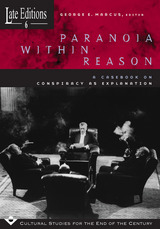 Paranoia within Reason: A Casebook on Conspiracy as Explanation
Edited by George E. Marcus
University of Chicago Press, 1999 Like the McCarthy era of the 1950s, there is a strong current of paranoid social thought as the end of the century approaches. Conspiracy theories abound, not only in extremist ideologies and groups, but in commerce, science, and economics-arenas where a paranoid style is least expected. A curiosity about paranoia at its most reasonable is at the root of this volume.
Some pieces develop conversations that reveal the post-Cold War situations of countries such as Italy, Russia, Slovenia, and the United States where conspiratorial explanations of national dramas seem to make sense. Other pieces tackle paranoia as a style of debate in such diverse realms as science, psychotherapy, and popular entertainment, where conspiracy theories emerge as a compelling way to address the inadequacies of rational expertise and organization in the face of immense changes that undermine them. Like all of the volumes in the Late Edition series, Paranoia Within Reason offers a provocative challenge to our ways of understanding the ongoing watershed changes that face us.
The Paranoid Style in American Politics: And Other Essays
Richard Hofstadter
Harvard University Press, 1996 "The distinguishing thing about the paranoid style is not that its exponents see conspiracies or plots here and there in history, but that they regard a 'vast' or 'gigantic' conspiracy as the motive force in historical events...The paranoid spokesman sees the fate of this conspiracy in apocalyptic terms--he traffics in the birth and death of whole worlds, whole political orders, whole systems of human values. He is always manning the barricades of civilization."
--From the book
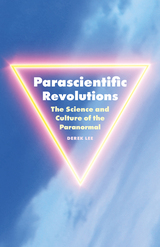 Parascientific Revolutions: The Science and Culture of the Paranormal
Derek Lee
University of Minnesota Press, 2025 Unraveling the hidden influence of the paranormal on science, literature, and belief
Telepathy, clairvoyance, precognition, and telekinesis: these attributes of the paranormal mind are widely dismissed as nonsense, but what can an exploration of such pseudoscientific phenomena tell us about accepted scientific and cultural thought? In Parascientific Revolutions, Derek Lee traces the evolution of psi epistemologies across the twentieth and twenty-first centuries to uncover how these ideas have migrated into scientific fields such as quantum physics and neurology, as well as diverse literary genres including science fiction, ethnic literature, and even government training manuals. Lee introduces the groundbreaking concept of “parascience,” a dynamic cultural space where ideas rejected by the scientific establishment blend with alternative strains of literary, mythic, and philosophical thought to regenerate and return to mainstream discourse. From early modernist works by James Joyce to postwar speculative fiction by Philip K. Dick to ethnofuturist narratives by Ruth Ozeki, Parascientific Revolutions demonstrates how cultural and intellectual currents reshape paranormal ideas over time. Examining psychic surveillance programs like Project Stargate and bizarre particles of extrasensory perception such as the psitron, Lee illustrates the ways paranormal concepts persist and evolve to influence culture. Presenting pseudoscience as an inevitable by-product of the scientific process, Parascientific Revolutions offers fresh insight into how the paranormal mind continually challenges our understanding of knowledge and belief. It invites readers to reconsider the boundaries between science and the unknown, revealing a world where speculative thought and empirical investigation are deeply intertwined. Retail e-book files for this title are screen-reader friendly with images accompanied by short alt text and/or extended descriptions.
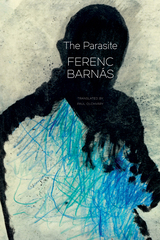 The Parasite
Ferenc Barnás
Seagull Books, 2020 Marked by powerful and evocative prose, Ferenc Barnás’s novel tells the fascinating story of a young man’s journey through his strange obsessions towards possible recovery. The unnamed narrator is the parasite, feeding off others’ ailments, but he is also a host who attracts people with the most peculiar manias. He confesses, almost amiably, his decadent attraction as a young adolescent to illnesses and hospitals. The real descent into his private, hallucinatory hell begins after his first sexual encounter; he becomes a compulsive masturbator, and then a compulsive fornicator. But to his horror, he realizes that casual sex is not casual at all for him—each one-night stand results in insane jealousy: he imagines previous lovers hovering over him every time he makes love to a woman.
When he gets to know a woman referred to as L., he thinks his demons may have finally subsided. But when he hears of her past, the jealousy returns. He seeks relief through writing—by weaving an imagined tale of L.’s amorous adventures. What will he do with this strange manuscript, and can it bring him healing?
A breathtaking blend of Dostoevskian visions, episodes of madness, and intellectual fervor, all delivered in precise, lucid prose, The Parasite is a novel that one cannot escape.
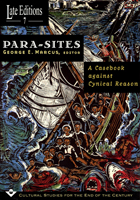 Para-Sites: A Casebook against Cynical Reason
Edited by George E. Marcus
University of Chicago Press, 2000 Para-Sites, the penultimate volume in the Late Editions series, explores how social actors located within centers of power and privilege develop and express a critical consciousness of their own situations. Departing from the usual focus of ethnography and cultural analysis on the socially marginalized, these pieces probe subjects who are undeniably complicit with powerful institutional engines of contemporary change. In each case, the possibility of alternative thinking or practices is in complex relation to the subject's source of empowerment.
These cases challenge the condition of cynicism that has been the favored mode of characterizing the mind-set of intellectuals and professionals, comfortable in their lives of middle-class consumption and work. In their effort to establish para-sites of critical awareness parallel to the levels of political and economic power at which they function, these subjects suggest that those who lead ordinary lives of modest power and privilege might not be parasites in relation to the systems they serve, but may be creating unique and independent critical perspectives.
Parasitism: The Ecology and Evolution of Intimate Interactions
Claude Combes
University of Chicago Press, 2001 In Parasitism, Claude Combes explores the fascinating adaptations parasites have developed through their intimate interactions with their hosts. He begins with the biology of parasites—their life cycles, habitats, and different types of associations with their hosts. Next he discusses genetic interactions between hosts and parasites, and he ends with a section on the community ecology of parasites and their role in the evolution of their hosts. Throughout the book Combes enlivens his discussion with a wealth of concrete examples of host-parasite interactions.
ParaSpheres
Edited by Ken E. Keegan and Rusty Morrison
Omnidawn, 2006 Extending Beyond the Spheres of Literary and Genre Fiction | Fabulist and New Wave Fabulist Stories
With Fabulist and New Wave Fabulist stories by 44 Literary and Genre authors, this anthology follows in the footsteps of Conjunctions 39 (from Bard College, New York), the Fall 2002 issue, which focused on New Wave Fabulist writers.
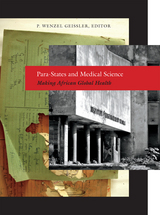 Para-States and Medical Science: Making African Global Health
P. Wenzel Geissler, editor
Duke University Press, 2015 In Para-States and Medical Science, P. Wenzel Geissler and the contributors examine how medicine and public health in Africa have been transformed as a result of economic and political liberalization and globalization, intertwined with epidemiological and technological changes. The resulting fragmented medical science landscape is shaped and sustained by transnational flows of expertise and resources. NGOs, universities, pharmaceutical companies and other nonstate actors now play a significant role in medical research and treatment. But as the contributors to this volume argue, these groups have not supplanted the primacy of the nation-state in Africa. Although not necessarily stable or responsive, national governments remain crucial in medical care, both as employers of health care professionals and as sources of regulation, access, and – albeit sometimes counterintuitively - trust for their people. “The state” has morphed into the “para-state” — not a monolithic and predictable source of sovereignty and governance, but a shifting, and at times ephemeral, figure. Tracing the emergence of the “global health” paradigm in Africa in the treatment of HIV, malaria, and leprosy, this book challenges familiar notions of African statehood as weak or illegitimate by elaborating complex new frameworks of governmentality that can be simultaneously functioning and dysfunctional.
Contributors. Uli Beisel, Didier Fassin, P. Wenzel Geissler, Rene Gerrets, Ann Kelly, Guillaume Lachenal, John Manton, Lotte Meinert, Vinh-Kim Nguyen, Branwyn Poleykett, Susan Reynolds Whyte
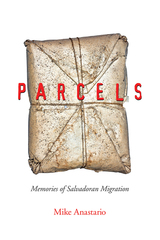 Parcels: Memories of Salvadoran Migration
Mike Anastario
Rutgers University Press, 2019 In light of new proposals to control undocumented migrants in the United States, Parcels prioritizes rural Salvadoran remembering in an effort to combat the collective amnesia that supports the logic of these historically myopic strategies. Mike Anastario investigates the social memories of individuals from a town he refers to as “El Norteño,” a rural municipality in El Salvador that was heavily impacted by the Salvadoran Civil War, which in turn fueled a mass exodus to the United States. By working with two viajeros (travelers) who exchanged encomiendas (parcels containing food, medicine, documents, photographs and letters) between those in the U.S. and El Salvador, Anastario tells the story behind parcels and illuminates their larger cultural and structural significance. This narrative approach elucidates key arguments concerning the ways in which social memory permits and is shaped by structural violence, particularly the U.S. actions and policies that have resulted in the emotional and physical distress of so many Salvadorans. The book uses analyses of testimonies, statistics, memories of migration, the war and, of course, the many parcels sent over the border to create an innovative and necessary account of post-Civil War El Salvador.
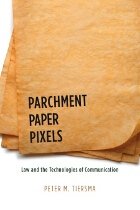 Parchment, Paper, Pixels: Law and the Technologies of Communication
Peter M. Tiersma
University of Chicago Press, 2010 Technological revolutions have had an unquestionable, if still debatable, impact on culture and society—perhaps none more so than the written word. In the legal realm, the rise of literacy and print culture made possible the governing of large empires, the memorializing of private legal transactions, and the broad distribution of judicial precedents and legislation. Yet each of these technologies has its shadow side: written or printed texts easily become static and the textual practices of the legal profession can frustrate ordinary citizens, who may be bound by documents whose implications they scarcely understand. Parchment, Paper, Pixels offers an engaging exploration of the impact of three technological revolutions on the law. Beginning with the invention of writing, continuing with the mass production of identical copies of legal texts brought about by the printing press, and ending with a discussion of computers and the Internet, Peter M. Tiersma traces the journey of contracts, wills, statutes, judicial opinions, and other legal texts through the past and into the future. Though the ultimate effects of modern technologies on our legal system remain to be seen, Parchment, Paper, Pixels offers readers an insightful guide as to how our shifting forms of technological literacy have shaped and continue to shape the practice of law today.
Pardon My Heart: Poems
Marcus Jackson
Northwestern University Press, 2018 Winner of the 2019 Ohioana Book Award for Poetry
Pardon My Heart is an exploration of love in the contemporary African American ethos. In this lyrically complex collection, the speakers and subjects—the adult descendants of the Great Migration—reckon with past experiences and revelatory, hard-earned ideas about race and class.
With a compelling blend of narrative, musicality, and imagery, Jackson’s poems span a multitude of scenes, landscapes, and sensations. Pardon My Heart examines intimacy, memory, grief, and festivity while seeking out new, reflective sectors within emotion and culture. By means of concise portraiture and sonic vibrancy, Jackson’s poems ultimately express the urgency and pliability of the human soul.
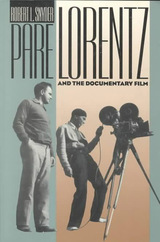 Pare Lorentz and Documentary Film
Robert L. Snyder
University of Nevada Press, 2001 In October 1990, the Library of Congress announced its list of twenty-five culturally, historically, and aesthetically significant films to be added to the National Film Registry. The River, written and directed by Pare Lorentz in 1937, was inducted along with Scorsese's Raging Bull and Capra's It's a Wonderful Life.
Originally published in 1967, Pare Lorentz and the Documentary Film was the first book devoted exclusively to the works of Lorentz. Robert L. Snyder focuses on the films Lorentz made for the United State Film Service--The River, The Plow That Broke the Plains, and The Fight for Life. With the exception of a few vintage World War I training films, these three films were the first made by the government for general viewing by the American public.
It was Lorentz's idea to produce a series of films about the pressing problems facing the nation during the Great Depression--drought, floods, poverty, and slums. With an initial budget of $6,000 and the enormous drive and energy of a young director who had never made a motion picture, the beignnings were anything but auspicious. The results, however, were sensational and often made national headlines.
In spite of inadequate budgets, bureaucratic red tape, and professional jealousies, Lorentz developed new filming techniques and set new standards in his documentaries. Snyder has written a perceptive account of the production of these classic films and the contemporary reaction to them, along with a critical evaluation of each work. This is an important book for anyone interested in documentary film and the history of the Depression era.
 The Parent as Citizen: A Democratic Dilemma
Brian Duff
University of Minnesota Press, 2010 When leaders and citizens in the United States articulate their core political beliefs, they often do so in terms of parenthood and family. But while the motives might be admirable, the results of such thinking are often corrosive to our democratic goals. In The Parent as Citizen, Brian Duff reveals how efforts to make the experience of parenthood inform citizenship contribute to the most persistent problems in modern democracy and democratic theory.
Duff explains how influential theories of democratic citizenship rely on the metaphor of parenthood to help individuals rise to the challenges of politics, and demonstrates that this reliance has unintended consequences. When parenthood is imagined to instill confidence in political virtue, it uncovers insecurity. When parenthood is believed to inculcate openness to change, it produces fundamentalism. Duff develops this argument through original readings of four theorists of citizenship: Jean-Jacques Rousseau, Friedrich Nietzsche, Richard Rorty, and Cornel West-readings that engage the ways in which these theorists incorporated their personal history into their political thought. In showing how problems that plagued canonical theorists of citizenship still trouble contemporary thinkers and citizens alike, Duff's insights are deeply relevant to present-day politics.
 Parent Education: A Survey of the Minnesota Program
Edith Davis
University of Minnesota Press, 1939
Parent Education: A Survey of the Minnesota Program was first published in 1939. Minnesota Archive Editions uses digital technology to make long-unavailable books once again accessible, and are published unaltered from the original University of Minnesota Press editions.Institute of Child Welfare Monograph Series, Number 17The University of Minnesota Child Welfare Institute surveys its program in this volume, which describes the organization and development of its study groups and makes a thoroughgoing analysis of the amount and type of information on child training acquired by 23,000 parents who attended classes in cities and rural communities throughout the state over a period of six years.The effect of attendance at the study groups was measured by tests administered before and after instruction, recording changes in the mothers’ attitudes toward various behavior traits – delinquent, neurotic, and personal-social – in boys and girls from five to fifteen years of age.From the group study records, and aided by their own long experience in parental education, the authors work out conclusions and suggestions that will be of value to psychologists and persons organizing or carrying on similar programs.
 Parent Education: The Northwest Conference on Child Health and Parent Education
Richard Beard
University of Minnesota Press, 1927
Parent Education was first published in 1927. Minnesota Archive Editions uses digital technology to make long-unavailable books once again accessible, and are published unaltered from the original University of Minnesota Press editions.This volume, containing papers read before the Northwest Conference on Child Health and Parent Education in 1927, includes a foreword by Lotus D. Coffman, President of the University of Minnesota. Parents who realize that “instinct” is insufficient equipment for fulfilling their responsibilities toward their children, and all others interested in the welfare of children will fund much valuable assistance in this collection of twenty-two papers.The contributors include such nationally known experts as: Henry F. Helmholz, Mayo Clinic; George Draper, Columbia University; Lydia J. Roberts, University of Chicago; Bird T. Baldwin, University of Iowa; Smiley Blanton, Vassar College; and Max Seham, Richard E. Scammon, and John E. Anderson, of the University of Minnesota.
 Parent Trip: Unexpected Roads to Form a Family
Anndee Hochman
Temple University Press, 2026 Families are created through conception, adoption, fostering and family-blending. As a Philadelphia Inquirer columnist for nearly a decade, Anndee Hochman interviewed hundreds of parents—older and younger, single and coupled, straight and queer—about the paths they forged and the obstacles they faced on the road to form a family. Parent Trip is Hochman’s collection of these poignant, wry, and complicated stories.
Hochman recounts the fraught emotions of couples struggling with infertility, the joy of a single gay man becoming a father in his forties, and the anxiety of people waiting for the adoption worker to call with good news. Parent Trip tells of sperm donors and gestational surrogates, midwives and miscarriages; it chronicles how children prompt parents to recalibrate their lives.
In personal essays that weave throughout the profiles, Hochman connects her interviewees’ lives to the love, heartbreak, and uncertainty in her own path to parenthood. Through myriad mundane and extraordinary moments, Parent Trip not only chronicles the magic and labor of childrearing, it also celebrates the infinite ways real families come to be.
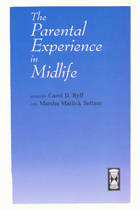 The Parental Experience in Midlife
Edited by Carol D. Ryff and Marsha Mailick Seltzer
University of Chicago Press, 1996 Most adults experience parenthood. But the longest period of the parental experience—when children grow into adolescence and young adulthood and parents themselves are not yet elderly—is the least understood. In this groundbreaking volume, distinguished scholars from anthropology, demography, economics, psychology, social work, and sociology explore the uncharted years of midlife parenthood. The authors employ a rich array of theory and methods to address how the parental experience affects the health, well-being, and development of individuals. Collectively, they look at the time when parents watch offspring grow into adulthood and begin to establish adult-to-adult relationships with their children.
With a strong emphasis on the diversity of midlife parenting, including sociodemographic variations and specific parent or child characteristics such as single parenting or raising a child with a disability, this volume presents for the first time the complex factors that influence the quality of the midlife parenting experience.
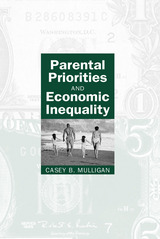 Parental Priorities and Economic Inequality
Casey B. Mulligan
University of Chicago Press, 1997 What determines whether children grow up to be rich or poor? Arguing that parental actions are some of the most important sources of wealth inequality, Casey B. Mulligan investigates the transmission of economic status from one generation to the next by constructing an economic model of parental preferences.
In Mulligan's model, parents determine the degree of their altruistic concern for their children and spend time with and resources on them accordingly—just as they might make choices about how they spend money. Mulligan tests his model against both old and new evidence on the intergenerational transmission of consumption, earnings, and wealth, including models that emphasize "financial constraints." One major prediction of Mulligan's model confirmed by the evidence is that children of wealthy parents typically spend more than they earn.
Mulligan's innovative approach can also help explain other important behavior, such as charitable giving and "corporate loyalty," and will appeal to a wide range of quantitatively oriented social scientists and sociobiologists.
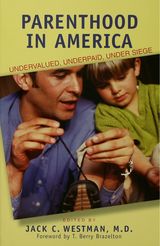 Parenthood In America: Undervalued, Underpaid, Under Siege
Jack C. Westman, M.D.
University of Wisconsin Press, 2001 Our society is engaged in heated debates about family values, child care, education, and the future of children. Largely missing from these debates is any serious discussion of the complex vocation we call "parenthood." This book recognizes parenthood as a lifelong process in which parents and children grow together. The distinguished contributors call for families, employers, communities, government, and society to give parents real help with their day-to-day concerns and challenges.
Parenthood in America brings the insights of experts in child development, education, health, media studies, economics, history, sociology, and human services to bear on practical aspects of childrearing and on the kinds of policies that have a real effect on parenting. In response to the stresses of parenthood today, they call for:
o family-friendly workplaces and decent childcare options
o pediatric health care for all
o programs that aid children’s development as well as their physical health
o recognition by professionals of parents’ expert knowledge about their own children
o alternatives to vapid or violent games and TV programs
o prioritization of time for family meals, talks, chores, and activities
o valuing of caring relationships above wealth and possessions
o appreciation of cultural and religious diversity
o supportive networks among parents, teachers, pediatricians, and childcare providers.
Parenting and Professing: Balancing Family Work with an Academic Career
Rachel Hile Bassett
Vanderbilt University Press, 2005 Featuring many personal accounts, the twenty-four essays in this collection explore the challenges and possibilities confronting those, especially women, who combine parenting and academic work. Written by a diverse group of educators who present a real-world variety of situations, the collection also includes ideas for change at the individual, interpersonal, policy, and system levels.
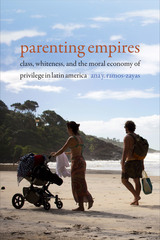 Parenting Empires: Class, Whiteness, and the Moral Economy of Privilege in Latin America
Ana Yolanda Ramos-Zayas
Duke University Press, 2020 In Parenting Empires, Ana Y. Ramos-Zayas focuses on the parenting practices of Latin American urban elites to analyze how everyday experiences of whiteness, privilege, and inequality reinforce national and hemispheric idioms of anti-corruption and austerity. Ramos-Zayas shows that for upper-class residents in the affluent neighborhoods of Ipanema (Rio de Janeiro) and El Condado (San Juan), parenting is particularly effective in providing moral grounding for neoliberal projects that disadvantage the overwhelmingly poor and racialized people who care for and teach their children. Wealthy parents in Ipanema and El Condado cultivate a liberal cosmopolitanism by living in multicultural city neighborhoods rather than gated suburban communities. Yet as Ramos-Zayas reveals, their parenting strategies, which stress spirituality, empathy, and equality, allow them to preserve and reproduce their white privilege. Defining this moral economy as “parenting empires,” she sheds light on how child-rearing practices permit urban elites in the Global South to sustain and profit from entrenched social and racial hierarchies.
 Parenting for Primates
Harriet J. Smith
Harvard University Press, 2005 What parent hasn’t wondered “What do I do now?” as a baby cries or a teenager glares? Making babies may come naturally, but knowing how to raise them doesn’t. As primatologist-turned-psychologist Harriet J. Smith shows in this lively safari through the world of primates, parenting by primates isn’t instinctive, and that’s just as true for monkeys and apes as it is for humans.
In this natural history of primate parenting, Smith compares parenting by nonhuman and human primates. In a narrative rich with vivid anecdotes derived from interviews with primatologists, from her own experience breeding cotton-top tamarin monkeys for over thirty years, and from her clinical psychology practice, Smith describes the thousand and one ways that primate mothers, fathers, grandparents, siblings, and even babysitters care for their offspring, from infancy through young adulthood.
Smith learned the hard way that hand-raised cotton-top tamarins often mature into incompetent parents. Her observation of inadequate parenting by cotton-tops plus her clinical work with troubled human families sparked her interest in the process of how primates become “good-enough” parents. The story of how she trained her tamarins to become adequate parents lays the foundation for discussions about the crucial role of early experience on parenting in primates, and how certain types of experiences, such as anxiety and social isolation, can trigger neglectful or abusive parenting.
Smith reveals diverse strategies for parenting by primates, but she also identifies parenting behaviors crucial to the survival and development of primate youngsters that have stood the test of time.
 Parenting on the Frontlines: Stories of Love, Loss, and Wonder
Kelly Cooper Paradis
Michigan Publishing, 2023 Each day of working parenthood is a rollercoaster of success and failure. My child ate a carrot! Then spit it out on the dog. I got to work on time! But there is a mystery stain on my dress shirt and this Tide stick is definitely making it worse. Also yes, that was “Baby Shark” I was humming while accidentally unmuted on the Zoom call, and no, I am not going to be able to sew an octopus costume from scratch by Friday. Please tell me there is something available at Target. As a parent, we live through levels of both joy and sorrow that we didn’t even know existed before. And we wonder—is it only me? Am I alone in this? In Parenting on the Frontlines, we explore both the lighter and heavier sides of working parenthood. The stories shared here are written by healthcare workers at Michigan Medicine, but all caregivers will find pieces to which they can relate. Most importantly, we want you to know that you are not alone on your journey, no matter where it takes you.
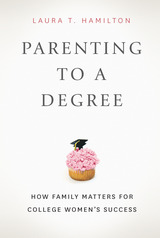 Parenting to a Degree: How Family Matters for College Women's Success
Laura T. Hamilton
University of Chicago Press, 2016 Helicopter parents—the kind that continue to hover even in college—are one of the most ridiculed figures of twenty-first-century parenting, criticized for creating entitled young adults who boomerang back home. But do involved parents really damage their children and burden universities? In this book, sociologist Laura T. Hamilton illuminates the lives of young women and their families to ask just what role parents play during the crucial college years.
Hamilton vividly captures the parenting approaches of mothers and fathers from all walks of life—from a CFO for a Fortune 500 company to a waitress at a roadside diner. As she shows, parents are guided by different visions of the ideal college experience, built around classed notions of women’s work/family plans and the ideal age to “grow up.” Some are intensively involved and hold adulthood at bay to cultivate specific traits: professional helicopters, for instance, help develop the skills and credentials that will advance their daughters’ careers, while pink helicopters emphasize appearance, charm, and social ties in the hopes that women will secure a wealthy mate. In sharp contrast, bystander parents—whose influence is often limited by economic concerns—are relegated to the sidelines of their daughter’s lives. Finally, paramedic parents—who can come from a wide range of class backgrounds—sit in the middle, intervening in emergencies but otherwise valuing self-sufficiency above all.
Analyzing the effects of each of these approaches with clarity and depth, Hamilton ultimately argues that successfully navigating many colleges and universities without involved parents is nearly impossible, and that schools themselves are increasingly dependent on active parents for a wide array of tasks, with intended and unintended consequences. Altogether, Parenting to a Degree offers an incisive look into the new—and sometimes problematic—relationship between students, parents, and universities.
 Parenting While PhDing: Surviving and Improving the Working Conditions of Graduate Student Parents
Jackie Hoermann-Elliott
Rutgers University Press, 2025 Being a PhD student is not easy. Navigating the highly competitive world of academia while working hard for little or no pay would be stressful for anyone—but it’s especially challenging for graduate students who are also parents.
Featuring contributions from more than forty current and former graduate students raising children, Parenting While PhDing offers valuable advice for students and administrators. Parents will get practical recommendations on both child care and self-care, learning how to form supportive personal and professional networks while establishing a healthy work/life balance. The collection also offers thoughtful suggestions on how to make graduate programs less toxic and more inclusive.
Recognizing that not all graduate students have similar backgrounds or needs, Parenting While PhDing features a diverse range of viewpoints, including queer, trans, disabled, BIPOC, immigrant, and first-generation college students. The authors represent a variety of disciplines, from the natural and social sciences to the humanities and health care professions. Together, they share fresh perspectives on the experiences of graduate students with children and offer strategies they can use to navigate the dual pressures of the academy and parenting.
Parents and Peers in Social Development: A Sullivan-Piaget Perspective
James Youniss
University of Chicago Press, 1980 Most studies of social development in children have relied on the assumption that adults' instructions to children pass on knowledge of the rules of behavior which govern and preserve society. In this volume, James Youniss argues that the child's relations with his or her friends and peers make a distinctive and critically important contribution to social development. While the child's relations with parents and other adults provide a sense of order and authority, peer relations are a source of sensitivity, self-understanding, and interpersonal cooperation.
Following a discussion of the views of Harry Stack Sullivan and Jean Piaget, whose theories are synthesized in Youniss's perspective, Youniss presents a wealth of empirical data from studies in which children describe their own views of their two social worlds.
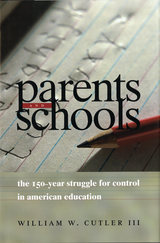 Parents and Schools: The 150-Year Struggle for Control in American Education
William W. Cutler III
University of Chicago Press, 2000 Who holds ultimate authority for the education of America's children—teachers or parents? Although the relationship between home and school has changed dramatically over the decades, William Cutler's fascinating history argues that it has always been a political one, and his book uncovers for the first time how and why the balance of power has shifted over time. Starting with parental dominance in the mid-nineteenth century, Cutler chronicles how schools' growing bureaucratization and professionalization allowed educators to gain increasing control over the schooling and lives of the children they taught. Central to his story is the role of parent-teacher associations, which helped transform an adversarial relationship into a collaborative one. Yet parents have also been controlled by educators through PTAs, leading to the perception that they are "company unions."
Cutler shows how in the 1920s and 1930s schools expanded their responsibility for children's well-being outside the classroom. These efforts sowed the seeds for later conflict as schools came to be held accountable for solving society's problems. Finally, he brings the reader into recent decades, in which a breakdown of trust, racial tension, and "parents' rights" have taken the story full circle, with parents and schools once again at odds.
Cutler's book is an invaluable guide to understanding how parent-teacher cooperation, which is essential for our children's educational success, might be achieved.
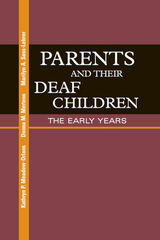 Parents and Their Deaf Children: The Early Years
Kathryn P. Meadow-Orlans
Gallaudet University Press, 2003 To correct the paucity of information on deaf or hard of hearing children and their parents’ experiences with early intervention services, researchers explored these relationships as part of the National Parent Project. From this investigation, Parents and Their Deaf Children details the experiences of a group of parents and their deaf children from the first identification of the latter’s hearing loss through their early years in elementary school. Renowned scholars Kathryn Meadow-Orlans, Donna Mertens, and Marilyn Sass-Lehrer reveal here for the first time the goals and expectations of the parents, the children’s achievements and troubles, and the families’ satisfaction and disappointment with health and educational systems. Parents and their Deaf Children stems from a nationwide survey of parents with six-to-seven-year-old deaf or hard of hearing children, followed up by interviews with 80 parents. The authors not only discuss the parents’ communication choices for their children, but also provide how parents’ experiences differ, especially for those whose children are hard of hearing, have additional conditions, or have cochlear implants. Also, one chapter is devoted to families from minority cultures. The final section of this distinctive study offers solid advice for other parents of deaf children and also the professionals who serve them.
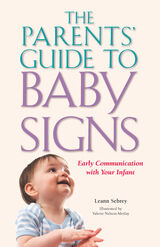 The Parents’ Guide to Baby Signs: Early Communication with Your Infant
Leann Sebrey
Gallaudet University Press, 2009 Experienced ASL instructor Leann Sebrey champions two-way sign communication between parents and their infants who are just months old as a way to bond more closely and reduce frustration, while also maximizing the children’s intelligence and emotional quotients.
Sebrey’s book The Parents’ Guide to Baby Signs: Early Communication with Your Infant lays out an easy, step-by-step process that will instill confidence in parents who have never signed before. She begins by explaining why ASL is best for all children, both deaf and hearing. Sebrey also recognizes the different ways young children learn, encouraging parents and caregivers to sign with infants at all times as a natural part of their interaction. She reveals the first indications of when a baby is ready to communicate, and includes a list of signs to provide parents with a good starting point. Sebrey discusses the moments when infants are most receptive to learn signs and outlines numerous practical techniques with plenty of helpful hints to speed the process. She describes the pleasure of seeing a baby’s first sign, and tells parents how to interpret baby signs, including what to do when a baby uses the wrong signs. Full of easy-to-grasp illustrations of child and family-oriented signs, The Parents’ Guide to Baby Signs is the best how-to book for parents, caregivers, and educators to teach early communication to infants.
 The Parents' Guide to Cochlear Implants
Patricia M. Chute
Gallaudet University Press, 2002 Now, parents of deaf children have at hand a complete guide to the process of cochlear implantation. Written by two eminent professionals in deaf education, The Parents’ Guide to Cochlear Implants explains in a friendly, easy-to-follow style each stage of the process. Parents will discover how to have their child evaluated to determine her or his suitability for an implant. They’ll learn about implant device options, how to choose an implant center, and every detail of the surgical procedure. The initial “switch-on” is described along with counseling about device maintenance.
Most importantly, parents will learn their roles in helping their child adjust to and successfully use the cochlear implant. The Parents’ Guide to Cochlear Implants emphasizes such critical subjects as learning to listen through home activities, implants as tools for language development, and critical issues regarding school placement. This encouraging book considers the implications for performance in light of the whole child, including issues related to Deaf culture and cochlear implants. The authors also include brief stories by parents whose children have had implants that provide reassuring actual experiences to parents considering the procedure for their own child. With a last word on parenting perspectives and a rich source of resources in the appendices, this one-of-a-kind guide will arm parents of deaf children with complete confidence to make informed decisions about cochlear implantation.
A Parent’s Guide to Spina Bifida
Beth-Ann Bloom
University of Minnesota Press, 1988
Beth-Ann Bloom and Edward Seljeskog have written this book to explain more about spina bidifa: to assist parents and relatives in absorbing the wealth of medical information and facts available about the disorder and the conditions associated with it. The authors cover what is known about causation--addressing the question of whether other children might be born with the disorder--available treatment, and what parents can do to help their child cope with spina bifida from infancy to young adulthood.
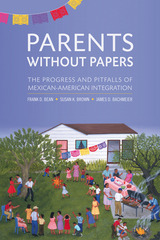 Parents Without Papers: The Progress and Pitfalls of Mexican American Integration
Frank D. Bean is Distinguished Professor of Sociology and Director of the Center for Research on International Migration at the University of California, Irvine. Susan K. Brown is associate professor of sociology at the University of California, Irvine. James D. Bachmeier is assistant professor of sociology at Temple University.
Russell Sage Foundation, 2015 For several decades, Mexican immigrants in the United States have outnumbered those from any other country. Though the economy increasingly needs their labor, many remain unauthorized. In Parents Without Papers, immigration scholars Frank D. Bean, Susan K. Brown, and James D. Bachmeier document the extent to which the outsider status of these newcomers inflicts multiple hardships on their children and grandchildren.
Parents Without Papers provides both a general conceptualization of immigrant integration and an in-depth examination of the Mexican American case. The authors draw upon unique retrospective data to shed light on three generations of integration. They show in particular that the “membership exclusion” experienced by unauthorized Mexican immigrants—that is, their fear of deportation, lack of civil rights, and poor access to good jobs—hinders the education of their children, even those who are U.S.-born. Moreover, they find that children are hampered not by the unauthorized entry of parents itself but rather by the long-term inability of parents, especially mothers, to acquire green cards.
When unauthorized parents attain legal status, the disadvantages of the second generation begin to disappear. These second-generation men and women achieve schooling on par with those whose parents come legally. By the third generation, socioeconomic levels for women equal or surpass those of native white women. But men reach parity only through greater labor-force participation and longer working hours, results consistent with the idea that their integration is delayed by working-class imperatives to support their families rather than attend college.
An innovative analysis of the transmission of advantage and disadvantage among Mexican Americans, Parents Without Papers presents a powerful case for immigration policy reforms that provide not only realistic levels of legal less-skilled migration but also attainable pathways to legalization. Such measures, combined with affordable access to college, are more important than ever for the integration of vulnerable Mexican immigrants and their descendants.
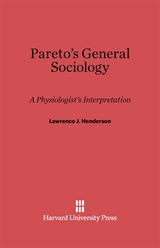 Pareto's General Sociology: A Physiologist's Interpretation
Lawrence J. Henderson
Harvard University Press Pareto’s Treatise on General Sociology is so long and so difficult to understand that it has been too much neglected. Now that an English translation has just appeared, scholars will welcome Dr Henderson’s brief but clear essay, which makes it possible to arrive quickly at some comprehension of the special problems to which the Treatise is addressed and some understanding of the development which Pareto gives these problems. The main work of the Treatise is the development of a systematic method of approaching sociological inquiry. Pareto points out that a social group consists of a heterogeneity of individuals, that these individuals collaborate in social fashion because of links which are non-logical in character. The study of this non-logic is the first and most important part of sociology. Only when this study has been adequately accounted for, can one proceed to consideration of the part played in human affairs by logical reasoning and, for example, economic interest.
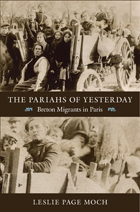 The Pariahs of Yesterday: Breton Migrants in Paris
Leslie Page Moch
Duke University Press, 2012 Beginning in the 1870s, a great many Bretons—men and women from Brittany, a region in western France—began arriving in Paris. Every age has its pariahs, and in 1900, the “pariahs of Paris” were the Bretons, the last distinct group of provincials to come en masse to the capital city. The pariah designation took hold in Paris, in Brittany, and among historians. Yet the derision of recent migrants can be temporary. Tracing the changing status of Bretons in Paris since 1870, Leslie Page Moch demonstrates that state policy, economic trends, and the attitudes of established Parisians and Breton newcomers evolved as the fortunes of Bretons in the capital improved. The pariah stereotype became outdated. Drawing on demographic records and the writings of physicians, journalists, novelists, lawyers, and social scientists, Moch connects internal migration with national integration. She interprets marriage records, official reports on employment, legal and medical theses, memoirs, and writings from secular and religious organizations in the Breton community. As the pariahs of yesterday, Bretons are an example of successful integration into Parisian life. At the same time, their experiences show integration to be a complicated and lengthy process.
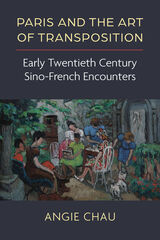 Paris and the Art of Transposition: Early Twentieth Century Sino-French Encounters
Angie Chau
University of Michigan Press, 2023 A brief stay in France was, for many Chinese workers and Chinese Communist Party leaders, a vital stepping stone for their careers during the cultural and political push to modernize China after World War I. For the Chinese students who went abroad specifically to study Western art and literature, these trips meant something else entirely. Set against the backdrop of interwar Paris, Paris and the Art of Transposition uncovers previously marginalized archives to reveal the artistic strategies employed by Chinese artists and writers in the early twentieth-century transnational imaginary and to explain why Paris played such a central role in the global reception of modern Chinese literature and art.
While previous studies of Chinese modernism have focused on how Western modernist aesthetics were adapted or translated to the Chinese context, Angie Chau does the opposite by turning to Paris in the Chinese imaginary and discussing the literary and visual artwork of five artists who moved between France and China: the painter Chang Yu, the poet Li Jinfa, the art critic Fu Lei, the painter Pan Yuliang, and the writer Xu Xu. Chau draws the idea of transposition from music theory where it refers to shifting music from one key or clef to another, or to adapting a song originally composed for one instrument to be played by another. Transposing transposition to the study of art and literature, Chau uses the term to describe a fluid and strategic art practice that depends on the tension between foreign and familiar, new and old, celebrating both novelty and recognition—a process that occurs when a text gets placed into a fresh context.
 Paris at War: 1939–1944
David Drake
Harvard University Press, 2015 Paris at War chronicles the lives of ordinary Parisians during World War II, from September 1939 when France went to war with Nazi Germany to liberation in August 1944. Readers will relive the fearful exodus from the city as the German army neared the capital, the relief and disgust felt when the armistice was signed, and the hardships and deprivations under Occupation. David Drake contrasts the plight of working-class Parisians with the comparative comfort of the rich, exposes the activities of collaborationists, and traces the growth of the Resistance from producing leaflets to gunning down German soldiers. He details the intrigues and brutality of the occupying forces, and life in the notorious transit camp at nearby Drancy, along with three other less well known Jewish work camps within the city.
The book gains its vitality from the diaries and reminiscences of people who endured these tumultuous years. Drake’s cast of characters comes from all walks of life and represents a diversity of political views and social attitudes. We hear from a retired schoolteacher, a celebrated economist, a Catholic teenager who wears a yellow star in solidarity with Parisian Jews, as well as Resistance fighters, collaborators, and many other witnesses.
Drake enriches his account with details from police records, newspapers, radio broadcasts, and newsreels. From his chronology emerge the broad rhythms and shifting moods of the city. Above all, he explores the contingent lives of the people of Paris, who, unlike us, could not know how the story would end.
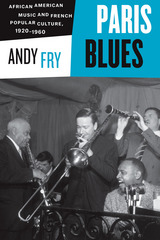 Paris Blues: African American Music and French Popular Culture, 1920-1960
Andy Fry
University of Chicago Press, 2014 The Jazz Age. The phrase conjures images of Louis Armstrong holding court at the Sunset Cafe in Chicago, Duke Ellington dazzling crowds at the Cotton Club in Harlem, and star singers like Bessie Smith and Ma Rainey. But the Jazz Age was every bit as much of a Paris phenomenon as it was a Chicago and New York scene.
In Paris Blues, Andy Fry provides an alternative history of African American music and musicians in France, one that looks beyond familiar personalities and well-rehearsed stories. He pinpoints key issues of race and nation in France’s complicated jazz history from the 1920s through the 1950s. While he deals with many of the traditional icons—such as Josephine Baker, Django Reinhardt, and Sidney Bechet, among others—what he asks is how they came to be so iconic, and what their stories hide as well as what they preserve. Fry focuses throughout on early jazz and swing but includes its re-creation—reinvention—in the 1950s. Along the way, he pays tribute to forgotten traditions such as black musical theater, white show bands, and French wartime swing. Paris Blues provides a nuanced account of the French reception of African Americans and their music and contributes greatly to a growing literature on jazz, race, and nation in France.
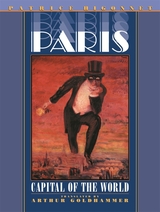 Paris: Capital of the World
Patrice Higonnet
Harvard University Press, 2002 In an original and evocative journey through modern Paris from the mid-eighteenth century to World War II, Patrice Higonnet offers a delightful cultural portrait of a multifaceted, continually changing city. In examining the myths and countermyths of Paris that have been created and re-created over time, Higonnet reveals a magical urban alchemy in which each era absorbs the myths and perceptions of Paris past, adapts them to the cultural imperatives of its own time, and feeds them back into the city, creating a new environment.
Paris was central to the modern world in ways internal and external, genuine and imagined, progressive and decadent. Higonnet explores Paris as the capital of revolution, science, empire, literature, and art, describing such incarnations as Belle Epoque Paris, the Commune, the surrealists' city, and Paris as viewed through American eyes. He also evokes the more visceral Paris of alienation, crime, material excess, and sensual pleasure.
Insightful, informative, and gracefully written, Paris illuminates the intersection of collective and individual imaginations in a perpetually shifting urban dynamic. In describing his Paris of the real and of the imagination, Higonnet sheds brilliant new light on this endlessly intriguing city.
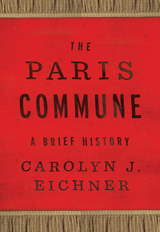 The Paris Commune: A Brief History
Carolyn J. Eichner
Rutgers University Press, 2022 At dawn on March 18, 1871, Parisian women stepped between cannons and French soldiers, using their bodies to block the army from taking the artillery from their working-class neighborhood. When ordered to fire, the troops refused and instead turned and arrested their leaders. Thus began the Paris Commune, France’s revolutionary civil war that rocked the nineteenth century and shaped the twentieth. Considered a golden moment of hope and potential by the left, and a black hour of terrifying power inversions by the right, the Commune occupies a critical position in understanding modern history and politics. A 72-day conflict that ended with the ferocious slaughter of Parisians, the Commune represents for some the final insurgent burst of the French Revolution’s long wake, for others the first “successful” socialist uprising, and for yet others an archetype for egalitarian socio-economic, feminist, and political change. Militants have referenced and incorporated its ideas into insurrections across the globe, throughout the twentieth and into the twenty-first centuries, keeping alive the revolution’s now-iconic goals and images. Innumerable scholars in countless languages have examined aspects of the 1871 uprising, taking perspectives ranging from glorifying to damning this world-shaking event. The Commune stands as a critical and pivotal moment in nineteenth-century history, as the linchpin between revolutionary pasts and futures, and as the crucible allowing glimpses of alternate possibilities. Upending hierarchies of class, religion, and gender, the Commune emerged as a touchstone for the subsequent century-and-a-half of revolutionary and radical social movements.
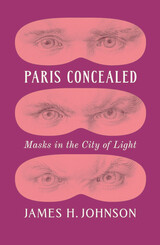 Paris Concealed: Masks in the City of Light
James H. Johnson
University of Chicago Press, 2025 A comprehensive history of masks in France from the seventeenth to the nineteenth century. Masks can conceal, disguise, or protect. They can guard status, inspire delight, or spread fear. They can also betray trust through insincerity, deceit, and hypocrisy. In Paris Concealed, historian James H. Johnson offers a sweeping history of masks both visible and unseen from the time of Louis XIV to the late nineteenth century, exploring the complex roles that masking and unmasking have played in the fashioning of our social selves.
Drawing from memoirs, novels, plays, and paintings, Paris Concealed explores the many domains in which masks have been decisive. Beginning in the court of Versailles, Johnson charts the genesis of courtly politesse and its widespread condemnation by Enlightenment philosophers and political thinkers. He describes strategies deployed in the era of the French Revolution for unmasking traitors and later efforts to penetrate criminal disguises through telltale marks on the body. He portrays the disruptive power of masks in public balls and carnivals and, with the coming of modernity, evokes their unsettling presence within the unconscious.
Compellingly written and beautifully illustrated, Paris Concealed lays bare the mask’s transformations, from marking one’s position in a static society to inspiring imagined identities in meritocracies to impeding the elusive search for one’s true self. To tell the history of masks, Johnson shows, is to tell the history of modern selfhood.
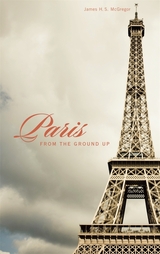 Paris from the Ground Up
James H. S. McGregor
Harvard University Press, 2010 Paris is the most personal of cities. There is a Paris for the medievalist, and another for the modernist—a Paris for expatriates, philosophers, artists, romantics, and revolutionaries of every stripe. James H. S. McGregor brings these multiple perspectives into focus throughout this concise, unique history of the City of Light.
His panorama begins with an ancient Gallic fortress on the Seine, burned to the ground by its own defenders in a vain effort to starve out Caesar’s legions. After ninth-century raids by the Vikings ended, Parisians expanded the walls of their tiny sanctuary on the Ile de la Cité, turning the river’s right bank into a thriving commercial district and the Rive Gauche into a college town. Gothic spires expressed a taste for architectural novelty, matched only by the palaces and pleasure gardens of successive monarchs whose ingenuity made Paris the epitome of everything French. The fires of Revolution threatened all that had come before, but Baron Haussmann saw opportunity in the wreckage. No planned city in the world is more famous than his.
Paris from the Ground Up allows readers to trace the city’s evolution in its architecture and art—from the Roman arena to the Musée d’Orsay, from the Louvre’s defensive foundations to I. M. Pei’s transparent pyramids. Color maps, along with identifying illustrations, make the city accessible to visitors by foot, Metro, or riverboat.
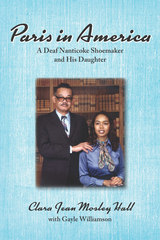 Paris in America: A Deaf Nanticoke Shoemaker and His Daughter
Clara Jean Mosley Hall
Gallaudet University Press, 2018 Clara Jean Mosley Hall has inhabited various cultural worlds in her life: Native American, African American, Deaf, and hearing. The hearing daughter of a Deaf Nanticoke man, who grew up in Dover, Delaware’s Black community in the 1950s and 60s, Hall describes the intersections of these identities in Paris in America. By sharing her father’s experiences and relating her own struggles and successes, Hall honors her father’s legacy of hard work and perseverance and reveals the complexities of her own unique background.
Hall was abandoned by her Deaf African American mother at a young age and forged a close bond with her father, James Paris Mosley, who communicated with her in American Sign Language. Although his family was Native American, they—like many other Nanticoke Native Americans of that region—had assimilated over time into Dover’s Black community. Hall vividly recounts the social and cultural elements that shaped her, from Jim Crow to the forced integration of public schools, to JFK and Motown. As a Coda (child of deaf adults) in a time when no accessibility or interpreting services were available, she was her father’s sole means of communication with the hearing world, a heavy responsibility for a child. After her turbulent teenage years, and with the encouragement of her future husband, she attended college and discovered that her skills as a fluent ASL user were a valuable asset in the field of education.
Hall went on to become a college professor, mentor, philanthropist, and advocate for Deaf students from diverse backgrounds. Her memoir is a celebration of her family, her faith, her journey, and her heritage.
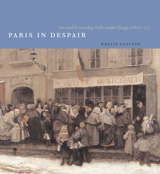 Paris in Despair: Art and Everyday Life under Siege (1870-1871)
Hollis Clayson
University of Chicago Press, 2002 The siege of Paris by Prussians in the fall and winter of 1870 and 1871 turned the city upside down, radically altering its appearance, social structure, and mood. As Hollis Clayson demonstrates in Paris in Despair, the siege took an especially heavy toll on the city's artists, forcing them out of the spaces and routines of their insular prewar lives and thrusting them onto the ramparts (as many became soldiers).
But the crisis did not halt artistic production, as some have suggested. In fact, Clayson argues that the siege actually encouraged innovation, fostering changed attitudes and new approaches to representation among a wide variety of artists as they made art out of their individual experiences of adversity and change—art that has not previously been considered within the context of the siege. Clayson focuses especially on Rosa Bonheur, Edgar Degas, Jean-Alexandre-Joseph Falguière, Edouard Manet, and Henri Regnault, but she also covers a host of other artists, including Ernest Barrias, Gustave Courbet, Edouard Detaille, Pierre Puvis de Chavannes, Albert Robida, and James Tissot. Paris in Despair includes more than two hundred color and black-and-white images of works by these artists and others, many never before published.
Using the visual arts as an interpretive lens, Clayson illuminates the wide range of issues at play during the siege and thereafter, including questions of political and cultural identity, artistic masculinity and femininity, public versus private space, everyday life and modernity, and gender and class roles in military and civilian society. For anyone concerned with these issues, or with nineteenth-century French art in general, Paris in Despair will be a landmark work.
Paris in Quotations
Compiled by Jaqueline Mitchell
Bodleian Library Publishing, 2016 “We’ll always have Paris,” croons Humphrey Bogart in Casablanca to a young Ingrid Bergman. F. Scott Fitzgerald commented that “the best of America drifts to Paris.” But, should one never get the opportunity to visit Paris, one might take consolation in the words of critic William Hazlitt, who called it a “beast of a city.” Be it praise or colorful invective, everyone, it seems, has something to say about the city and this slender volume—filled with wise, witty, and sometimes scandalous quotes—presents the full range of impressions it has made.
Paris in Quotations takes readers on a one-of-a-kind tour of the City of Lights, in which we hear from the likes of Molière and Thomas Gold Appleton, who thought that, “When good Americans die, they go to Paris.” For centuries, Paris has reigned over the popular imagination. For those planning a visit, this collection will be warmly welcomed.
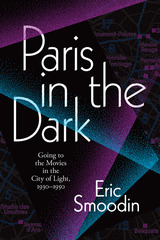 Paris in the Dark: Going to the Movies in the City of Light, 1930–1950
Eric Smoodin
Duke University Press, 2020 In Paris in the Dark Eric Smoodin takes readers on a journey through the streets, cinemas, and theaters of Paris to sketch a comprehensive picture of French film culture during the 1930s and 1940s. Drawing on a wealth of journalistic sources, Smoodin recounts the ways films moved through the city, the favored stars, and what it was like to go to the movies in a city with hundreds of cinemas. In a single week in the early 1930s, moviegoers might see Hollywood features like King Kong and Frankenstein, the new Marlene Dietrich and Maurice Chevalier movies, and any number of films from Italy, Germany, and Russia. Or they could frequent the city's ciné-clubs, which were hosts to the cinéphile subcultures of Paris. At other times, a night at the movies might result in an evening of fascist violence, even before the German Occupation of Paris, while after the war the city's cinemas formed the space for reconsolidating French film culture. In mapping the cinematic geography of Paris, Smoodin expands understandings of local film exhibition and the relationships of movies to urban space.
The Paris of Appalachia: Pittsburgh in the Twenty-First Century
Brian O'Neill
Carnegie Mellon University Press, 2026 A study of the city of Pittsburgh’s unique history and spirit.
Maybe you never wondered if any metro area nearly straddles the borders of three major regions of the country, but The Paris of Appalachia: Pittsburgh in the Twenty-First Century tells us why this city is a place apart. It’s not East Coast, Midwest, or Southern, but the rest of America can fret about how to label Pittsburgh. It’s just fine being a walkable town that plays a big city on TV. Brian O'Neill, who walked its streets for more than three decades as a newspaper columnist, fell in love with the place from the moment he arrived. And when you read what he found, odds are better than even that you will, too. This reissue of the book includes a new introduction.
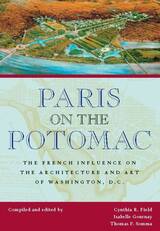 Paris on the Potomac: The French Influence on the Architecture and Art of Washington, D.C.
Cynthia R. Field
Ohio University Press, 2007 In 1910 John Merven Carrère, a Paris-trained American architect, wrote, “Learning from Paris made Washington outstanding among American cities.” The five essays in Paris on the Potomac explore aspects of this influence on the artistic and architectural environment of Washington, D.C., which continued long after the well-known contributions of Peter Charles L’Enfant, the transplanted French military officer who designed the city’s plan. Isabelle Gournay’s introductory essay provides an overview and examines the context and issues involved in three distinct periods of French influence: the classical and Enlightenment principles that prevailed from the 1790s through the 1820s, the Second Empire style of the 1850s through the 1870s, and the Beaux-Arts movement of the early twentieth century. William C. Allen and Thomas P. Somma present two case studies: Allen on the influence of French architecture, especially the Halle aux Blés, on Thomas Jefferson’s vision of the U.S. Capitol; and Somma on David d’Angers’s busts of George Washington and the Marquis de Lafayette. Liana Paredes offers a richly detailed examination of French-inspired interior decoration in the homes of Washington’s elite in the late nineteenth and early twentieth centuries. Cynthia R. Field concludes the volume with a consideration of the influence of Paris on city planning in Washington, D.C., including the efforts of the McMillan Commission and the later development of the Federal Triangle complex. The essays in this collection, the latest addition to the series Perspectives on the Art and Architectural History of the United States Capitol, originated in a conference held by the U.S. Capitol Historical Society in 2002 at the French Embassy’s Maison Française.
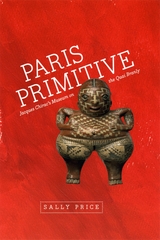 Paris Primitive: Jacques Chirac's Museum on the Quai Branly
Sally Price
University of Chicago Press, 2007 In 1990 Jacques Chirac, the future president of France and a passionate fan of non-European art, met Jacques Kerchache, a maverick art collector with the lifelong ambition of displaying African sculpture in the holy temple of French culture, the Louvre. Together they began laying plans, and ten years later African fetishes were on view under the same roof as the Mona Lisa. Then, in 2006, amidst a maelstrom of controversy and hype, Chirac presided over the opening of a new museum dedicated to primitive art in the shadow of the Eiffel Tower: the Musée du Quai Branly.
Paris Primitive recounts the massive reconfiguration of Paris’s museum world that resulted from Chirac’s dream, set against a backdrop of personal and national politics, intellectual life, and the role of culture in French society. Along with exposing the machinations that led to the MQB’s creation, Sally Price addresses the thorny questions it raises about the legacy of colonialism, the balance between aesthetic judgments and ethnographic context, and the role of institutions of art and culture in an increasingly diverse France. Anyone with a stake in the myriad political, cultural, and anthropological issues raised by the MQB will find Price’s account fascinating.
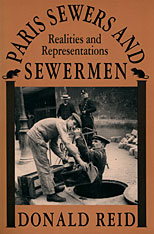 Paris Sewers and Sewermen: Realities and Representations
Donald Reid
Harvard University Press, 1991 The expansion of the Paris sewer system during the Second Empire and Third Republic was both a technological and political triumph. The sewers themselves were an important cultural phenomenon, and the men who worked in them a source of fascination. Donald Reid shows that observing how such laborers as cesspool cleaners and sewermen present themselves and are represented by others is a way to reflect on the material and cultural foundations of everyday life.
For bourgeois urbanites, the sewer became the repository of latent anxieties about disease, disorder, and anarchy. The sewermen themselves formed a model army of labor in an era of social upheaval in the workplace. They were pioneers both in demanding the right of public servants to unionize and in securing social welfare measures. They were among the first French manual laborers to win the eight-hour day, paid vacations, and other benefits.
Reid transcends traditional categories by bringing together the infrastructure and the cultural supports of society, viewing technocracy and its achievements in technical, political and cultural terms. Historians of modern France, and Francophiles in search of the unusual, will welcome the cultural interfaces of urban history, labor history, and the history of technology his book provides. His text is enlivened by drawings and photographs of the life below Paris streets, and illuminated by references to literary sources such as Hugo's Les Miserables and Giraudoux's The Madwoman of Chaillot.
Paris, So to Speak
Navid Kermani
Seagull Books, 2022 A romantic novel like no other.
A writer has penned a novel about the great love of his youth. After a public reading, he is approached by a woman he doesn’t recognize—but it’s his lover. He is the author; she, the figure in his novel. The young girl from back then has turned into an interesting and attractive woman—but she’s also married. Soon the situation becomes a little strange: they sit down together, have a glass of wine, talk about French romantic novels, ask each other what one expects of love when one grows older. And all the while her husband is sitting in the next room. How is this going to end? Navid Kermani has written a romantic novel like no other—surprising, witty, profound—and one can barely put it down.
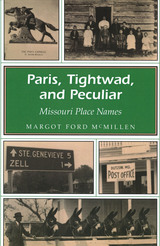 Paris, Tightwad, and Peculiar: Missouri Place Names
Margot Ford McMillen
University of Missouri Press, 1994 Paris, Tightwad, Peculiar, Neosho, Gasconade, Hannibal, Diamond, Quarantine, Zif, and Zig. These are just a few of the names Margot Ford McMillen covers in her lively book on the history of place names in Missouri. The origins behind the names range from humorous to descriptive: •Tightwad, Missouri, is said to have been named after a store owner who cheated a mailman out of his rightful watermelon to make an extra fifty cents. •Plad, Missouri, was supposed to be named "Glad," but the post office printed the name wrong, and it was too much trouble to get it changed. •Some place names describe a location, such as Big Spring or Flat River. •Other names show the influence of immigrants to the state, like Hermann, which is a German name, or the Maries River, which was derived from the French. •Many places are named for people or wildlife found nearby, while others are backed up by legend or simply picked out of thin air.
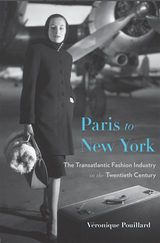 Paris to New York: The Transatlantic Fashion Industry in the Twentieth Century
Véronique Pouillard
Harvard University Press, 2021 An innovative history of the fashion industry, focusing on the connections between Paris and New York, art and finance, and design and manufacturing.
Fashion is one of the most dynamic industries in the world, with an annual retail value of $3 trillion and globally recognized icons like Coco Chanel, Christian Dior, and Yves Saint Laurent. How did this industry generate such economic and symbolic capital?
Focusing on the roles of entrepreneurs, designers, and institutions in fashion’s two most important twentieth-century centers, Paris to New York tells the history of the industry as a negotiation between art and commerce. In the late nineteenth century, Paris-based firms set the tone for a global fashion culture nurtured by artistic visionaries. In the burgeoning New York industry, however, the focus was on mass production. American buyers, trend scouts, and designers crossed the Atlantic to attend couture openings, where they were inspired by, and often accused of counterfeiting, designs made in Paris. For their part, Paris couturiers traveled to New York to understand what American consumers wanted and to make deals with local manufacturers for whom they designed exclusive garments and accessories. The cooperation and competition between the two continents transformed the fashion industry in the early and mid-twentieth century, producing a hybrid of art and commodity.
Véronique Pouillard shows how the Paris–New York connection gave way in the 1960s to a network of widely distributed design and manufacturing centers. Since then, fashion has diversified. Tastes are no longer set by elites alone, but come from the street and from countercultures, and the business of fashion has transformed into a global enterprise.
Paris-Amsterdam Underground: Essays on Cultural Resistance, Subversion, and Diversion
Edited by Christoph Lindner and Andrew Hussey
Amsterdam University Press, 2013 The postwar histories of Paris and Amsterdam have been significantly defined by the notion of the “underground” as both a material and metaphorical space. Examining the underground traffic between the two cities, this book interrogates the countercultural histories of Paris and Amsterdam in the mid to late-twentieth century. Shuttling between Paris and Amsterdam, as well as between postwar avant-gardism and twenty-first century global urbanism, this interdisciplinary book seeks to create a mirroring effect over the notion of the underground as a driving force in the making of the contemporary European city.
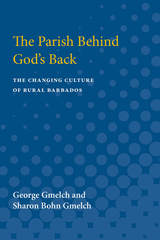 Parish behind God's Back: The Changing Culture of Rural Barbados
George Gmelch and Sharon Bohn Gmelch
University of Michigan Press, 1997 One of the first things any visitor to Barbados notices is Barbadian youths wearing baseball caps and T-shirts sporting the logos of North American teams; and these days, one is more likely to find an American sitcom on television than a Caribbean program. The Parish behind God's Back describes the social fabric and everyday life of one rural parish on the island, St. Lucy, including its many links to the outside world. It is a contemporary ethnography of the local that takes into account the enormous influence of global factors such as tourism, television, foreign travel, and return migrants. Written with students in mind, the book contains several unique features. Each chapter blends descriptions of Barbadian culture with comparisons to North America; throughout, the authors include tales of not only their own fieldwork experiences but those of their undergraduate students; and personal narratives are emphasized to engage interest in individuals. This highly readable and thought-provoking account should appeal to general readers with an interest in the Caribbean as well as to students of anthropology. George Gmelch is Professor and Chair, Department of Anthropology, Union College. Sharon Bohn Gmelch is Professor of Anthropology and Director of Women's Studies, Union College.
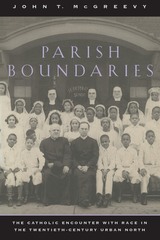 Parish Boundaries: The Catholic Encounter with Race in the Twentieth-Century Urban North
John T. McGreevy
University of Chicago Press, 1996 Parish Boundaries chronicles the history of Catholic parishes in major cities such as Boston, Chicago, Detroit, New York, and Philadelphia, melding their unique place in the urban landscape to the course of twentieth century American race relations. In vivid portraits of parish life, John McGreevy examines the contacts and conflicts between Euro-American Catholics and their African-American neighbors. By tracing the transformation of a church, its people, and the nation, McGreevy illuminates the enormous impact of religious culture on modern American society.
"Parish Boundaries can take its place in the front ranks of the literature of urban race relations."—Jonathan Dorfman, Washington Post Book Review
"A prodigiously researched, gracefully written book distinguished especially by its seamless treatment of social and intellectual history."—Robert Orsi, American Historical Review
"Parish Boundaries will fascinate historians and anyone interested in the historic connection between parish and race."—Ed Marciniak, Chicago Tribune
"The history that remains to be written will rest on the firm foundation of Mr. McGreevy's remarkable book."—Richard Wightman Fox, New York Times Book Review
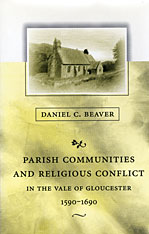 Parish Communities and Religious Conflict in the Vale of Gloucester, 1590–1690
Daniel C. Beaver
Harvard University Press, 1998 Many historians have attempted to understand the violent religious conflicts of the seventeenth century from viewpoints dominated by concepts of class, gender, and demography. But few studies have explored the cultural process whereby religious symbolism created social cohesion and political allegiance. This book examines religious conflict in the parish communities of early modern England using an interdisciplinary approach that includes all these perspectives.
Daniel Beaver studies the urban parish of Tewkesbury and six rural parishes in its hinterland over a period of one hundred years, drawing on local ecclesiastical court records, sermons, parish records, corporate minutes and charity books, and probate documents. He discusses the centrality of religious symbols and ceremonies in the ordering of local societies, particularly in local conceptions of place, personal identity, and the life cycle. Four phases in the transformation of parish communities emerge and are examined in this book.
This exploration of the interrelationship of religion, politics, and society, and the transformation of local communities in civil war, has a value beyond the particular history of early modern England, contributing to a broader understanding of religious revivals, fundamentalisms, and the persistent link between religion, nationalism, and ethnic identity in the modern world.
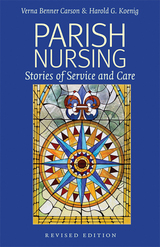 Parish Nursing - 2011 Edition: Stories of Service and Care
Verna Benner Carson
Templeton Press, 2011 The engaging stories in Parish Nursing provide accessible and enjoyable accounts of real parish nurses, both paid and volunteer, who attend to the needs of their congregations in a variety of ways—from home, hospice, and hospital visits to community outreach. This revised edition gathers their stories of hearing and heeding God’s call, of their faith that they are doing the “right thing,” of their joys, sorrows, and challenges, and of their quiet dedication as they offer their time and talents to meet the needs of others. By offering inspiration and encouragement, along with a healthy dose of updated practical advice, this collection will make parish nursing theory come to life. These stories will honor practicing parish nurses, will guide the way for anyone contemplating parish nursing as a career, and will challenge church members and leaders to examine the role that their congregations play in health ministry—especially in meeting the long-term care needs of an aging population.
Parish Nursing: Stories Of Service & Care
Verna Carson
Templeton Press, 2002 Parish Nursing presents a vision where nurses can serve as the vital link between secular healthcare and sacred faith-based systems. Nurses are able to provide direct ministry to members of the congregation and also can be the communicators, teachers, motivators, and encouragers of others. The parish nurse could be a key person to link the two systems and provide truly wholistic care. Reading the stories of parish nurses gives us hope that this vision might be possible—indeed must be possible—if our aging society is to flourish in the years ahead.
 The Parisian Order of Barristers and the French Revolution
Michael P. Fitzsimmons
Harvard University Press, 1987 Did barristers as a professional group support the French Revolution, or were they most often “in flight from politics”? A close inquiry into the Order of Barristers at Paris—the largest and most important in France, with over six hundred members in 1789—reveals that the vast majority within the Order did not support the Revolution. Unsympathetic to the ideal of the nation asserted by the National Assembly, most members of the Order instead remained loyal to the traditional corporate paradigm that the National Assembly had specifically repudiated. Dismayed by the abolition of their Order, they were disillusioned with the Revolution even before the advent of the Terror, which, along with the arbitrariness of the Directory, deepened their disaffection. The manner in which Bonaparte ultimately restored the Order in 1811 completed their alienation from the Revolution and, as a result, they warmly welcomed the return of the Bourbons in 1814.
This investigation not only revises what historians have long thought of the attitude of barristers toward the French Revolution, but also offers insights into the corporate character of Old Regime society and how the Revolution affected it. Fitzsimmons’s study suggests that many propertied commoners during the Revolution were not politically engaged, that they were not necessarily associated with a party or cause simply because of their place within a set of social relationships. Most of the barristers to the Parlement simply reacted timidly to events and yearned for an ideal that was irretrievably lost, tending to view the Revolution more in terms of an end than of a beginning.
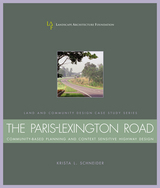 The Paris-Lexington Road: Community-Based Planning And Context Sensitive Highway Design
Krista L. Schneider; Landscape Architecture Foundation
Island Press, 2003 Located in the heart of the Kentucky Bluegrass Region, the "Paris Pike" is a scenic, twelve-mile corridor running between Lexington and Paris. Beginning in 1969, the state of Kentucky sought to widen the road in order to improve safety and capacity. Various objections led to a federal court injunction imposed in 1979 that halted the project for more than fifteen years. Over the span of three decades, several consultant studies contributed to the public understanding of the road's significance and set the stage for what has been regarded as the model for context-sensitive road reconstruction in America.
The Paris-Lexington Road focuses on the history of the reconstruction of the Paris Pike (now renamed the "Paris-Lexington Road") to critically review this reconstruction project and illustrate its significance to the profession of landscape architecture. It also situates the role of landscape architects in the history of highway design, and examines the various contemporary challenges and opportunities represented within the Paris Pike project.
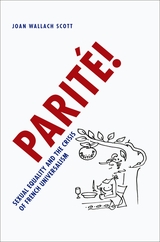 Parité!: Sexual Equality and the Crisis of French Universalism
Joan Wallach Scott
University of Chicago Press, 2005 France today is in the throes of a crisis about whether to represent social differences within its political system and, if so, how. It is a crisis defined by the rhetoric of a universalism that takes the abstract individual to be the representative not only of citizens but also of the nation. In Parité! Joan Wallach Scott shows how the requirement for abstraction has led to the exclusion of women from French politics.
During the 1990s, le mouvement pour la parité successfully campaigned for women's inclusion in elective office with an argument that is unprecedented in the annals of feminism. The paritaristes insisted that if the abstract individual were thought of as sexed, then sexual difference would no longer be a relevant consideration in politics. Scott insists that this argument was neither essentialist nor separatist; it was not about women's special qualities or interests. Instead, parité was rigorously universalist—and for that reason was both misunderstood and a source of heated debate.
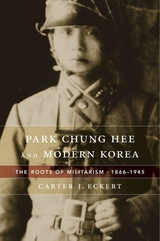 Park Chung Hee and Modern Korea: The Roots of Militarism, 1866–1945
Carter J. Eckert
Harvard University Press, 2016 For South Koreans, the twenty years from the early 1960s to late 1970s were the best and worst of times—a period of unprecedented economic growth and of political oppression that deepened as prosperity spread. In this masterly account, Carter J. Eckert finds the roots of South Korea’s dramatic socioeconomic transformation in the country’s long history of militarization—a history personified in South Korea’s paramount leader, Park Chung Hee.
The first volume of a comprehensive two-part history, Park Chung Hee and Modern Korea: The Roots of Militarism, 1866–1945 reveals how the foundations of the dynamic but strongly authoritarian Korean state that emerged under Park were laid during the period of Japanese occupation. As a cadet in the Manchurian Military Academy, Park and his fellow officers absorbed the Imperial Japanese Army’s ethos of victory at all costs and absolute obedience to authority. Japanese military culture decisively shaped Korea’s postwar generation of military leaders. When Park seized power in an army coup in 1961, he brought this training and mentality to bear on the project of Korean modernization.
Korean society under Park exuded a distinctively martial character, Eckert shows. Its hallmarks included the belief that the army should intervene in politics in times of crisis; that a central authority should plan and monitor the country’s economic system; that the Korean people’s “can do” spirit would allow them to overcome any challenge; and that the state should maintain a strong disciplinary presence in society, reserving the right to use violence to maintain order.
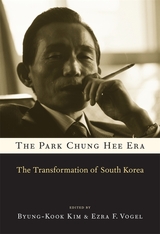 The Park Chung Hee Era: The Transformation of South Korea
Edited by Byung-Kook Kim and Ezra F. Vogel
Harvard University Press, 2013 In 1961 South Korea was mired in poverty. By 1979 it had a powerful industrial economy and a vibrant civil society in the making, which would lead to a democratic breakthrough eight years later. The transformation took place during the years of Park Chung Hee's presidency. Park seized power in a coup in 1961 and ruled as a virtual dictator until his assassination in October 1979. He is credited with modernizing South Korea, but at a huge political and social cost.
South Korea's political landscape under Park defies easy categorization. The state was predatory yet technocratic, reform-minded yet quick to crack down on dissidents in the name of political order. The nation was balanced uneasily between opposition forces calling for democratic reforms and the Park government's obsession with economic growth. The chaebol (a powerful conglomerate of multinationals based in South Korea) received massive government support to pioneer new growth industries, even as a nationwide campaign of economic shock therapy-interest hikes, devaluation, and wage cuts-met strong public resistance and caused considerable hardship.
This landmark volume examines South Korea's era of development as a study in the complex politics of modernization. Drawing on an extraordinary range of sources in both English and Korean, these essays recover and contextualize many of the ambiguities in South Korea's trajectory from poverty to a sustainable high rate of economic growth.
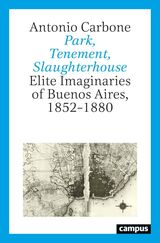 Park, Tenement, Slaughterhouse: Elite Imaginaries of Buenos Aires, 1852–1880
Antonio Carbone
Campus Verlag, 2022 An analysis of what the history of epidemic diseases can reveal about urban planning.
In the 1860s and 1870s, Buenos Aires was hit by a series of dramatic cholera and yellow fever epidemics that decimated its population and inspired extensive debates on urban space among its elites. The book takes readers into three intriguing spaces—the slaughterhouses, the tenements, and the park of Palermo—which found themselves at the center of the discussions about the causes of epidemic disease. The banning of industrial slaughterhouses from the city, reform of tenement houses, and construction of a major park promised to tackle the problem of disease while giving rise to new visions of the city. By analyzing the discussion on these spaces, the book illuminates critical spatial junctures at the crossroads of both local and global forces and reconstructs the interconnection between elite imaginaries and the production of space. Park, Tenement, Slaughterhouse reveals that the history of epidemic diseases can tell us a great deal about urban space, the relationships between different social classes in cities, and the articulations of global and local forces.
 Parker: Movie Tie-in Edition, Originally Published as "Flashfire"
Richard Stark
University of Chicago Press, 2012
There have been many film adaptations of Richard Stark’s novels over the years, but none of them actually featured a protagonist named Parker—and none of them fully captured Parker’s chilling tenacity and laconic anticharm. Here for the first time is the real Parker, played by Jason Statham. Adapted by Black Swan screenwriter John J. McLaughlin, and directed by Taylor Hackford, Parker is sure to both satisfy Stark fans and action-movie lovers. And there couldn’t be a better Parker novel to bring to the silver screen than the fast-paced and stylish Flashfire.
When Flashfire opens, Parker isn’t happy. Three associates have borrowed his money for a job without permission, and he isn’t satisfied to wait and see if they make good. Instead, he vows to kill them all. Tearing across America to take their job out from under them, Parker finds himself in West Palm Beach. There things go sour. While attempting to trick the denizens of Palm Beach into accepting him for one of their own, Parker is gut-shot and forced to rely on a beautiful civilian, played in the film by Jennifer Lopez, for help. But even injured and exhausted, Parker still has his killer instinct, and he shows how unwise—and deadly—it is to cross him. Part heist movie, part unexpected romance, and mostly explosions, Parker brings to life Stark’s hero with verve and violence, while taking viewers on an action-packed adventure they won’t soon forget.
Also starring Michael Chiklis, Nick Nolte, Patti Lupone, and Wendell Pierce, Parker is hitting theaters near you this January. Hard.
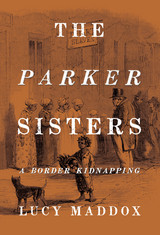 The Parker Sisters: A Border Kidnapping
Lucy Maddox
Temple University Press, 2016 In 1851, Elizabeth Parker, a free black child in Chester County, Pennsylvania, was bound and gagged, snatched from a local farm, and hurried off to a Baltimore slave pen. Two weeks later, her teenage sister, Rachel, was abducted from another Chester County farm. Because slave catchers could take fugitive slaves and free blacks across state lines to be sold, the border country of Pennsylvania/Maryland had become a dangerous place for most black people.
In The Parker Sisters, Lucy Maddox gives an eloquent, urgent account of the tragic kidnapping of these young women. Using archival news and courtroom reports, Maddox tells the larger story of the disastrous effect of the Fugitive Slave Act on the small farming communities of Chester County and the significant, widening consequences for the state and the nation.
The Parker Sisters is also a story about families whose lives and fates were deeply embedded in both the daily rounds of their community and the madness and violence consuming all of antebellum America. Maddox’s account of this horrific and startling crime reveals the strength and vulnerability of the Parker sisters and the African American population.
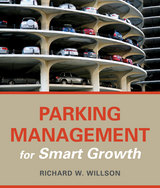 Parking Management for Smart Growth
Richard W. Willson
Island Press, 2015 The average parking space requires approximately 300 square feet of asphalt. That’s the size of a studio apartment in New York or enough room to hold 10 bicycles. Space devoted to parking in growing urban and suburban areas is highly contested—not only from other uses from housing to parklets, but between drivers who feel entitled to easy access. Without parking management, parking is a free-for-all—a competitive sport—with arbitrary winners and losers. Historically drivers have been the overall winners in having free or low-cost parking, while an oversupply of parking has created a hostile environment for pedestrians.
In the last 50 years, parking management has grown from a minor aspect of local policy and regulation to a central position in the provision of transportation access. The higher densities, tight land supplies, mixed land uses, environmental and social concerns, and alternative transportation modes of Smart Growth demand a different approach—actively managed parking.
This book offers a set of tools and a method for strategic parking management so that communities can better use parking resources and avoid overbuilding parking. It explores new opportunities for making the most from every parking space in a sharing economy and taking advantage of new digital parking tools to increase user interaction and satisfaction. Examples are provided of successful approaches for parking management—from Pasadena to London. At its essence, the book provides a path forward for strategic parking management in a new era of tighter parking supplies.
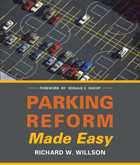 Parking Reform Made Easy
Richard W. Willson
Island Press, 2013 Today, there are more than three parking spaces for every car in the United States. No one likes searching for a space, but in many areas, there is an oversupply, wasting valuable land, damaging the environment, and deterring development. Richard W. Willson argues that the problem stems from outdated minimum parking requirements. In this practical guide, he shows practitioners how to reform parking requirements in a way that supports planning goals and creates vibrant cities. Local planners and policymakers, traffic engineers, developers, and community members are actively seeking this information as they institute principles of Smart Growth. But making effective changes requires more than relying on national averages or copying information from neighboring communities. Instead, Willson shows how professionals can confidently create requirements based on local parking data, an understanding of future trends affecting parking use, and clear policy choices. After putting parking and parking requirements in context, the book offers an accessible tool kit to get started and repair outdated requirements. It looks in depth at parking requirements for multifamily developments, including income-restricted housing, workplaces, and mixed-use, transit-oriented development. Case studies for each type of parking illustrate what works, what doesn’t, and how to overcome challenges. Willson also explores the process of codifying regulations and how to work with stakeholders to avoid political conflicts. With Parking Reform Made Easy, practitioners will learn, step-by-step, how to improve requirements. The result will be higher density, healthier, more energy-efficient, and livable communities. This book will be exceptionally useful for local and regional land use and transportation planners, transportation engineers, real estate developers, citizen activists, and students of transportation planning and urban policy.
 Parkinson’s Disease and the Family: A New Guide
Nutan Sharma, M.D., and Elaine Richman, Ph.D.
Harvard University Press, 2005 Parkinson’s disease is a movement disorder characterized by tremor, stiffness, and slow gait. It affects 500,000 people in the United States, with approximately 50,000 new cases diagnosed annually. But its impact is much wider. Family members with little understanding of the disease often find themselves struggling to help their loved one navigate the complexities of the health care system. Patients wonder, Which treatments are best for me? Will I be able to live on my own? Should I join a drug trial?
In this straightforward, compassionate guide, Nutan Sharma and Elaine Richman address these concerns and more. They provide a thorough review of the etiology, diagnosis, and current treatment of Parkinson’s, with special consideration given to the effect on family dynamics and routines—including the often neglected topics of long-term care and sexual function. The authors also review the pros and cons of various alternative therapies, including nutritional supplements, massage therapy, and traditional Chinese medicine.
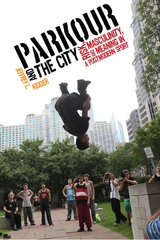 Parkour and the City: Risk, Masculinity, and Meaning in a Postmodern Sport
Kidder, Jeffrey L.
Rutgers University Press, 2017 In the increasingly popular sport of parkour, athletes run, jump, climb, flip, and vault through city streetscapes, resembling urban gymnasts to passersby and awestruck spectators. In Parkour and the City, cultural sociologist Jeffrey L. Kidder examines the ways in which this sport involves a creative appropriation of urban spaces as well as a method of everyday risk-taking by a youth culture that valorizes individuals who successfully manage danger.
Parkour’s modern development has been tied closely to the growth of the internet. The sport is inevitably a YouTube phenomenon, making it exemplary of new forms of globalized communication. Parkour’s dangerous stunts resonate, too, Kidder contends, with a neoliberal ideology that is ambivalent about risk. Moreover, as a male-dominated sport, parkour, with its glorification of strength and daring, reflects contemporary Western notions of masculinity. At the same time, Kidder writes, most athletes (known as “traceurs” or “freerunners”) reject a “daredevil” label, preferring a deliberate, reasoned hedging of bets with their own safety—rather than a “pushing the edge” ethos normally associated with extreme sports.
Parks and Carrying Capacity: Commons Without Tragedy
Robert E. Manning
Island Press, 2007 Parks and Carrying Capacity is an important new work for faculty, graduate and undergraduate students, and researchers in outdoor recreation, park planning and management, and natural resource conservation and management, as well as for professional planners and managers involved with park and outdoor recreation related agencies and nongovernmental organizations.
Parks and People: Managing Outdoor Recreation at Acadia National Park
Edited by Robert E. Manning
University Press of New England, 2009 Parks and People describes fifteen years of research at Maine’s Acadia National Park, conducted by Robert E. Manning, his colleagues, and students. The book is organized into three parts. Part I addresses indicators and standards of quality for park resources and the visitor experience. Part II describes efforts to monitor indicator variables. Part III outlines and assesses management actions designed to maintain standards of quality. The book concludes with a discussion of the implications of this program of natural and social science research, including a series of principles for outdoor recreation management at Acadia and other parks.
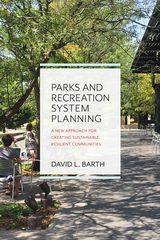 Parks and Recreation System Planning: A New Approach for Creating Sustainable, Resilient Communities
David L. Barth
Island Press, 2020 Parks and recreation systems have evolved in remarkable ways over the past two decades. No longer just playgrounds and ballfields, parks and open spaces have become recognized as essential green infrastructure with the potential to contribute to community resiliency and sustainability. To capitalize on this potential, the parks and recreation system planning process must evolve as well. In Parks and Recreation System Planning, David Barth provides a new, step-by-step approach to creating parks systems that generate greater economic, social, and environmental benefits.
Barth first advocates that parks and recreation systems should no longer be regarded as isolated facilities, but as elements of an integrated public realm. Each space should be designed to generate multiple community benefits. Next, he presents a new approach for parks and recreation planning that is integrated into community-wide issues. Chapters outline each step—evaluating existing systems, implementing a carefully crafted plan, and more—necessary for creating a successful, adaptable system. Throughout the book, he describes initiatives that are creating more resilient, sustainable, and engaging parks and recreation facilities, drawing from his experience consulting in more than 100 communities across the U.S.
Parks and Recreation System Planning meets the critical need to provide an up-to-date, comprehensive approach for planning parks and recreation systems across the country. This is essential reading for every parks and recreation professional, design professional, and public official who wants their community to thrive.
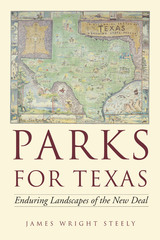 Parks for Texas: Enduring Landscapes of the New Deal
By James Wright Steely
University of Texas Press, 1999 State parks across Texas offer a world of opportunities for recreation and education. Yet few park visitors or park managers know the remarkable story of how this magnificent state park system came into being during the depths of the Great Depression in the 1930s. Drawing on archival records and examining especially the political context of the New Deal, James Wright Steely here provides the first comprehensive history of the founding and building of the Texas state park system. Steely's history begins in the 1880s with the movement to establish parks around historical sites from the Texas Revolution. He follows the fits-and-starts progress of park development through the early 1920s, when Governor Pat Neff envisioned the kind of park system that ultimately came into being between 1933 and 1942. During the Depression an amazing cast of personalities from Franklin D. Roosevelt to Lyndon Johnson led, followed, or obstructed the drive to create this state park system. The New Deal federal-state partnerships for depression relief gave Texas the funding and personnel to build 52 recreational parks under the direction of the National Park Service. Steely focuses in detail on the activities of the Civilian Conservation Corps, whose members built parks from Caddo Lake in the east to the first park improvements in the Big Bend out west. An appendix lists and describes all the state parks in Texas through 1945, while Steely's epilogue brings the parks' story up to the present.
 Parks in Peril: People, Politics, and Protected Areas
Edited by Katrina Brandon, Kent H. Redford, and Steven Sanderson
Island Press, 1998 Using the experience of the Parks in Peril program -- a wide-ranging project instituted by The Nature Conservancy and its partner organizations in Latin America and the Caribbean to foster better park management -- this book presents a broad analysis of current trends in park management and the implications for biodiversity conservation. It examines the context of current park management and challenges many commonly held views from social, political, and ecological perspectives. The book argues that: biodiversity conservation is inherently political sustainable use has limitations as a primary tool for biodiversity conservation effective park protection requires understanding the social context at varying scales of analysis actions to protect parks need a level of conceptual rigor that has been absent from recent programs built around slogans and stereotypesNine case studies highlight the interaction of ecosystems, local peoples, and policy in park management, and describe the context of field-based conservation from the perspective of those actually implementing the programs. Parks in Peril builds from the case studies and specific park-level concerns to a synthesis of findings from the sites. The editors draw on the case studies to challenge popular conceptions about parks and describe future directions that can ensure long-term biodiversity conservation.Throughout, contributors argue that protected areas are extremely important for the protection of biodiversity, yet such areas cannot be expected to serve as the sole means of biodiversity conservation. Requiring them to carry the entire burden of conservation is a recipe for ecological and social disaster.
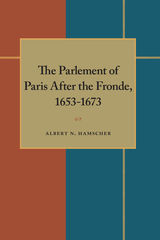 The Parlement of Paris after the Fronde 1653-1673
Albert N. Hamscher
University of Pittsburgh Press, 1976
This book assesses how and to what extent the governments of Cardinal Mazarin and Louis XIV controlled the Parlement of Paris in the two decades after the civil wars known as the Fronde. The history of this prestigious court of law bears directly on the broader issue of the growth of “royal absolutism.” Few historians have examined the resurgence of royal authority after the Fronde from the vantage point of traditional institutions, and no other scholarly work deals extensively with the activities of Parlement during this controversial period. This study reveals the methods, achievements, and limitations of absolutism associated with the Sun King.
The book investigates the impact of royal policies on the way the judges acquired and transmitted their posts, the sources of their wealth, the social composition of their court, and their judicial and administrative authority. Parlement's political activities and its conflicts with the crown over issues of judicial, financial, and religious importance also receive thorough treatment.
The author's extensive archival research indicates that many widely held assumptions about declining importance of Parlement after the civil war are unwarranted. Although Parlement's political activities gradually declined, this transformation was neither as complete nor as irreversible as historians have asserted. Parlement retained some voice in affairs of state, and most of the administrative machinery it could employ to oppose royal policy remained intact. Moreover, the crown failed to attack the sources of parlementaire wealth, and the judges freely enhanced their court's status as a social corporation.
 Parliament Buildings: The Architecture of Politics in Europe
Edited by Sophia Psarra, Uta Staiger, and Claudia Sternberg
University College London, 2023 An interdisciplinary study of how the physical space of parliament buildings influences politics.
As political polarization undermines confidence in the shared values and established constitutional orders of many nations, it is imperative that we explore how parliaments are to stay relevant and accessible to the citizens whom they serve. The rise of modern democracies is thought to have found physical expression in the staged unity of the parliamentary seating plan. However, the built forms alone cannot give sufficient testimony to the exercise of power in political life.
Parliament Buildings brings together architecture, history, art history, history of political thought, sociology, behavioral psychology, anthropology, and political science to raise a host of challenging questions. How do parliament buildings give physical form to norms and practices, behaviors, rituals, identities, and imaginaries? How are their spatial forms influenced by the political cultures they accommodate? What kinds of histories, politics, and morphologies do the diverse European parliaments share, and how do their political trajectories intersect?
This volume offers an eclectic exploration of the complex nexus between architecture and politics in Europe. Including contributions from architects who have designed or remodeled four parliament buildings in Europe, it provides the first comparative, multi-disciplinary study of parliament buildings across Europe and across history.
 The Parliament of 1624: Politics and Foreign Policy
Robert E. Ruigh
Harvard University Press, 1971 In 1624 James I invited Parliament to discuss issues of war and peace, setting a precedent which would make yet another inroad into the ancient prerogatives of the crown. The so-called “Happy Parliament” dismayed the peace-loving King by supporting Prince Charles and the Duke of Buckingham in their demands for war with Spain.
Robert Ruigh presents an absorbing and authoritative analytic narrative of the proceedings between Parliament and the crown and their far-reaching constitutional and political consequences. His use of fifteen parliamentary diaries and other contemporary manuscripts has resulted in a balanced account which avoids the tendency to vilify the Stuarts and glorify the Commons, and which provides an integrated and perceptive picture of the Parliament. He presents an analysis of patronage in relation to the composition of the Commons and a reevaluation of historical generalizations about the senility and ineffectuality of King James during his declining years, the seizure of power by the Duke and the Prince and their management of Parliament, the precedent of free speech in foreign affairs, and the effect of Parliament on contemporary politics.
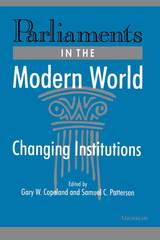 Parliaments in the Modern World: Changing Institutions
Gary Copeland and Samuel C. Patterson, Editors
University of Michigan Press, 1994 Parliaments in the Modern World presents the case that these legislative bodies – long characterized as institutionalized and therefore static – are in fact changing at a surprising rate. Whether the changes are subtle (as in the United Kingdom) or responding to fundamental constitutional rearrangements (as in Italy and Germany), even the casual observer no longer views parliaments as regular or predictable. Focusing on the parliaments of Great Britain, Germany, Italy, Scandinavia, Turkey, and Central and Eastern Europe, contributors to this volume try to understand how, when, and why parliaments modify themselves.
The editors frame the book in the theoretical questions of how institutionalized bodies accomplish change. They explain the nature of the institutionalizing process and show that as the ability for an organization to fulfill its mission changes (or as the mission itself changes), corresponding adaptation becomes necessary if the institution is to remain viable. The individual case studies amply illustrate how modifications in the governing ideology, the party, the electoral systems, or the character of membership have precipitated change at various times and in various parliaments. Parliaments in the Modern World ultimately demonstrates that it is precisely this ability to change that has kept these organizations vital, responsive, and long-lived.
 Parlor and Kitchen: Housing and Domestic Culture in Budapest, 1870-1940
Gábor Gyáni
Central European University Press, 2002 Besides Berlin, Budapest was the fastest-growing capital city in Europe at the end of the nineteenth century. Parlor and Kitchen, the work of a microhistorian and historical anthropologist, describes the development of private spaces in this newly emerged metropolis. Author Gábor Gyáni has chosen two distinct groups of contemporary society: the upper middle class and the working class, to present their homes, domestic culture and attitudes. At the same time the book offers a panoramic view of the everyday life of the entire society, on social segregation and mobility. Behind the visual details the author reveals a great deal about the value systems of the groups of society investigated. Reconstructing minute details as well as case studies, the author has relied on archival sources, private documents, and statistical data. The text is accompanied by contemporary photographs, maps and blueprints. This enlightening and interesting volume will be of interest not only to historians, anthropologists and sociologists, but also to the general reader with an interest in urban history. Gábor Gyáni is founder and editor of the quarterly Budapest Review of Books. He is President of the Hungarian-American Historians' Committee and Secretary of the Urban History Workshop of the Hungarian Academy of Sciences. A student of the late professor Péter Hanák, Gyáni is active in research into the urban and social history of modern Hungary and the theory and methodology of history writing.
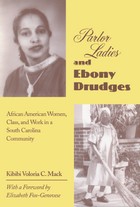 Parlor Ladies & Ebony Drudges: African American Women, Class, and Work in a South Carolina Community
Kibibi Voloria C. Mack
University of Tennessee Press, 2011 “Parlor Ladies and Ebony Drudges does not simply fill in another piece of the mosaic that women’s historians have been assembling. Raising new questions, it offers a fresh perspective on the history of African American women and invites us to follow new paths of inquiry.”—from the Foreword by Elizabeth Fox-Genovese
Focusing on the community of Orangeburg, South Carolina, from 1880 to 1940, Parlor Ladies and Ebony Drudges explores the often sharp class divisions that developed among African African women in that small, semirural area.
Kibibi Voloria Mack’s research challenges the conventional thesis that all African American women toiled—and toiled hard—throughout their lives. She shows that this was only true if they belonged to certain socioeconomic classes. Mack finds that, in Orangeburg, a significant minority did not have to work outside the home (unless they chose to do so) and that some even had staffs of domestics to do their housework—a situation paralleling that of the town’s genteel white women. While the factors of gender and race did restrict the lives of all African American women in Jim Crow Orangeburg, Mack argues, there was no real solidarity across class lines. In fact, as she points out, tensions often arose between women of the upper classes and those of the middle and working classes.
Mack offers a rich picture of the work patterns, social lives, home lives, attitudes, and self-images of the women of each class, carefully distinguishing their differences and noting the historical changes and continuities that affected them. The book is not only an important contribution to the study of African American women in the South but also to the research on women’s work more generally: it is a vital corrective to the past emphasis on white women living in northeastern urban areas.
The Author: Kibibi Voloria C. Mack is an assistant professor in the Africana Studies Department at the University of Maryland, Baltimore County. She is a native of Orangeburg, South Carolina, and received her doctorate in history at the State University of New York, Binghamton. The mother of four daughters, she has also written several books for young people on African and African American history.
 Parlor Ponds: The Cultural Work of the American Home Aquarium, 1850 - 1970
Judith Hamera
University of Michigan Press, 2012 Parlor Ponds: The Cultural Work of the American Home Aquarium, 1850–1970 examines the myriad cultural meanings of the American home aquarium during the nineteenth and twentieth centuries and argues that the home aquarium provided its enthusiasts with a potent tool for managing the challenges of historical change, from urbanization to globalization. The tank could be a window to an alien world, a theater for domestic melodrama, or a vehicle in a fantastical undersea journey. Its residents were seen as inscrutable and wholly disposable “its,” as deeply loved and charismatic individuals, and as alter egos by aquarists themselves. Parlor Ponds fills a gap in the growing field of animal studies by showing that the tank is an emblematic product of modernity, one using elements of exploration, technology, science, and a commitment to rigorous observation to contain anxieties spawned by industrialization, urbanization, changing gender roles, and imperial entanglements. Judith Hamera engages advertisements, images, memoirs, public aquarium programs, and enthusiast publications to show how the history of the aquarium illuminates complex cultural attitudes toward nature and domestication, science and religion, gender and alterity, and national conquest and environmental stewardship with an emphasis on the ways it illuminates American public discourse on colonial and postcolonial expansion.
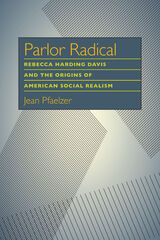 Parlor Radical: Rebecca Harding Davis and the Origins of American Social Realism
Jean Pfaelzer
University of Pittsburgh Press, 1997 Rebecca Harding Davis was a prominent author of radical social fiction during the latter half of the nineteenth century. In stories that combine realism with sentimentalism, Davis confronted a wide range of contemporary American issues, giving voice to working women, prostitutes, wives seeking divorce, celibate utopians, and female authors. Davis broke down distinctions between the private and the public worlds, distinctions that trapped women in the ideology of domesticity.
By engaging current strategies in literary hermeneutics with a strong sense of historical radicalism in the Gilded Age, Jean Pfaelzer reads Davis through the public issues that she forcefully inscribed in her fiction. In this study, Davis's realistic narratives actively construct a coherent social work, not in a fictional vacuum but in direct engagement with the explosive movements of social change from the Civil War through the turn of the century.
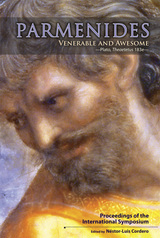 Parmenides, Venerable and Awesome. Plato, Theaetetus 183e: Proceedings of the International Symposium
Cordero, Néstor-Luis
Parmenides Publishing, 2012 In October of 2007, the Universidad Nacional de San Martín (Argentina) hosted an International Symposium on the philosophy of Parmenides to celebrate the creation of the University’s new Center for the Study of Ancient Philosophy. The event—co-organized by the HYELE Institute for Comparative Studies (Switzerland) and Parmenides Publishing—brought together scholars from around the world to present their latest work and participate in discussion. These Proceedings present the collected papers that were given—all fully translated into English—and edited by Néstor-Luis Cordero. During the two years leading up to the International Symposium, no fewer than seven books on Parmenides were published. This revival and resurgence of interest in Parmenides and the critical reviews of traditional interpretations of his poem made this the perfect time for a global conference dedicated to the renowned figure known as the true father of philosophy. The Symposium on Parmenides united the world's foremost Parmenidean scholars, with many participants having written one, if not several books on Parmenides. The proceedings volume therefore represents the most cutting-edge and in-depth scholarship on Parmenides available today, and will be a great and timely enrichment to the field of Presocratic Philosophy.
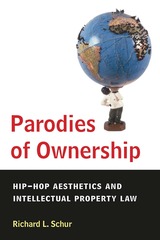 Parodies of Ownership: Hip-Hop Aesthetics and Intellectual Property Law
Richard L. Schur
University of Michigan Press, 2009 "Richard Schur offers a provocative view of contemporary African American cultural politics and the relationship between African American cultural production and intellectual property law."
---Mark Anthony Neal, Duke University "Whites used to own blacks. Now, they accomplish much the same thing by insisting that they 'own' ownership. Blacks shouldn't let them. A culture that makes all artists play by its rules will end up controlling new ideas and stifling change. Richard Schur's fine book explains why."
---Richard Delgado, Seattle University What is the relationship between hip-hop and African American culture in the post--Civil Rights era? Does hip-hop share a criticism of American culture or stand as an isolated and unique phenomenon? How have African American texts responded to the increasing role intellectual property law plays in regulating images, sounds, words, and logos? Parodies of Ownership examines how contemporary African American writers, artists, and musicians have developed an artistic form that Schur terms "hip-hop aesthetics." This book offers an in-depth examination of a wide range of contemporary African American painters and writers, including Anna Deavere Smith, Toni Morrison, Adrian Piper, Colson Whitehead, Michael Ray Charles, Alice Randall, and Fred Wilson. Their absence from conversations about African American culture has caused a misunderstanding about the nature of contemporary cultural issues and resulted in neglect of their innovative responses to the post--Civil Rights era. By considering their work as a cross-disciplinary and specifically African American cultural movement, Schur shows how a new paradigm for artistic creation has developed. Parodies of Ownership offers a broad analysis of post--Civil Rights era culture and provides the necessary context for understanding contemporary debates within American studies, African American studies, intellectual property law, African American literature, art history, and hip-hop studies. Weaving together law, literature, art, and music, Schur deftly clarifies the conceptual issues that unify contemporary African American culture, empowering this generation of artists, writers, and musicians to criticize how racism continues to affect our country. Richard L. Schur is Director, Interdisciplinary Studies Center, and Associate Professor of Interdisciplinary Studies at Drury University. Visit the author's website: http://www2.drury.edu/rschur/index.htm. Cover illustration: Atlas, by Fred Wilson. © Fred Wilson, courtesy Pace Wildenstein, New York.
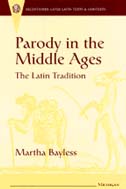 Parody in the Middle Ages: The Latin Tradition
Martha Bayless
University of Michigan Press, 1996 Parody in the Middle Ages: The Latin Tradition surveys and analyzes Latin parodies of texts and documents--Biblical parody, drinker's masses, bawdy litanies, lives of saints such as Nemo (Nobody) and Invicem (One-Another), and nonsense texts--in Western Europe from the early Middle Ages to the Renaissance. This book also sketches in the background to the canonical works of medieval literature: Chaucer's fabliaux, French comic tales such as the Roman de Renart, and medieval satire in general.
Bayless' study shows with great clarity that parody was a significant and vibrant literary form in the Middle Ages. In addition, her research sheds new light on clerical culture. The clerics who composed these parodies were far from meddling guardians of somber piety; rather, they appeared to see no contradiction between merriment and devotion. The wide dissemination and long life of these drolleries--some circulated for a thousand years--indicate a taste for clerical amusement that challenges conventional views of medieval solemnity.
Parody in the Middle Ages surveys in detail five of the most common traditions of parody. It provides a complete list of all known medieval Latin parodies, and also provides twenty complete texts in an appendix in the original Latin, with English translations. These texts have been collated from over a hundred manuscripts, many previously unknown. The study brings to light both a form and many texts that have remained obscure and inaccessible until now.
Parody in the Middle Ages appeals to the modern audience not only for its cultural value but also for the same reason the parodies appealed to the medieval audience: they are simply very funny. This welcome new volume will be of particular interest to students of medieval satire and literary culture, to medieval Latinists, and to those who want to explore the breadth of medieval culture.
Martha Bayless is Assistant Professor of English, University of Oregon.
PARS in Charge: Resources and Strategies for Online Writing Program Leaders
Jessie Borgman
University Press of Colorado, 2023 This edited collection, the third in a series of books by editors Jessie Borgman and Casey McArdle, explores the complexity of administrative positions within writing programs and how online courses make administration even more complex. Drawing on the PARS framework (Personal, Accessible, Responsive, Strategic) used in the first two books, PARS in Charge provides insights and examples from administrators across the country focusing on how they have implemented the PARS framework to be successful online writing program leaders in their specific leadership positions.
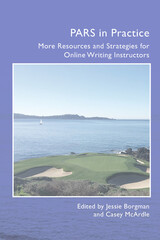 PARS in Practice: More Resources and Strategies for Online Writing Instructors
Jessie Borgman
University Press of Colorado, 2021 By focusing on being Personal, Accessible, Responsive, and Strategic (PARS), this book explores the complexities and anxieties associated with online writing instruction (OWI). The PARS approach is an innovative way to self support your own online writing instruction and/or provide support for your OWI faculty. This collection offers extensive examples of how to create personal assignments, syllabi, and learning spaces that connect with students while teaching you how to be accessible and craft accessible documents and spaces. The contributors assert that when you create an online writing course, you're crafting a user experience. With this in mind, they encourage you to be strategic in planning and teaching your online courses as you continually iterate your course design and teaching practices in an effort to create a better user experience for everyone. Together, Borgman and McArdle are creators of The Online Writing Instruction Community, a website and social media group dedicated to collecting and sharing online writing instruction resources. They coauthored a book which was released in the fall of 2019 titled Personal, Accessible, Responsive, Strategic: Resources and Strategies for Online Writing Instructors, which is based on their PARS approach to online writing instruction. They host professional development workshops on online writing instruction and the PARS approach.
The Parsi Theatre: Its Origins and Development
Somnath Gupt
Seagull Books, 2005 A seminal study of a historically significant theater style.
Unrivaled in its long-term impact, Parsi theater remains a crucial component of South Asia’s cultural heritage. Like vaudeville in America, Parsi theater dominated mass entertainment in colonial India in the era before cinema. Drawn by the magic of sight and sound, crowds filled the country’s urban playhouses each night. Marked by extravagant acting, operatic singing, and melodramatic stage effects, this cosmopolitan theater brought an unprecedented level of sophistication to the South Asian stage and transformed commercial drama into a modern industry, paving the way for Indian cinema. This volume presents Somnath Gupt’s classic history of Parsi theater in an English translation enhanced by illustrations, annotations, and appendices, which make it a more comprehensive and accurate reference work.
Parsing through Customs: Essays by a Freudian Folklorist
Alan Dundes
University of Wisconsin Press, 1987 In these stimulating essays, Alan Dundes presents a history of psychoanalytic studies of folklore while also showing how folklore methodology can be used to clarify and validate psychoanalytic theory. Dundes’ work is unique in its symbolic analysis of the ordinary imagination. His data are children’s games, folktales, everyday speech, cultural metaphors for power and prestige, and rituals associated with childbirth.
Parsnips in the Snow: Talks with Midwestern Gardeners
Jane Anne Staw
University of Iowa Press, 1990 Through conversations with twelve vastly different gardeners—among them a Trappist monk, a retired mailman, and an advertising copywrite—this enchanting volume captures the spirit of midwestern garderners. Illustrated throughout it is the wholesale dedication of midwesterners to their gardens—despite drought, heat, disabilities, and other challenges. Anyone who delights in gardening, the Midwest, or human triumph will enjoy this book.
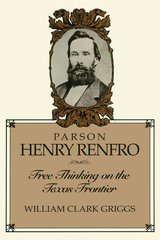 Parson Henry Renfro: Free Thinking on the Texas Frontier
By William C. Griggs
University of Texas Press, 1994 The years following the Texas Revolution held even more turbulent events as diverse droves of pioneers crossed the Sabine and Red Rivers to start new lives in Texas. Early Texas society contended with religious issues, family life in a rugged environment, and the Civil War. This cultural history was clearly reflected in the life of frontier preacher Henry C. Renfro. Migrating to Texas in 1851, Renfro enrolled in the fledgling Baylor University and became a Baptist preacher. Eventually disillusioned with Baptist orthodoxy, Renfro was disenfranchised on charges of infidelity as he embraced the ideals of the Free Thought Movement, inspired by the writings of men such as Thomas Paine, Spinoza, and Robert Ingersoll. Renfro's Civil War experience was no less unusual. Serving as both soldier and chaplain, Renfro left a valuable legacy of insight into the conflict, captured in a wealth of correspondence that is in itself significant. Drawing on a vast body of letters, speeches, sermons, and oral histories that had never before been available, this chronological narrative of "The Parson's" life describes significant changes in Texas from 1850 to 1900, especially the volatile formation and growth of Baptist churches in North Central Texas. William Griggs' study yields numerous new details about the Free Thought Movement and depicts public reaction to sectarian leaders in nineteenth-century Texas. The author also describes the developing Central Texas region known as the Cross Timbers, including the personal dynamics between a frontier family and its patriarch and encompassing such issues as property conflicts, divorce, and family reconciliation. This work unlocks an enlightening, engaging scene from Texas history.
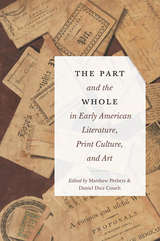 The Part and the Whole in Early American Literature, Print Culture, and Art
Matthew Pethers
Bucknell University Press, 2024 The essays in this pathbreaking collection consider the significance of varied early American fragmentary genres and practices—from diaries and poetry, to almanacs and commonplace books, to sermons and lists, to Indigenous ruins and other material shards and fragments—often overlooked by critics in a scholarly privileging of the “whole.” Contributors from literary studies, book history, and visual culture discuss a host of canonical and non-canonical figures, from Edward Taylor and Washington Irving to Mary Rowlandson and Sarah Kemble Knight, offering insight into the many intellectual, ideological, and material variations of “form” that populated the early American cultural landscape. As these essays reveal, the casting of the fragmentary as aesthetically eccentric or incomplete was a way of reckoning with concerns about the related fragmentation of nation, society, and self. For a contemporary audience, they offer new ways to think about the inevitable gaps and absences in our cultural and historical archive.
 Part of Nature, Part of Us: Modern American Poets
Helen Vendler
Harvard University Press, 1980 “Vendler sparkles.”
—Irvin Ehrenpreis, New York Review of Books
America’s foremost critic savors the poetry that made—and remade—our twentieth-century canon.
The American poet Randall Jarrell once defined the ideal critic as “an extremely good reader—one who has learned to show to others what he saw in what he read.” By this measure, Helen Vendler is the best of her generation. Never doctrinaire or merely academic, she is an evangelist for poetic truth, guiding readers along the tracks of her own authoritative readings to disclose the interplay of form, feeling, and perception that defines each poet’s idiosyncratic vision of the world.
A compilation of essays and reviews written for the New York Times Book Review and other outlets, Part of Nature, Part of Us is a dazzling retrospective of the authors who defined midcentury American poetry. The work collected here, originally published in the late 1960s and 1970s, marks the first time that canonical modern poets like T. S. Eliot, Marianne Moore, and Sylvia Plath could be judged from a critical distance. Reviewing more recent poets—including Robert Lowell, Elizabeth Bishop, and Adrienne Rich—Vendler also gives readers a chance to share in the “freshness of [her] first impressions.” Throughout, she is unforgiving but never unfair. She exults those who, like Lowell, show an essential fidelity to perception, who “say what happened” without stumbling into a mass of clichés. But she is unsparing with those who come to distrust their own emotions and retreat into clinical facticity, like the later Moore.
Unflinching, engrossing, and frequently poetic in its own right, Part of Nature, Part of Us confirms Vendler’s unmatched ability to pinpoint great poets’ value as thinkers, as artists, and, finally, as humans.
 Part of Nature, Part of Us: Modern American Poets
Helen Vendler
Harvard University Press “Vendler sparkles.”
—Irvin Ehrenpreis, New York Review of Books
America’s foremost critic savors the poetry that made—and remade—our twentieth-century canon.
The American poet Randall Jarrell once defined the ideal critic as “an extremely good reader—one who has learned to show to others what he saw in what he read.” By this measure, Helen Vendler is the best of her generation. Never doctrinaire or merely academic, she is an evangelist for poetic truth, guiding readers along the tracks of her own authoritative readings to disclose the interplay of form, feeling, and perception that defines each poet’s idiosyncratic vision of the world.
A compilation of essays and reviews written for the New York Times Book Review and other outlets, Part of Nature, Part of Us is a dazzling retrospective of the authors who defined midcentury American poetry. The work collected here, originally published in the late 1960s and 1970s, marks the first time that canonical modern poets like T. S. Eliot, Marianne Moore, and Sylvia Plath could be judged from a critical distance. Reviewing more recent poets—including Robert Lowell, Elizabeth Bishop, and Adrienne Rich—Vendler also gives readers a chance to share in the “freshness of [her] first impressions.” Throughout, she is unforgiving but never unfair. She exults those who, like Lowell, show an essential fidelity to perception, who “say what happened” without stumbling into a mass of clichés. But she is unsparing with those who come to distrust their own emotions and retreat into clinical facticity, like the later Moore.
Unflinching, engrossing, and frequently poetic in its own right, Part of Nature, Part of Us confirms Vendler’s unmatched ability to pinpoint great poets’ value as thinkers, as artists, and, finally, as humans.
 A Part of the Heart Can't Be Eaten: A Memoir
Tristan Taormino
Duke University Press, 2023 In A Part of the Heart Can’t Be Eaten, award-winning author, sex educator, filmmaker, and podcast host Tristan Taormino shares her coming-of-age story, revealing how her radical sexuality and unconventional career grew out of an extraordinary queer father-daughter relationship. Raised by a hard-working single mother on Long Island, Tristan got her sex ed from the 1980s TV show Solid Gold and The Joy of Sex. She spent summers at drag shows in Provincetown with her father, Bill, who had come out as gay in the mid-1970s. Her sexual identity bloomed during her college years at Wesleyan University, where she discovered her desire for butches and kinky sex.
Tristan’s world began to fall apart when her dad was diagnosed with AIDS. After a series of devastating events, she moved to the messy, glorious world of 1990s New York City. In the midst of grief and depression, she helped change queer sexual subculture with her zine Pucker Up, her infamous The Village Voice column, and her editorship of legendary lesbian porn magazine On Our Backs. After the publication of her first book, The Ultimate Guide to Anal Sex for Women, Tristan followed her own path that marked the beginning of her work as a trailblazing feminist pornographer.
After a lifetime of outrageous adventures, Tristan reflects on the bonds, loss, and mental-health struggles that shaped her. She weaves together history from her father’s unpublished memoir, exploring the surprising ways their personal patterns converge and diverge. Bracingly emotional and erotically charged, A Part of the Heart Can’t Be Eaten reveals the transformative power of queer pleasure and defiance.
 A Part, Yet Apart: South Asians in Asian America
Lavina Shankar
Temple University Press, 1998 As people from the cultures of the Indian sub-continent increasingly participate in the complex and often heated debates about race and ethnicity in the United States, they confront questions about naming and claiming an identity that designates their group in this country. To be sure, claiming any single identity omits, perhaps threatens to obliterate, the significant political, historical, economic, and religious differences between their countries of origin. However, the term "South Asian" is growing in acceptance among people in this country who trace their heritage to India, Pakistan, Sri Lanka, Bhutan, Bangladesh, Nepal, and Maldives because it acknowledges common interests while it allows for difference.
This construction process parallels the gradual acceptance of the term "Asian American" by peoples primarily of East and Southeast Asian ancestry who found abundant reason to claim a shared identity in dealing with officialdom and an apparently intractable racism in this country. In time, "Asian American" has become a designation of collective pride for a wide range of peoples. In academic institutions and society generally, there are vexed questions about the term's inclusiveness and the dominance of established groups over more recent ones.
A Part, Yet Apart: South Asians in Asian America concerns itself with the extent to which South Asian American are and ought to be included within Asian America -- as that term is applied to academic programs and admission policies; grassroots community organizing and politics more broadly; and critical analyses of cultural products. Taken together these essays form a spirited dialogue on the dilemmas of identity politics, coalition building, and diasporics.
Partenia, A Pastoral Play: A Bilingual Edition
Barbara Torelli Benedetti
Iter Press, 2013 The Other Voice’s edition of Barbara Torelli’s pastoral drama Partenia (c. 1586) is a groundbreaking contribution to the study of early modern Italian literature and women’s writing. This is the first ever print edition of the earliest secular play by an Italian woman, acclaimed at the time of its composition—the drama theorist Angelo Ingegneri placed it on a par with Tasso’s Aminta and Guarini’s Pastor fido—but long forgotten, to the extent that it was believed lost until the early twentieth century, when the first manuscript of it surfaced in Cremona.
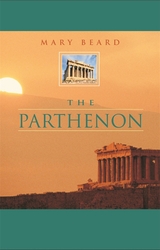 The Parthenon
Mary Beard
Harvard University Press, 2003 Read the Bldg Blog interview with Mary Beard about the Wonders of the World series(Part I and Part II)
Oscar Wilde compared it to a white goddess, Evelyn Waugh to Stilton cheese. In observers from Lord Byron to Sigmund Freud to Virginia Woolf it met with astonishment, rapture, poetry, even tears--and, always, recognition. Twenty-five hundred years after it first rose above Athens, the Parthenon remains one of the wonders of the world, its beginnings and strange turns of fortune over millennia a perpetual source of curiosity, controversy, and intrigue.
At once an entrancing cultural history and a congenial guide for tourists, armchair travelers, and amateur archaeologists alike, this book conducts readers through the storied past and towering presence of the most famous building in the world. Who built the Parthenon, and for what purpose? How are we to understand its sculpture? Why is it such a compelling monument? The classicist and historian Mary Beard takes us back to the fifth century B.C. to consider the Parthenon in its original guise--as the flagship temple of imperial Athens, housing an enormous gold and ivory statue of the city's patron goddess attended by an enigmatic assembly of sculptures. Just as fascinating is the monument's far longer life as cathedral church of Our Lady of Athens, as "the finest mosque in the world," and, finally, as an inspirational ruin and icon. Beard also takes a cool look at the bitter arguments that continue to surround the "Elgin Marbles," the sculptures from the Parthenon now in the British Museum. Her book constitutes the ultimate tour of the marvelous history and present state of this glory of the Acropolis, and of the world.
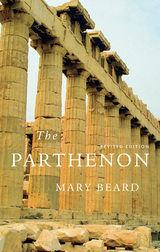 The Parthenon: Revised Edition
Mary Beard
Harvard University Press, 2010 “Wry and imaginative, this gem of a book deconstructs the most famous building in Western history.”
—Benjamin Schwarz, The Atlantic
“In her brief but compendious volume [Beard] says that the more we find out about this mysterious structure, the less we know. Her book is especially valuable because it is up to date on the restoration the Parthenon has been undergoing since 1986.”
—Gary Wills, New York Review of Books
At once an entrancing cultural history and a congenial guide for tourists, armchair travelers, and amateur archaeologists alike, this book conducts readers through the storied past and towering presence of the most famous building in the world. In the revised version of her classic study, Mary Beard now includes the story of the long-awaited new museum opened in 2009 to display the sculptures from the building that still remain in Greece, as well as the controversies that have surrounded it, and asks whether it makes a difference to the “Elgin Marble debate.”
 The Parthenon Sculptures
Ian Jenkins
Harvard University Press, 2007 The Parthenon sculptures in the British Museum are unrivaled examples of classical Greek art, an inspiration to artists and writers since their creation in the fifth century bce. A superb visual introduction to these wonders of antiquity, this book offers a photographic tour of the most famous of the surviving sculptures from ancient Greece, viewed within their cultural and art-historical context.
Ian Jenkins offers an account of the history of the Parthenon and its architectural refinements. He introduces the sculptures as architecture--pediments, metopes, Ionic frieze--and provides an overview of their subject matter and possible meaning for the people of ancient Athens. Accompanying photographs focus on the pediment sculptures that filled the triangular gables at each end of the temple; the metopes that crowned the architrave surmounting the outer columns; and the frieze that ran around the four sides of the building, inside the colonnade. Comparative images, showing the sculptures in full and fine detail, bring out particular features of design and help to contrast Greek ideas with those of other cultures.
The book further reflects on how, over 2,500 years, the cultural identity of the Parthenon sculptures has changed. In particular, Jenkins expands on the irony of our intimate knowledge and appreciation of the sculptures--a relationship far more intense than that experienced by their ancient, intended spectators--as they have been transformed from architectural ornaments into objects of art.
Parthian Pottery from Seleucia on the Tigris
Neilson C. Debevoise
University of Michigan Press, 1934 The author examines ceramic material from the Parthian site of Seleucia-on-the-Tigris; more than 1500 extant examples are arranged into type groups, and selections published. Parthian Pottery from Seleucia on the Tigris offers a satisfactory presentation of Parthian ware in the Mesopotamian valley.
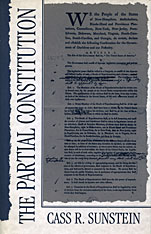 The Partial Constitution
Cass R. Sunstein
Harvard University Press, 1993 American constitutional law is at a crossroads. In a major new interpretation of the Constitution, Cass Sunstein offers a clear account of our present dilemmas and shows where we might go from here.
As it is currently interpreted, the Constitution is partial, Sunstein asserts. It is, first of all, biased. Contemporary constitutional law treats the status quo as neutral and just, and any departure as necessarily partisan. But when the status quo is neither neutral nor just, Sunstein argues, reasoning of this sort produces injustice. The Constitution is also partial in another sense: its meaning has come to be identified solely with the decisions of the Supreme Court. This was not always the case, as Sunstein demonstrates; nor was it the intention of the country's founders. Instead, the Constitution often served as a catalyst for public deliberation about its general terms and aspirations--and Sunstein makes a strong case for reviving this broader understanding of the Constitution's role.
In light of this analysis, Sunstein proposes solutions to some of the most hotly disputed issues of our time, including affirmative action, sex discrimination, pornography, "hate speech," and government funding of religious schools and the arts. In an especially striking argument, he claims that theequal protection clause of the Fourteenth Amendment--not the right to privacy--protects a woman's right to choose abortion. Sunstein connects these and other debates to the Constitution's historic commitment to public deliberation among political equalsand in doing so, he reconceives many of our most basic constitutional rights, such as free speech and equality under law. He urges that public deliberation about the meaning of the Constitution in turn be freed from a principle of neutrality based on the status quo. His work points to a historically sound but fundamentally new understanding of the American constitutional process as an exercise in deliberative democracy.
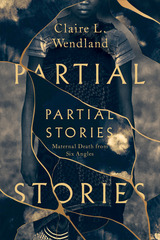 Partial Stories: Maternal Death from Six Angles
Claire L. Wendland
University of Chicago Press, 2022 A close look at stories of maternal death in Malawi that considers their implications in the broader arena of medical knowledge.
By the early twenty-first century, about one woman in twelve could expect to die of a pregnancy or childbirth complication in Malawi. Specific deaths became object lessons. Explanatory stories circulated through hospitals and villages, proliferating among a range of practitioners: nurse-midwives, traditional birth attendants, doctors, epidemiologists, herbalists. Was biology to blame? Economic underdevelopment? Immoral behavior? Tradition? Were the dead themselves at fault?
In Partial Stories, Claire L. Wendland considers these explanations for maternal death, showing how they reflect competing visions of the past and shared concerns about social change. Drawing on extended fieldwork, Wendland reveals how efforts to legitimate a single story as the authoritative version can render care more dangerous than it might otherwise be. Historical, biological, technological, ethical, statistical, and political perspectives on death usually circulate in different expert communities and different bodies of literature. Here, Wendland considers them together, illuminating dilemmas of maternity care in contexts of acute change, chronic scarcity, and endemic inequity within Malawi and beyond.
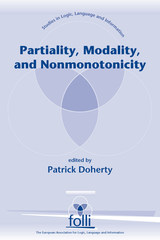 Partiality, Modality and Nonmonotonicity
Patrick Doherty
CSLI, 1996 This edited volume of articles provides a state-of-the-art description of research in logic-based approaches to knowledge representation which combines approaches to reasoning with incomplete information that include partial, modal, and nonmonotonic logics. The collection contains two parts: foundations and case studies. The foundations section provides a general overview of partiality, multi-valued logics, use of modal logic to model partiality and resource-limited inference, and an integration of partial and modal logics. The case studies section provides specific studies of issues raised in the foundations section. Several of the case studies integrate modal and partial modal logics with nonmonotonic logics. Both theoretical and practical aspects of such integration are considered. Knowledge representation issues such as default reasoning, theories of action and change, reason maintenance, awareness, and automation of nonmonotonic reasoning are covered.
Partially Excited States
Charles Hood
University of Wisconsin Press, 2017 Charles Hood shows us a strange and perplexing world that runs on sadness, microbrews, snack cakes, and inexplicable magic. Brimming with natural history and bright flashes of language, his poems focus on transformations. He takes us from Paleolithic caves to modern movie theaters, and along the way we fix time machines with Tom Hanks, enter a Rousseau painting, and collect diamonds from the moons of Neptune.
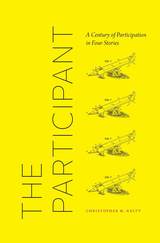 The Participant: A Century of Participation in Four Stories
Christopher M. Kelty
University of Chicago Press, 2020 Participation is everywhere today. It has been formalized, measured, standardized, scaled up, network-enabled, and sent around the world. Platforms, algorithms, and software offer to make participation easier, but new technologies have had the opposite effect. We find ourselves suspicious of how participation extracts our data or monetizes our emotions, and the more procedural participation becomes, the more it seems to recede from our grasp.
In this book, Christopher M. Kelty traces four stories of participation across the twentieth century, showing how they are part of a much longer-term problem in relation to the individual and collective experience of representative democracy. Kelty argues that in the last century or so, the power of participation has dwindled; over time, it has been formatted in ways that cramp and dwarf it, even as the drive to participate has spread to nearly every kind of human endeavor, all around the world. The Participant is a historical ethnography of the concept of participation, investigating how the concept has evolved into the form it takes today. It is a book that asks, “Why do we participate?” And sometimes, “Why do we refuse?”
Participation and Political Equality: A Seven-Nation Comparison
Sidney Verba
University of Chicago Press, 1987 In this survey of political participation in seven nations—Nigeria, Austria, Japan, India, the Netherlands, Yugoslavia, and the United States—the authors examine the relationship between social, economic, and educational factors and political participation.
Participation in America: Political Democracy and Social Equality
Sidney Verba and Norman H. Nie
University of Chicago Press, 1987 Participation in America represents the largest study ever conducted of the ways in which citizens participate in American political life. Sidney Verba and Norman H. Nie addresses the question of who participates in the American democratic process, how, and with what effects. They distinguish four kinds of political participation: voting, campaigning, communal activity, and interaction with a public official to achieve a personal goal. Using a national sample survey and interviews with leaders in 64 communities, the authors investigate the correlation between socioeconomic status and political participation. Recipient of the Kammerer Award (1972), Participation in America provides fundamental information about the nature of American democracy.
Participation, Responsibility and Choice: Summoning the Active Citizen in Western European Welfare States
Edited by Janet Newman and Evelien Tonkens
Amsterdam University Press, 2011 Faced with budget problems and an aging population, European governments in recent years have begun reconsidering the structure and extent of the welfare state. Guarantees and directives have given way to responsibilities and choice. This volume analyzes the effect of this change on the citizens of Germany, Finland, Norway, the Netherlands, France, Italy and the United Kingdom. It traces the emergence of new discourses around social movements for greater independence, power, and control, and the way these discourses serve to reframe the struggle at hand. Making use of ethnographic research and policy analysis, the authors analyze the cultural transition, tensions, and trajectory of this call toward active citizenship.
 Participatory Biblical Exegesis: A Theology of Biblical Interpretation
Matthew Levering
University of Notre Dame Press, 2008
The interpretation of Scripture has depended largely on the view of history held by theologians and exegetes. In Participatory Biblical Exegesis, Matthew Levering examines the changing views of history that distinguish patristic and medieval biblical exegesis from modern historical-critical exegesis.
Levering argues for a delicate interpretive balance, in which history is understood both as a process that participates in God’s creative and redemptive presence and as a set of linear moments. He identifies a split between theological and historical interpretations of scripture beginning in the high Middle Ages, considerably earlier than the emergence of historical-critical methods in the seventeenth and eighteenth centuries. Instead, he offers a vision of Scripture that is rooted in the exegetical practice of St. Thomas Aquinas and his sources but embraces historical-critical research as well.
Participatory Biblical Exegesis provides an original theological basis for critical exegesis. It integrates the work of contemporary exegetes, philosophers, theologians, and historians to provide a compelling vision of biblical interpretation.
"In recent years a number of theologians have addressed the growing awareness that a strictly historical approach to the interpretation of the Bible has run its course. . . . Levering's book is the most learned and sophisticated discussion of the issues to date." —Robert Louis Wilken, University of Virginia
"Here one of the most prolific young Catholic theologians offers a stimulating diagnosis of what's missing from contemporary perspectives on biblical interpretation. Levering's focus on properly understanding the nature of 'history' can reorient not only Catholic interpreters but also other traditions, without denying the legitimate value of critical scholarship. His nuanced recovery of the church's classic wisdom abounds with theological richness and spiritual encouragement." —Daniel J. Treier, Wheaton College
“This book presents an authoritative case for the reintegration of history and participation. Biblical interpretation, Levering claims, cannot rely on a purely linear view of history; instead, exegetes can only grasp the contents of the biblical text inasmuch as they participate in the faith of the Church. His sacramental hermeneutic, as well as his masterful display of scholarship, marks Levering as the true heir of Henri de Lubac, the great twentieth-century advocate of spiritual interpretation. This volume ought to function as a touchstone, both for Protestant and for Catholic approaches to sacred doctrine.” —Hans Boersma, J.I. Packer Professor of Theology, Regent College
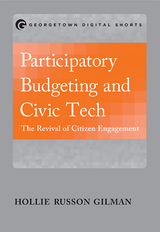 Participatory Budgeting and Civic Tech: The Revival of Citizen Engagement
Hollie Russon Gilman
Georgetown University Press, 2016 In a time when citizens are deeply dissatisfied with the basic institutions and elected officials that govern them, the participatory budgeting movement empowers citizens to get results for pressing community needs. It creates a transparent process where citizens can propose projects through traditional community meetings or use civic technologies to provide input online, work with elected officials to craft budget proposals, and vote on where and how to spend public funds. Unlike other forms of civic engagement, participatory budgeting involves spending real public money on the priorities that the community identifies. In this brief work, Hollie Russon Gilman explains the history and concepts of participatory budgeting. First used abroad, participatory budgeting has been piloted in Chicago, New York City, Boston, and several other cities across the United States since 2009. She relates participatory budgeting to other forms of civic innovation and proposes ways for new digital tools to increase entry points for civic engagement. This brief and accessible work is an ideal introduction to participatory budgeting for students, scholars, and practitioners. Georgetown Digital Shorts—longer than an article, shorter than a book—deliver timely works of peer-reviewed scholarship for a fast-paced world. They present new ideas and original content that are easily digestible for students, scholars, and general readers.
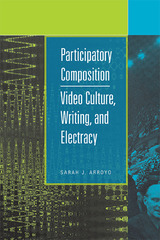 Participatory Composition: Video Culture, Writing, and Electracy
Sarah J. Arroyo
Southern Illinois University Press, 2013 Like. Share. Comment. Subscribe. Embed. Upload. Check in. The commands of the modern online world relentlessly prompt participation and encourage collaboration, connecting people in ways not possible even five years ago. This connectedness no doubt influences college writing courses in both form and content, creating possibilities for investigating new forms of writing and student participation. In this innovative volume, Sarah J. Arroyo argues for a “participatory composition,” inspired by the culture of online video sharing and framed by theorist Gregory Ulmer’s concept of electracy. Electracy, according to Ulmer, “is to digital media what literacy is to alphabetic writing.” Although electracy can be compared to digital literacy, it is not something shut on and off with the power buttons on computers or mobile devices. Rather, electracy encompasses the cultural, institutional, pedagogical, and ideological implications inherent in the transition from a culture of print literacy to a culture saturated with electronic media, regardless of the presence of actual machines. Arroyo explores the apparatus of electracy in many of its manifestations while focusing on the participatory practices found in online video culture, particularly on YouTube. Chapters are devoted to questions of subjectivity, definition, authorship, and pedagogy. Utilizing theory and incorporating practical examples from YouTube, classrooms, and other social sites, Arroyo presents accessible and practical approaches for writing instruction. Additionally, she outlines the concept of participatory composition by highlighting how it manifests in online video culture, offers student examples of engagement with the concept, and advocates participatory approaches throughout the book. Arroyo presents accessible and practical possibilities for teaching and learning that will benefit scholars of rhetoric and composition, media studies, and anyone interested in the cultural and instructional implications of the digital age.
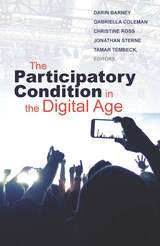 The Participatory Condition in the Digital Age
Darin Barney
University of Minnesota Press, 2016 Just what is the “participatory condition”? It is the situation in which taking part in something with others has become both environmental and normative. The fact that we have always participated does not mean we have always lived under the participatory condition. What is distinctive about the present is the extent to which the everyday social, economic, cultural, and political activities that comprise simply being in the world have been thematized and organized around the priority of participation. Structured along four axes investigating the relations between participation and politics, surveillance, openness, and aesthetics, The Participatory Condition in the Digital Age comprises fifteen essays that explore the promises, possibilities, and failures of contemporary participatory media practices as related to power, Occupy Wall Street, the Arab Spring uprisings, worker-owned cooperatives for the post-Internet age; paradoxes of participation, media activism, open source projects; participatory civic life; commercial surveillance; contemporary art and design; and education. This book represents the most comprehensive and transdisciplinary endeavor to date to examine the nature, place, and value of participation in the digital age. Just as in 1979, when Jean-François Lyotard proposed that “the postmodern condition” was characterized by the questioning of historical grand narratives, The Participatory Condition in the Digital Age investigates how participation has become a central preoccupation of our time. Contributors: Mark Andrejevic, Pomona College; Bart Cammaerts, London School of Economics and Political Science (LSE); Nico Carpentier, Vrije Universiteit Brussel (VUB – Free University of Brussels) and Charles University in Prague; Julie E. Cohen, Georgetown University; Kate Crawford, MIT; Alessandro Delfanti, University of Toronto; Christina Dunbar-Hester, University of Southern California; Rudolf Frieling, California College of Arts and the San Francisco Art Institute; Salvatore Iaconesi, La Sapienza University of Rome and ISIA Design Florence; Jason Edward Lewis, Concordia University; Rafael Lozano-Hemmer; Graham Pullin, University of Dundee; Trebor Scholz, The New School in New York City; Cayley Sorochan, McGill University; Bernard Stiegler, Institute for Research and Innovation in Paris; Krzysztof Wodiczko, Harvard Graduate School of Design; Jillian C. York.
 Participatory Culture Wars: Controversy, Conflict, and Complicity in Fandom
Simone Driessen
University of Iowa Press, 2025 From writing fan fiction to campaigning for better media representation, fandom and participatory culture have long been seen as tools to resist dominant narratives and fight for a better future. But participatory culture is not always socially and politically progressive; rather, as Participatory Culture Wars demonstrates, it can be politically regressive and socially reactive. Communities coalesce around the exclusionary and the misinformed.
Fans, fandoms, and fan practices are no longer the realm of media and popular culture; they have been adopted and co-opted across the contemporary political terrain. This volume offers specific examples and suggests approaches that can help make sense of the constantly shifting interaction between fandom and politics.
Contributors:
Alfred Archer, Renee Barnes, Simone Driessen, Xing Fan, Monica Flegel, Zoe Hurley, Bethan Jones, Sklaerenn Le Gallo, Judith Leggatt, Georgina Mills, Peng Qiao, James Rendell, Mel Stanfill, Michelle Stewart, Rebecca Williams, Christina Wurst
 Participatory Democracy in Brazil: Socioeconomic and Political Origins
J. Ricardo Tranjan
University of Notre Dame Press, 2016 The largely successful trajectory of participatory democracy in post-1988 Brazil is well documented, but much less is known about its origins in the 1970s and early 1980s. In Participatory Democracy in Brazil: Socioeconomic and Political Origins, J. Ricardo Tranjan recounts the creation of participatory democracy in Brazil. He positions the well-known Porto Alegre participatory budgeting at the end of three interrelated and partially overlapping processes: a series of incremental steps toward broader political participation taking place throughout the twentieth century; short-lived and only partially successful attempts to promote citizen participation in municipal administration in the 1970s; and setbacks restricting direct citizen participation in the 1980s. What emerges is a clearly delineated history of how socioeconomic contexts shaped Brazil’s first participatory administrations.
Tranjan first examines Brazil’s long history of institutional exclusion of certain segments of the population and controlled inclusion of others, actions that fueled nationwide movements calling for direct citizen participation in the 1960s. He then presents three case studies of municipal administrations in the late 1970s and early 1980s that foreground the impact of socioeconomic factors in the emergence, design, and outcome of participatory initiatives. The contrast of these precursory experiences with the internationally known 1990s participatory models shows how participatory ideals and practices responded to the changing institutional context of the 1980s. The final part of his analysis places developments in participatory discourses and practices in the 1980s within the context of national-level political-institutional changes; in doing so, he helps bridge the gap between the local-level participatory democracy and democratization literatures.
"In Participatory Democracy in Brazil: Socioeconomic and Political Origins, J. Ricardo Tranjan makes an important contribution to broader theoretical debates on political development. Rather than focusing on the now famous participatory budgeting program in Porto Alegre, he extends his analysis to better situate the emphasis on participatory democracy in a larger historical context. His corrective history will be of interest to scholars of participatory democracy, contemporary Brazilian social and political history, and democratic studies."
—Brian Wampler, professor of political science, Boise State University
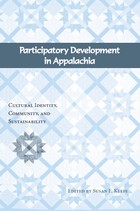 Participatory Development in Appalachia: Cultural Identity, Community, and Sustainability
Susan E. Keefe
University of Tennessee Press, 2009 Often thought of as impoverished, backward, and victimized, the people of the southern mountains have long been prime candidates for development projects conceptualized and controlled from outside the region. This book, breaking with old stereotypes and the strategies they spawned, proposes an alternative paradigm for development projects in Appalachian communities-one that is far more inclusive and democratic than previous models.
Emerging from a critical analysis of the modern development process, the participatory development approach advocated in this book assumes that local culture has value, that local communities have assets, and that local people have the capacity to envision and provide leadership for their own social change. It thus promotes better decision making in Appalachian communities through public participation and civic engagement.
Filling a void in current research by detailing useful, hands-on tools and methods employed in a variety of contexts and settings, the book combines relevant case studies of successful participatory projects with practical recommendations from seasoned professionals. Editor Susan E. Keefe has included the perspectives of anthropologists, sociologists, and others who have been engaged, sometimes for decades, in Appalachian communities. These contributors offer hopeful new strategies for dealing with Appalachia's most enduring problems-strategies that will also aid activists and researchers working in other distressed or underserved communities.
Susan E. Keefe is professor of anthropology at Appalachian State University. She is the editor of Appalachian Mental Health and Appalachian Cultural Competency: A Guide for Medical, Mental Health, and Social Service Professionals.
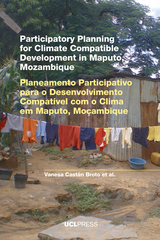 Participatory Planning for Climate Compatible Development in Maputo, Mozambique
Edited by Vanesa Castán Broto, Jonathan Ensor, Emily Boyd, Charlotte Allen, Carlos Seventine, and Domingos Augusto Macucule
University College London, 2015 Participatory Planning for Climate Compatible Development in Maputo, Mozambique is a practitioners’ handbook that builds upon the experience of a pilot project that was awarded the United Nations ‘Lighthouse Activity’ Award. Building upon a long scholarly tradition of participatory planning, this dual-language (English/Portuguese) book addresses crucial questions about the relevance of citizen participation in planning for climate compatible development and argues that citizens have knowledge and access to resources that enable them to develop a sustainable vision for their community. In order to do so, the author proposes a Participatory Action Planning methodology to organise communities, and also advances mechanisms for institutional development through partnerships.
Participatory Practice: Community-Based Action for Transformative Change
Margaret Ledwith and Jane Springett
Bristol University Press, 2009 Ledwith and Springett's innovative approach bridges the divide between ideas and practice and allows the development of the knowledge that is needed to bring about transformative social change. Their ideas are founded on two premises: firstly, that transformative practice begins in the everyday stories that people tell about their lives and that practical theory generated from these narratives is the best way to inform both policy and practice. Secondly, that participatory practice is a tool for examining this knowledge that allows practitioners to examine the way they view the world and to situate their local practice within bigger social issues. The book will be of interest to both academics and community-based practitioners.
 Particle and Wave
Benjamin Landry
University of Chicago Press, 2014 Are we alone? If so, Particle and Wave insists that we need not be lonely. Here the periodic table of elements—a system familiar to many of us from high school chemistry—unfolds in a series of unexpected meanings with connotations public, personal, and existential. Based on a logic that considers the atomic symbol an improvised phoneme, Particle and Wave is keenly attuned to the qualities of voice and concerned with how these improvisations fall on the listening ear. From the most recent housing bust, to the artistic visions of Christo and Jeanne Claude, to the labors of the Curies, to Pliny the Younger’s account of the eruption of Vesuvius, culture and world histories are recontextualized through the lens of personal experience. Muscular, precise, structurally varied, and imagistic, these poems engage in lyricism yet resist mere confession. In doing so they project the self as a composite, speaking in a variety of registers, from the nursery rhyme songster, to the ascetic devotee, to the unapologetic sensualist. They welcome all comers and elbow the bounded physical world to make way for a dynamic, new subjectivity.
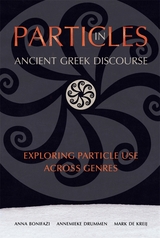 Particles in Ancient Greek Discourse: Exploring Particle Use across Genres
Anna Bonifazi
Harvard University Press The study of ancient Greek particles has been an integral part of the study of the Greek language from its earliest beginnings. Among the first parts of speech to be distinguished in Greek scholarship were the σύνδεσμοι (“combiners”), which include the later category of particles. In the Renaissance, Matthaeus Devarius—a Greek scholar working in Rome—published a monograph on particles only sixteen years after Estienne’s Thesaurus Linguae Graecae, and in the nineteenth century many great German philologists devoted considerable attention to particles and their forms, functions, and meanings. In the second half of the twentieth century Greek particles have returned to scholarly attention, partly as a result of the developments in contemporary linguistics.
The Emmy-Noether project “The Pragmatic Functions and Meanings of Ancient Greek Particles,” carried out in the Classics Department of the University of Heidelberg from 2010 to 2014, set out to trace more than two millennia of research on Greek particles, and to take stock of current work on particles, both within and beyond ancient Greek. Building on the foundations of this scholarship, Particles in Ancient Greek Discourse undertakes an analysis of particle use across five genres of ancient Greek discourse: epic, lyric, tragedy, comedy, and historiography.
 Particles in Our Air: Concentrations and Health Effects
Richard Wilson and John D. Spengler
Harvard University Press, 1996 It is no secret that the burning of fossil fuels causes air pollution and adversely affects the health of the human population. Over the last 10 years, research has been providing new insight about the health consequences of particulate air pollution. Generated by the use of fossil energy, respirable-sized particles pose a major threat to our environment and health. In this book the hypothesis that fossil fuels are the primary culprit is examined in detail, including the nature, generation, and transport of particulate air pollution. The authors cite studies on animals and epidemiological studies—those showing acute effects soon after exposure and those exhibiting chronic effects decades later—and include models describing mechanisms by which the effects of fine particulates can be induced. Through its probing inquiry, this book makes clear that present levels of air pollution, even in countries with aggressive environmental controls, are a health hazard that must be contended with.
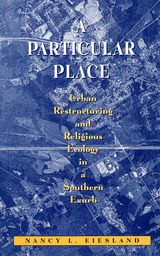 A Particular Place: Urban Restructuring and Religious Ecology in a Southern Exurb
Eiesland, Nancy L
Rutgers University Press, 2000 A Particular Place tells the story of the dramatic changes that take place in the religious lives of a community faced with urban restructuring—in this case, Dacula, Georgia, a once-quiet small town on the outskirts of Atlanta. The demographics of Dacula were changed dramatically by the population inflow, service sector development, and housing expansion brought on by the growing metropolis. Nancy L. Eiesland provides a qualitative study of how the local religious congregations altered themselves, their relations with one another, and—over time—their community in light of this disruption to their social order. Eiesland accounts for these changes by examining the lives of area newcomers and long-time residents, discussing the responses of locals to the emergence of a megachurch in their community, investigating the wrenching processes of congregational birth and deaths, and studying responses to community conflicts. Applying population ecology approaches to the study of religious organizations within their local contexts, A Particular Place addresses together two types of restructuring that are often mutually implicated—urban and religious restructuring. This book demonstrates all that can be learned from studious attention to a particular place.
Parties and Elections in Greece: The Search for Legitimacy
Richard Clogg
Duke University Press, 1987 Although Greece acquired the formal institutions of liberal constitutional democracy early in her independent history, her politics have been characterized by clientelism, instability and frequent military intervention. The most blatant instance of 'praetorianism' was the military dictatorship of 1967-74. Yet in the years since the Colonels' downfall, the political system appears to have acquired a new legitimacy. Although many features of the 'old' politics remain, recent years have seen the collapse of the traditional centre and the emergence of new political formations, reflecting the rapid pace of post-war socio-economic change. And 1981 saw the election by a convincing majority of a socialist government, the first ever in Greece, committed to radical domestic transformation and to a major reorientation of external relations.
 Parties and Leaders in the Postreform House
David W. Rohde
University of Chicago Press, 1991 Since the Second World War, congressional parties have been characterized as declining in strength and influence. Research has generally attributed this decline to policy conflicts within parties, to growing electoral independence of members, and to the impact of the congressional reforms of the 1970s. Yet the 1980s witnessed a strong resurgence of parties and party leadership—especially in the House of Representatives.
Offering a concise and compelling explanation of the causes of this resurgence, David W. Rohde argues that a realignment of electoral forces led to a reduction of sectional divisions within the parties—particularly between the northern and southern Democrats—and to increased divergence between the parties on many important issues. He challenges previous findings by asserting that congressional reform contributed to, rather than restrained, the increase of partisanship. Among the Democrats, reforms siphoned power away from conservative and autocratic committee chairs and put control of those committees in the hands of Democratic committee caucuses, strengthening party leaders and making both party and committee leaders responsible to rank-and-file Democrats. Electoral changes increased the homogeneity of House Democrats while institutional reforms reduced the influence of dissident members on a consensus in the majority party. Rohde's accessible analysis provides a detailed discussion of the goals of the congressional reformers, the increased consensus among Democrats and its reinforcement by their caucus, the Democratic leadership's use of expanded powers to shape the legislative agenda, and the responses of House Republicans. He also addresses the changes in the relationship between the House majority and the president during the Carter and Reagan administrations and analyzes the legislative consequences of the partisan resurgence.
A readable, systematic synthesis of the many complex factors that fueled the recent resurgence of partisanship, Parties and Leaders in the Postreform House is ideal for course use.
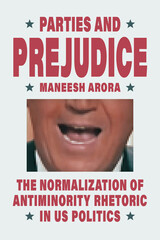 Parties and Prejudice: The Normalization of Antiminority Rhetoric in US Politics
Maneesh Arora
University of Chicago Press, 2025 An essential guide to how the interactions between social norms, party politics, and expressions of prejudice are driving contemporary politics. Antiminority rhetoric in American politics has grown more overt. What were once fringe comments on Stormfront have now become typical campaign appeals from many mainstream politicians. If there was ever a doubt, this is a poignant reminder that the boundaries of what is “acceptable” and “unacceptable” to say and do are fluid and socially enforced. In Parties and Prejudice, Maneesh Arora offers a broad framework for understanding this new political terrain. Arora argues that the interaction between social norms and party politics determines what the political consequence of prejudicial speech will be. He illuminates this nuanced relationship by showing that norms vary based on the targeted minority group and the intended audience. Drawing on experiments, survey data, news coverage, and real-world examples, Parties and Prejudice examines the distinctive ways that egalitarian/inegalitarian norms have developed—within each party—for Black, Muslim, and LGBTQ+ Americans. It is essential reading for understanding Donald Trump’s rise to power, the modern conservative agenda (including opposition to critical race theory and transgender rights), and threats to the development of a multiracial democracy.
Parties And Unions In The New Global Economy
Katrina Burgess
University of Pittsburgh Press, 2004
For much of the twentieth century, unions played a vital role in shaping political regimes and economic development strategies, particularly in Latin America and Europe. However, their influence has waned as political parties with close ties to unions have adopted neoliberal reforms harmful to the interests of workers.
What do unions do when confronted with this “loyalty dilemma”? Katrina Burgess compares events in three countries to determine the reasons for widely divergent responses on the part of labor leaders to remarkably similar challenges. She argues that the key to understanding why some labor leaders protest and some acquiesce lies essentially in two domains: the relative power of the party and the workers to punish them, and the party's capacity to act autonomously from its own government.
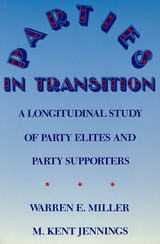 Parties in Transition
Warren Miller
Russell Sage Foundation, 1986 Every four years, the drama of presidential selection inspires a reassessment of our political parties. Central to this assessment are the delegates who gather at Democratic and Republican national conventions. Parties in Transition presents a richly modulated body of data of the changing attitudes and behaviors of these delegates—their ideologies and loyalties, their recruitment into presidential politics, their persistence in or disengagement from it. Covering three recent sets of conventions and involving over five thousand delegates, this comprehensive study makes an essential contribution to our understanding of American party politics. "Richer and more authoritative than most of the best works in the field." —Election Politics "A most important study of change in the American political scene....Richly deserves to be read." —John H. Kessel, Ohio State University "[A] shrewd and sophisticated analysis....Both scholars and practitioners should read this book and ponder it." —Austin Ranney, University of California, Berkeley
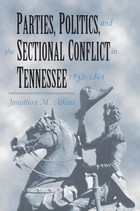 Parties, Politics, and the Sectional Conflict in Tennessee, 1832-1861: Tennessee 1832-1861
Jonathan M. Atkins
University of Tennessee Press, 2011
In this thought-provoking study, Jonathan M. Atkins provides a fresh look at the partisan ideological battles that marked the political culture of antebellum Tennessee. He argues that the legacy of party politics was a key factor in shaping Tennessee's hesitant course during the crisis of Union in 1860–61.
Between the Jacksonian era and the outbreak of the Civil War, Atkins demonstrates, the competition between Democrats and Whigs in Tennessee was as heated as any in the country. The conflict centered largely on differing conceptions of republican liberty and each party's contention that the other posed a serious threat to that liberty. As the slavery question pushed to the forefront of national politics, Tennessee's parties absorbed the issue into the partisan tumult that already existed. Both parties pledged to defend southern interests while preserving the integrity of the Union. Appeals for the defense of liberty and Union interests proved effective with voters and profoundly influenced the state's actions during the secession crisis. The belief that a new national Union party could preserve the Union while checking the Lincoln administration encouraged voters initially to reject secession. With the outbreak of war, however, West and Middle Tennesseans chose to accept disunion to avoid what they saw as coercion and military despotism by the North. East Tennesseans, meanwhile, preferred loyalty to the Union over membership in a Southern confederacy dominated by a slaveholding aristocracy.
No previous book has so clearly detailed the role of party politics and ideology in Tennessee's early history. As Atkins shows, the ideological debate helps to explain not only the character and survival of Tennessee's party system but also the peristent strength of unionism in a state that ultimately joined the Southern cause.
The Author: Jonathan M. Atkins is assistant professor of history at Berry College in Mt. Berry, Georgia.
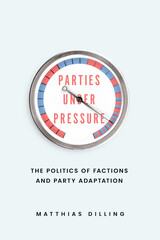 Parties under Pressure: The Politics of Factions and Party Adaptation
Matthias Dilling
University of Chicago Press, 2024 An illuminating investigation into why some parties evolve with their times while others fall behind. Around the world, established political parties face mounting pressures: insurgents on the Left and Right, altered media environments, new policy challenges, and the erosion of traditional strongholds, to name just a few. Yet parties have differed enormously in their ability to move with the times and update their offers to voters. This variation matters. While adaptation does not guarantee a party’s electoral success, the failure to modernize can spell its decline, even collapse, and create openings for radical and populist parties that may threaten the future of liberal democracy. Parties under Pressure examines why some parties adapt meaningfully to social, economic, and political transformations while others flounder, focusing especially on the fate of Western Europe’s Christian democratic parties. Matthias Dilling reveals the under-appreciated importance of party factions. While very high levels of factionalism are counter-productive and create paralysis, more moderate levels of factionalism help parties to adapt by giving visibility to fresh groups and ideas. Dilling draws on extensive archival research in Germany, Italy, and Austria, as well as evidence from France, Japan, and beyond. Taking a comparative-historical approach, Parties under Pressure sheds new light on parties’ varying records of adaptive reforms over more than seventy-five years.
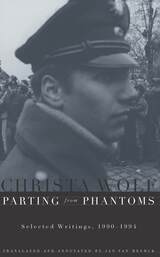 Parting from Phantoms: Selected Writings, 1990-1994
Christa Wolf
University of Chicago Press, 1997 Parting from Phantoms is a window into the soul of the most prominent writer of the German Democratic Republic and its most famous export, Christa Wolf. The essays, diary entries, and letters in this book document four agonizing years in Wolf's personal history and paint a vivid portrait of the cultural and political situation in the former German Democratic Republic. This collection stands as an important testimony to the personal and cultural costs of German reunification.
"The works in this book constitute an essential document of the history of reunified Germany, and this alone recommends it to scholars and those interested in current European events."— Publishers Weekly
"Christa Wolf was arguably the most influential writer of a nation that no longer exists. . . . Parting from Phantoms traces the fever chart of her anguish. . . . In some ways, the rawness of the present volume is its greatest contribution, and its bona fides—testifying to the human cost of deception and self-deception."—Todd Gitlin, Nation
"A thrilling display of ideological soul-searching."—Ilan Stavans, Newsday, Favorite Books of 1997
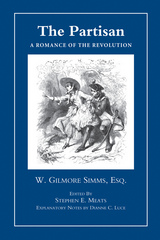 The Partisan: A Romance of Revolution
William Gilmore Simms
University of Arkansas Press, 2011 The writings of William Gilmore Simms (1806-1870) provide a sweeping fictional portrait of the colonial and antebellum South in all of its regional diversity. Simms's account of the region is more comprehensive than that of any other author of his time; he treats the major intellectual and social issues of the South and depicts the bonds and tensions among all of its inhabitants. By the mid-1840s Simms's novels were so well known that Edgar Allan Poe could call him "the best novelist which this country has, on the whole, produced." The thirteenth volume in the ongoing Arkansas Edition of the works of Simms, The Partisan is the first in order of publication of Simms's Revolutionary War romances. Although Simms took advantage of the novelist's prerogative to invent characters and events for his saga, he did so with a historian's eye, making extensive use of official histories; letters, diaries, and other documents; family traditions; and unpublished and published memoirs. Simms gives human interest to the novel's historical framework with two love triangles, mixing romantic conventions with gritty realism that outlines the four classes of Simms's ideal society. The Partisan is also remarkable among Simms's work for its use of symbols, indicating, perhaps, a new intention for the novel. The result is a satisfying work of literary art enlivened with adventure and humor while remaining true to the history behind it.
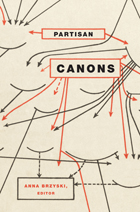 Partisan Canons
Anna Brzyski, ed.
Duke University Press, 2007 Whether it is being studied or critiqued, the art canon is usually understood as an authoritative list of important works and artists. This collection breaks with the idea of a singular, transcendent canon. Through provocative case studies, it demonstrates that the content of any canon is both historically and culturally specific and dependent on who is responsible for the canon’s production and maintenance. The contributors explore how, where, why, and by whom canons are formed; how they function under particular circumstances; how they are maintained; and why they may undergo change. Focusing on various moments from the seventeenth century to the present, the contributors cover a broad geographic terrain, encompassing the United States, France, Germany, the Netherlands, Poland, Taiwan, and South Africa. Among the essays are examinations of the working and reworking of a canon by an influential nineteenth-century French critic, the limitations placed on what was acceptable as canonical in American textbooks produced during the Cold War, the failed attempt to define a canon of Rembrandt’s works, and the difficulties of constructing an artistic canon in parts of the globe marked by colonialism and the imposition of Eurocentric ideas of artistic value. The essays highlight the diverse factors that affect the production of art canons: market forces, aesthetic and political positions, nationalism and ingrained ideas concerning the cultural superiority of particular groups, perceptions of gender and race, artists’ efforts to negotiate their status within particular professional environments, and the dynamics of art history as an academic discipline and discourse. This volume is a call to historicize canons, acknowledging both their partisanship and its implications for the writing of art history. Contributors. Jenny Anger, Marcia Brennan, Anna Brzyski, James Cutting, Paul Duro, James Elkins, Barbara Jaffee, Robert Jensen, Jane C. Ju, Monica Kjellman-Chapin, Julie L. McGee, Terry Smith, Linda Stone-Ferrier, Despina Stratigakos
A Partisan Church
Todd Scribner
Catholic University of America Press, 2015 In the wake of Vatican II and the political and social upheavals of the 1960s, disruption and disagreement rent the Catholic Church in America. Since then a diversity of opinions on a variety of political and religious questions found expression in the church, leading to a fragmented understanding of Catholic identity. Liberal, conservative, neoconservative and traditionalist Catholics competed to define what constituted an authentic Catholic worldview, thus making it nearly impossible to pinpoint a unique "Catholic position" on any given topic. A Partisan Church examines these controversies during the Reagan era and explores the way in which one group of intellectuals - well-known neoconservative Catholics such as George Weigel, Michael Novak, and Richard John Neuhaus - sought to reestablish a coherent and unified Catholic identity.
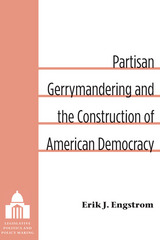 Partisan Gerrymandering and the Construction of American Democracy
Erik J. Engstrom
University of Michigan Press, 2016 Erik J. Engstrom offers a historical perspective on the effects of gerrymandering on elections and party control of the U.S. national legislature. Aside from the requirements that districts be continuous and, after 1842, that each select only one representative, there were few restrictions on congressional districting. Unrestrained, state legislators drew and redrew districts to suit their own partisan agendas. With the rise of the “one-person, one-vote” doctrine and the implementation of the Voting Rights Act of 1965, however, redistricting became subject to court oversight. Engstrom evaluates the abundant cross-sectional and temporal variation in redistricting plans and their electoral results from all the states, from 1789 through the 1960s, to identify the causes and consequences of partisan redistricting. His analysis reveals that districting practices across states and over time systematically affected the competitiveness of congressional elections, shaped the partisan composition of congressional delegations, and, on occasion, determined party control of the House of Representatives.
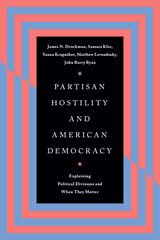 Partisan Hostility and American Democracy: Explaining Political Divisions and When They Matter
James N. Druckman, Samara Klar, Yanna Krupnikov, Matthew Levendusky, and John Barry Ryan
University of Chicago Press, 2024 An unflinching examination of the effects and boundaries of partisan animosity. For generations, experts argued that American politics needed cohesive parties to function effectively. Now many fear that strong partisan views, particularly hostility to the opposing party, are damaging democracy. Is partisanship as dangerous as we fear it is? To provide an answer, this book offers a nuanced evaluation of when and how partisan animosity matters in today’s highly charged, dynamic political environment, drawing on panel data from some of the most tumultuous years in recent American history, 2019 through 2021. The authors show that partisanship powerfully shapes political behaviors, but its effects are conditional, not constant. Instead, it is most powerful when politicians send clear signals and when an issue is unlikely to bring direct personal consequences. In the absence of these conditions, other factors often dominate decision-making. The authors argue that while partisan hostility has degraded US politics—for example, politicizing previously non-political issues and undermining compromise—it is not in itself an existential threat. As their research shows, the future of American democracy depends on how politicians, more than ordinary voters, behave.
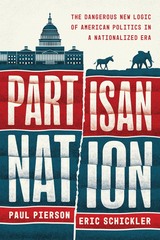 Partisan Nation: The Dangerous New Logic of American Politics in a Nationalized Era
Paul Pierson and Eric Schickler
University of Chicago Press, 2024 A provocative exploration of how America’s democratic crisis is rooted in a dangerous mismatch between our Constitution and today’s nationalized, partisan politics. The ground beneath American political institutions has moved, with national politics subsuming and transforming the local. As a result, American democracy is in trouble. In this paradigm-shifting book, political scientists Paul Pierson and Eric Schickler bring a sharp new perspective to today’s challenges. Attentive to the different coalitions, interests, and incentives that define the Democratic and Republican parties, they show how contemporary polarization emerged in a rapidly nationalizing country and how it differs from polarization in past eras. In earlier periods, three key features of the political landscape—state parties, interest groups, and media—varied locally and reinforced the nation’s stark regional diversity. But this began to change in the 1960s as the two parties assumed clearer ideological identities and the power of the national government expanded, raising the stakes of conflict. Together with technological and economic change, these developments have reconfigured state parties, interest groups, and media in self-reinforcing ways. The result is that today’s polarization is self-perpetuating—and intensifying. Partisan Nation offers a powerful caution. As a result of this polarization, America’s political system is distinctly and acutely vulnerable to an authoritarian movement emerging in the contemporary Republican Party, which has both the motive and the means to exploit America’s unusual Constitutional design. Combining the precision and acuity characteristic of their earlier work, Pierson and Schickler explain what these developments mean for American governance and democracy.
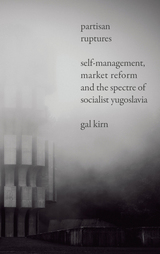 Partisan Ruptures: Self-Management, Market Reform and the Spectre of Socialist Yugoslavia
Gal Kirn
Pluto Press, 2019 Yugoslavia's twentieth-century bore witness to civil war, sharp ideological struggles and a series of 'partisan ruptures'; revolutionary events that changed the face of Yugoslavian society, politics and culture, which were felt on a global level. This book is a comprehensive historical and political analysis of the three major ruptures; the People's Liberation Struggle during World War Two, the self-management model and the Non-Aligned Movement. In order to understand what provoked and what came out of these revolutionary ruptures, Gal Kirn examines the implications of communism and socialism's productive relationship, the Yugoslavian 'experiment' of market socialism that marked the political and economic shift towards 'post-socialism' already in the 1960s, which crystallised new class coalitions that will later on - together with austerity politics - lead the way towards des-integration of Yugoslavia. Filling a much-needed gap in English language literature, this book's interrogation of the Yugoslav socialist experiment offers insights for left projects and democratic socialist discussions today, as well as historians of Yugoslavia and revolutionary movements.
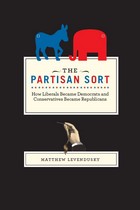 The Partisan Sort: How Liberals Became Democrats and Conservatives Became Republicans
Matthew Levendusky
University of Chicago Press, 2009 As Washington elites drifted toward ideological poles over the past few decades, did ordinary Americans follow their lead? In The Partisan Sort, Matthew Levendusky reveals that we have responded to this trend—but not, for the most part, by becoming more extreme ourselves. While polarization has filtered down to a small minority of voters, it also has had the more significant effect of reconfiguring the way we sort ourselves into political parties. In a marked realignment since the 1970s—when partisan affiliation did not depend on ideology and both major parties had strong liberal and conservative factions—liberals today overwhelmingly identify with Democrats, as conservatives do with Republicans. This “sorting,” Levendusky contends, results directly from the increasingly polarized terms in which political leaders define their parties. Exploring its far-reaching implications for the American political landscape, he demonstrates that sorting makes voters more loyally partisan, allowing campaigns to focus more attention on mobilizing committed supporters. Ultimately, Levendusky concludes, this new link between party and ideology represents a sea change in American politics.
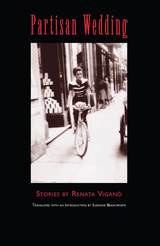 Partisan Wedding: Stories
Stories by Renata Vigano & Translated by Suzanne Branciforte
University of Missouri Press, 1999 A generation of Italian authors dedicated their lives, their works, and their voices to the primary driving force behind twentieth-century narratives of World War II. Renata Viganò was an active member of the Italian Resistance during World War II, and, like many of her male counterparts, she depicted the actions of the brave people who contributed to and participated in the partisan movement. Unlike her counterparts, however, Viganò vividly portrayed the experiences of women, notably women on the front line, in her posthumously published Matrimonio in brigata, here translated for the first time in English as Partisan Wedding. "If it had not been for them, the women . . . who got used to `men's business,' . . . the partisan army would have lost a vital, necessary force." The women in Partisan Wedding joined the struggle for many reasons; some for their husbands, others for their fathers, brothers, or sons; some for a sense of justice and the desire to do what was right. Whatever the cause, Viganò demonstrates that women maintained the ability to nurture and to care, to preserve their female qualities in the face of war. Because of her own role as a partisan, the stories in Partisan Wedding are based on Viganò's personal experiences. Two stories in the collection are specifically autobiographical: "Acquitted" and "My Resistance." Relating her own plight to find her husband, a partisan commander, after his sudden arrest, "Acquitted" aptly conveys Viganò's struggle to maintain her strength in the face of complete helplessness. "My Resistance" is a personal account of her own experiences during the war and the women she met along the way. Partisan Wedding is an invaluable contribution to the literature of the Second World War, completing the picture of those involved in the struggle for freedom. Viganò's remarkable prose, equally beautiful and terrible in its description of the minute details of human suffering and sacrifice, opens a window to a world that has rarely been seen, and a world not easily forgotten.
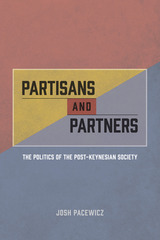 Partisans and Partners: The Politics of the Post-Keynesian Society
Josh Pacewicz
University of Chicago Press, 2016 There’s no question that Americans are bitterly divided by politics. But in Partisans and Partners, Josh Pacewicz finds that our traditional understanding of red/blue, right/left, urban/rural division is too simplistic.
Wheels-down in Iowa—that most important of primary states—Pacewicz looks to two cities, one traditionally Democratic, the other traditionally Republican, and finds that younger voters are rejecting older-timers’ strict political affiliations. A paradox is emerging—as the dividing lines between America’s political parties have sharpened, Americans are at the same time growing distrustful of traditional party politics in favor of becoming apolitical or embracing outside-the-beltway candidates. Pacewicz sees this change coming not from politicians and voters, but from the fundamental reorganization of the community institutions in which political parties have traditionally been rooted. Weaving together major themes in American political history—including globalization, the decline of organized labor, loss of locally owned industries, uneven economic development, and the emergence of grassroots populist movements—Partisans and Partners is a timely and comprehensive analysis of American politics as it happens on the ground.
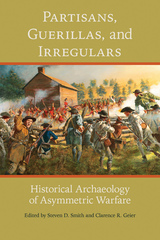 Partisans, Guerillas, and Irregulars: Historical Archaeology of Asymmetric Warfare
Edited by Steven D. Smith and Clarence R. Geier
University of Alabama Press, 2019 Essays that explore the growing field of conflict archaeology
Within the last twenty years, the archaeology of conflict has emerged as a valuable subdiscipline within anthropology, contributing greatly to our knowledge and understanding of human conflict on a global scale. Although archaeologists have clearly demonstrated their utility in the study of large-scale battles and sites of conventional warfare, such as camps and forts, conflicts involving asymmetric, guerilla, or irregular warfare are largely missing from the historical record.
Partisans, Guerillas, and Irregulars: Historical Archaeology of Asymmetric Warfare presents recent examples of how historical archaeology can contribute to a better understanding of asymmetric warfare. The volume introduces readers to this growing study and to its historic importance. Contributors illustrate how the wide range of traditional and new methods and techniques of historiography and archaeology can be applied to expose critical actions, sacrifices, and accomplishments of competing groups representing opposing philosophies and ways of life, which are otherwise lost in time.
The case studies offered cover significant events in American and world history, including the French and Indian War, the American Revolution, Indian wars in the Southeast and Southwest, the Civil War, Reconstruction, Prohibition, and World War II. All such examples used here took place at a local or regional level, and several were singular events within a much larger and more complex historic movement. While retained in local memory or tradition, and despite their potential importance, they are poorly, and incompletely addressed in the historic record. Furthermore, these conflicts took place between groups of significantly different cultural and military traditions and capabilities, most taking on a “David vs. Goliath” character, further shaping the definition of asymmetric warfare.
Partisans: Marriage, Politics, and Betrayal Among the New York Intellectuals
David Laskin
University of Chicago Press, 2001 Combining literary biography with astute reporting and moral insight, David Laskin shows how sex, politics, and art affected relationships among the Partisan Review writers: Mary McCarthy, Edmund Wilson, Philip Rahv, Robert Lowell, Jean Stafford, Elizabeth Hardwick, Hannah Arendt, Allen Tate, Caroline Gordon, and Diana Trilling. It is the women who steal the show with their their groundbreaking work, their harrowing experiences of marriage, abuse, and betrayal, their passion for writing and disdain for feminism, their struggles and achievements.
 Partisans of Allah: Jihad in South Asia
Ayesha Jalal
Harvard University Press, 2008 The idea of jihad is central to Islamic faith and ethics, and yet its meanings have been highly contested over time. They have ranged from the philosophical struggle to live an ethical life to the political injunction to wage war against enemies of Islam. Today, more than ever, jihad signifies the political opposition between Islam and the West. As the line drawn between Muslims and non-Muslims becomes more rigid, Ayesha Jalal seeks to retrieve the ethical meanings of this core Islamic principle in South Asian history.
Drawing on historical, legal, and literary sources, Jalal traces the intellectual itinerary of jihad through several centuries and across the territory connecting the Middle East with South Asia. She reveals how key innovations in modern Islamic thought resulted from historical imperatives. The social and political scene in India before, during, and after British colonial rule forms the main backdrop. We experience the jihad as armed warfare waged by Sayyid Ahmad of Rai Bareilly between 1826 and 1831, the calls to jihad in the great rebellion of 1857, the fusion of jihad with a strand of anti-colonial nationalism in the early twentieth century, and the contemporary politics of self-styled jihadis in Pakistan, waging war to liberate co-religionists in Afghanistan and Kashmir.
Partisans of Allah surveys this rich and tumultuous history of South Asian Muslims and its critical contribution to the intellectual development of the key concept of jihad. Analyzing the complex interplay of ethics and politics in Muslim history, the author effectively demonstrates the preeminent role of jihad in the Muslim faith today.
Partition: How and Why Ireland was Divided
Ivan Gibbons
Haus Publishing, 2022 Gibbons uncovers the origins of the Partition of Ireland.
The Partition of Ireland in 1921, which established Northern Ireland and saw it incorporated into the United Kingdom, sparked immediate civil war and a century of unrest. Today, the Partition remains the single most contentious issue in Irish politics, but its origins—how and why the British divided the island—remain obscured by decades of ensuing struggle.
Cutting through the partisan divide, Partition takes readers back to the first days of the twentieth century to uncover the concerns at the heart of the original conflict. Drawing on extensive primary research, Ivan Gibbons reveals how the idea to divide Ireland came about and gained popular support as well as why its implementation proved so controversial and left a century of troubles in its wake.
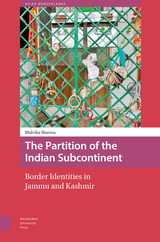 The Partition of the Indian Subcontinent: Border Identities in Jammu and Kashmir
Malvika Sharma
Amsterdam University Press, 2025 Pir-Panjals, the Himalayan ranges in Jammu and Kashmir, are home to various communities known for their distinctiveness, heterogeneity and diversity. Such diversity is historically embedded in the fluidity embodied by folds of Panjals. These folds encapsulated social, cultural, and religious plurality within the principalities that thrived here. The Partition of 1947 profoundly altered this by carving lines of demarcation—present day line-of-control—into the landscape. These lines have territorially, religiously and culturally divided ethnicities, including the Paharis of Poonch, known for multi-religious and linguistic cohesion. This book examines Partition’s impact on these pockets of diversity by exploring how Partition’s borders continue to shape social, symbolic and religious boundaries and how these boundaries impact shared plurality here. The work emphasizes the need to identify and archive sources of plurality so that their cultivation and practice continue to counter “the binaries” that essentially homogenize life-ways into categories of us versus them.
 Partitioning Bazaar Art: Popular Visual Culture of India and Pakistan around 1947
Yousuf Saeed
Seagull Books, 2023 Offers insight into the links between the development of print culture and the many dynamic strains of nationalism in dialogue during the Partition of the Indian subcontinent in 1947.
How did inexpensive posters influence nationalism in the decades leading up to and succeeding the Partition of the Indian subcontinent in 1947? If mechanically reproduced images that occupy public spaces reflect the aesthetics of the “masses,” what can a critical interpretation of subcontinental popular visual culture in the mid-twentieth century reveal about the formation of communal identities?
In this essay, Yousuf Saeed studies the selective deification of leaders fighting for Indian independence. He highlights the biased representation within the domain of “patriotic” posters of the time and the evolving portrayal of religious minority communities in India’s popular print culture over subsequent decades. Also charts the turn popular print culture took in post-Partition Pakistan, Saeed focuses on the country’s thriving industry of Sufi-saint posters. Partitioning Bazaar Art is a timely exploration of how nationalism can be defined through popular imagery.
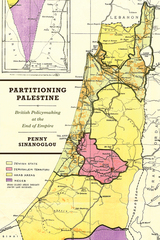 Partitioning Palestine: British Policymaking at the End of Empire
Penny Sinanoglou
University of Chicago Press, 2019 Partitioning Palestine is the first history of the ideological and political forces that led to the idea of partition—that is, a division of territory and sovereignty—in British mandate Palestine in the first half of the twentieth century. Inverting the spate of narratives that focus on how the idea contributed to, or hindered, the development of future Israeli and Palestinian states, Penny Sinanoglou asks instead what drove and constrained British policymaking around partition, and why partition was simultaneously so appealing to British policymakers yet ultimately proved so difficult for them to enact. Taking a broad view not only of local and regional factors, but also of Palestine’s place in the British empire and its status as a League of Nations mandate, Sinanoglou deftly recasts the story of partition in Palestine as a struggle to maintain imperial control. After all, British partition plans imagined space both for a Zionist state indebted to Britain and for continued British control over key geostrategic assets, depending in large part on the forced movement of Arab populations. With her detailed look at the development of the idea of partition from its origins in the 1920s, Sinanoglou makes a bold contribution to our understanding of the complex interplay between internationalism and imperialism at the end of the British empire and reveals the legacies of British partitionist thinking in the broader history of decolonization in the modern Middle East.
 Partitioning Palestine: Legal Fundamentalism in the Palestinian-Israeli Conflict
John Strawson
Pluto Press, 2010 Law lies at the roots of the Palestinian-Israeli conflict. Jews sought a national home by “Public Law” while Palestinians reject the project as illegal. Britain, the League of Nations and the United Nations all mobilised international law to justify their interventions. After the 1967 war, Israel organised an occupation with excessive legalism that most of the world viewed, in fact, as illegal.
Partitioning Palestine focuses on three key moments in the Palestinian-Israeli conflict: the League of Nations Mandate, the United Nations partition plan and the Oslo agreements. None of these documents are neutral but, rather, encode a variety of meanings. The book traces the way in which these legal narratives have both shaped national identity and sharpened the conflict.
In this pioneering text, John Strawson argues that a committed attachment to the belief in legal justice has hampered the search for a settlement. Law, far from offering conflict resolution, has reinforced the trenches from which Palestinians and Israelis confront one another.
 Partnering with Extremists: Coalitions between Mainstream and Far-Right Parties in Western Europe
Kimberly A. Twist
University of Michigan Press, 2019 As long as far-right parties—known chiefly for their vehement opposition to immigration—have competed in contemporary Western Europe, many have worried about these parties’ acceptability to democratic voters and mainstream parties. Yet, rather than treating the far right as pariahs, major mainstream-right parties have included the far right in 15 governing coalitions from 1994 to 2017. Parties do not care equally about all issues at any given time, and Kimberly Twist demonstrates that far-right parties will agree to support the mainstream right’s goals more readily than many other parties, making them appealing partners. Partnering with Extremists builds on existing work on coalition formation and party goals to propose a theory of coalition formation that works across countries and over time. The evidence comes from 19 case studies of coalition formation in Austria and the Netherlands, countries where far-right parties have been excluded when they could have been included and included when the mainstream right had other options. The argument is then extended to countries where coalitions are less common, France and the United Kingdom, and to cases of mainstream-right adoption of far-right themes. Twist incorporates both office and policy considerations in her argument and reimagines “policy” to be a two-dimensional factor; it matters not just where parties are located on an issue but how firmly they hold those positions.
|
|

